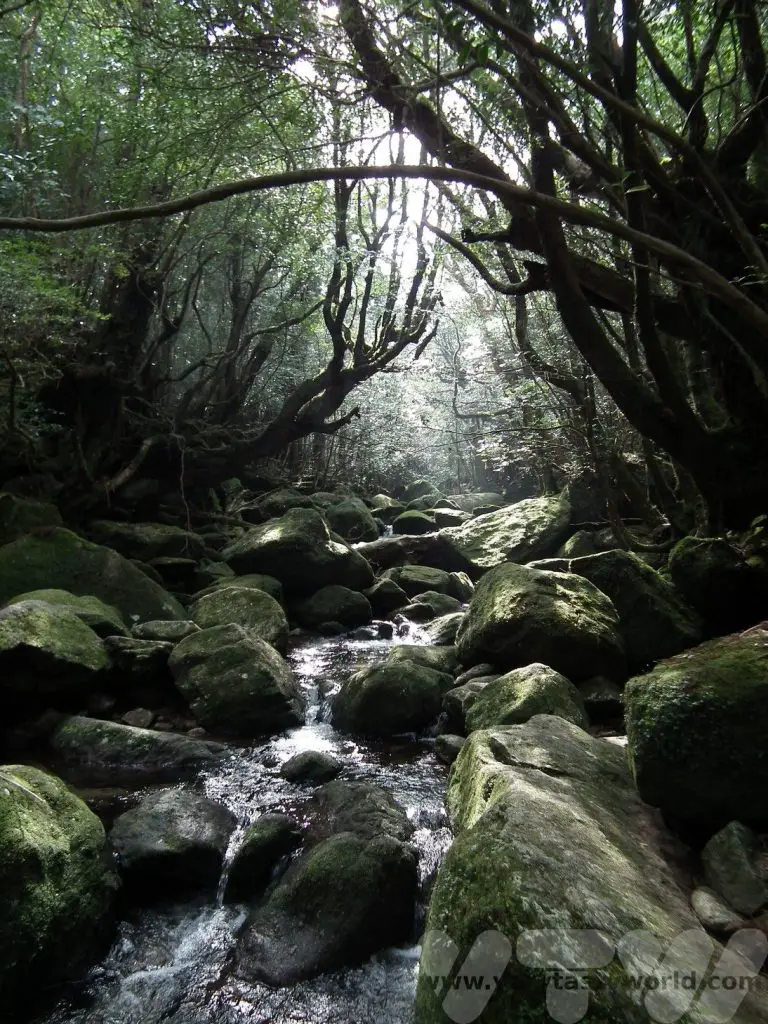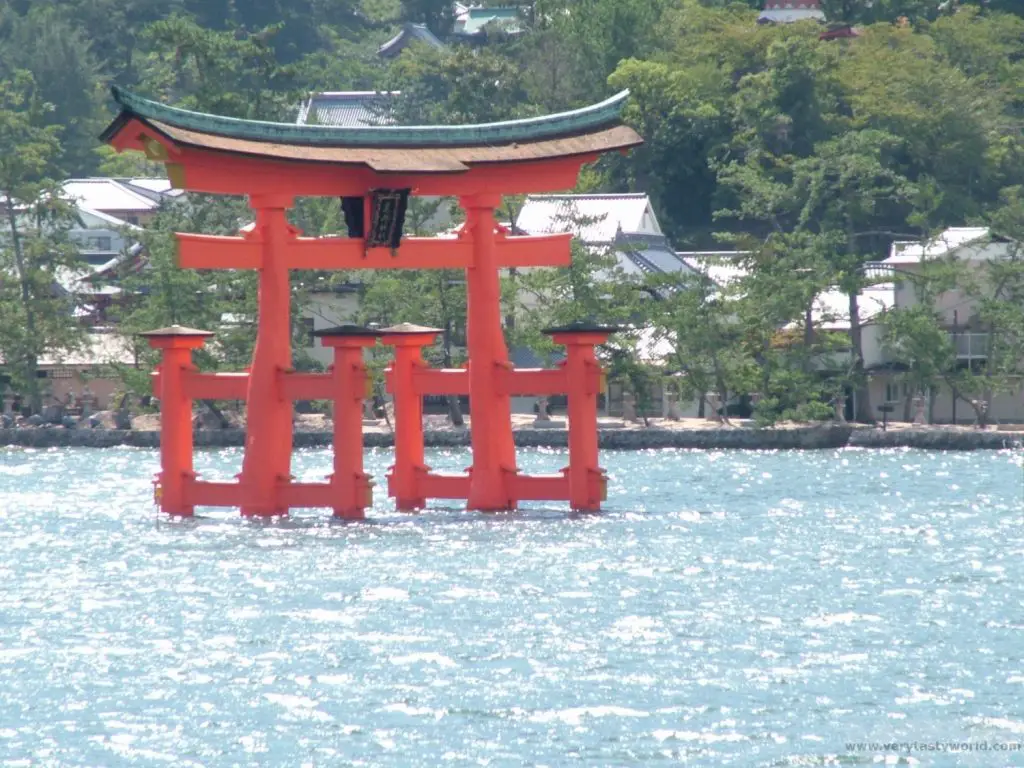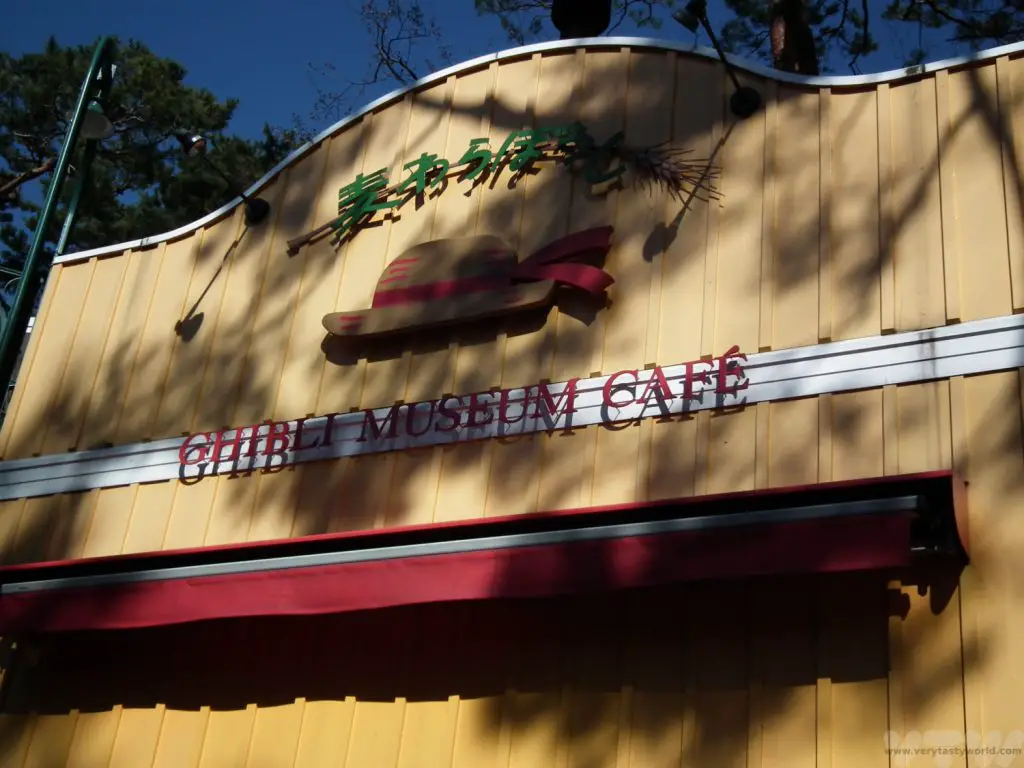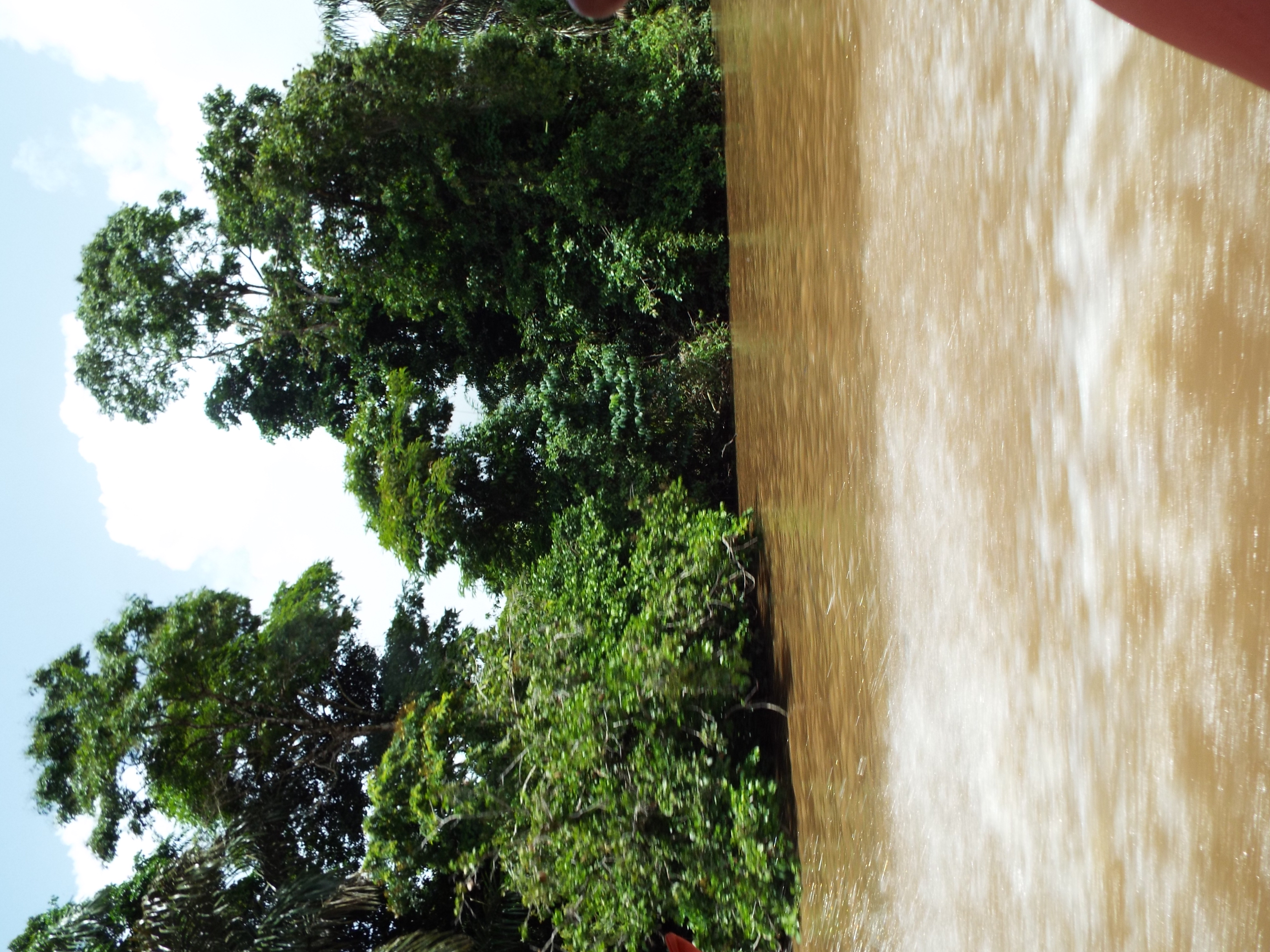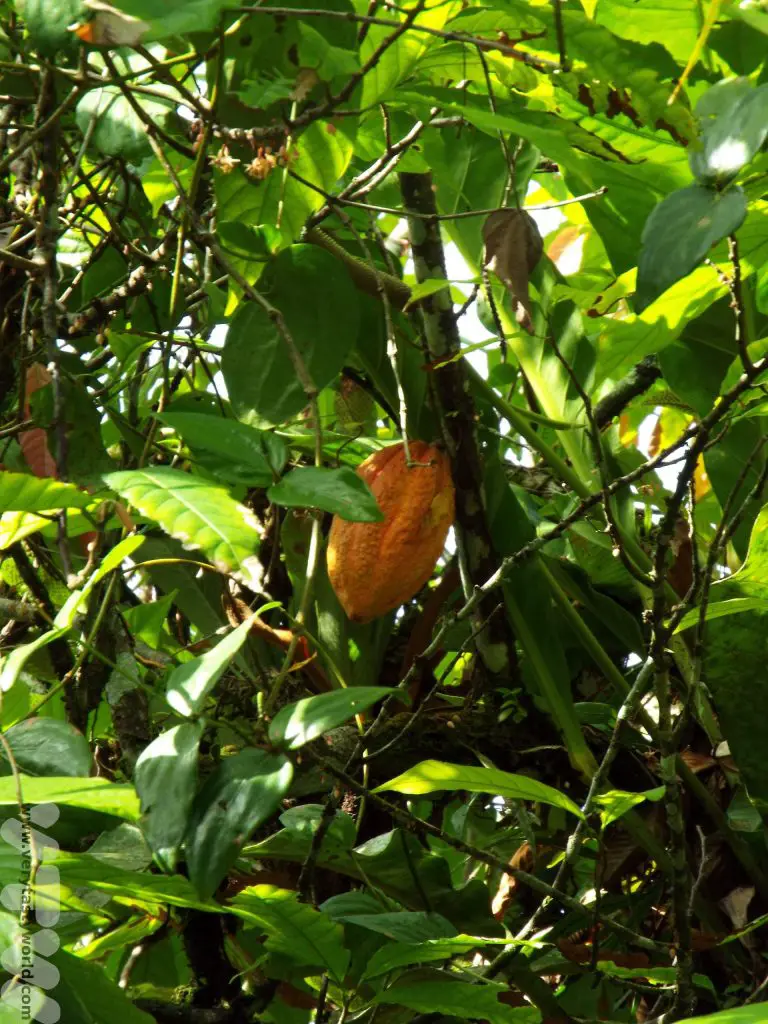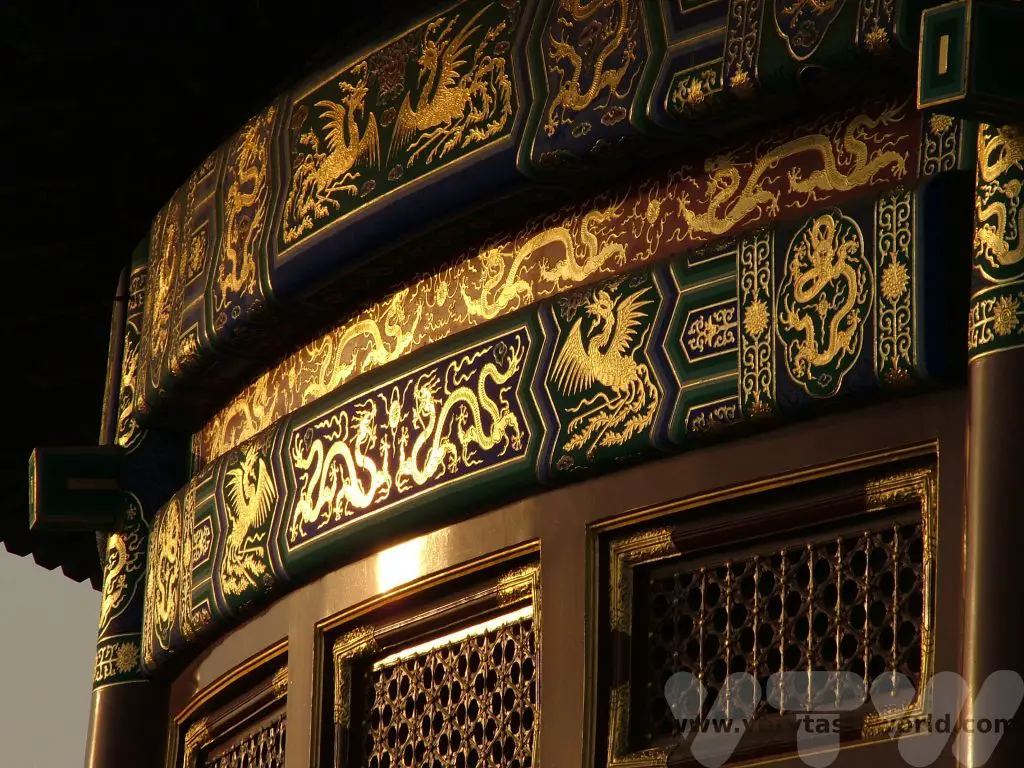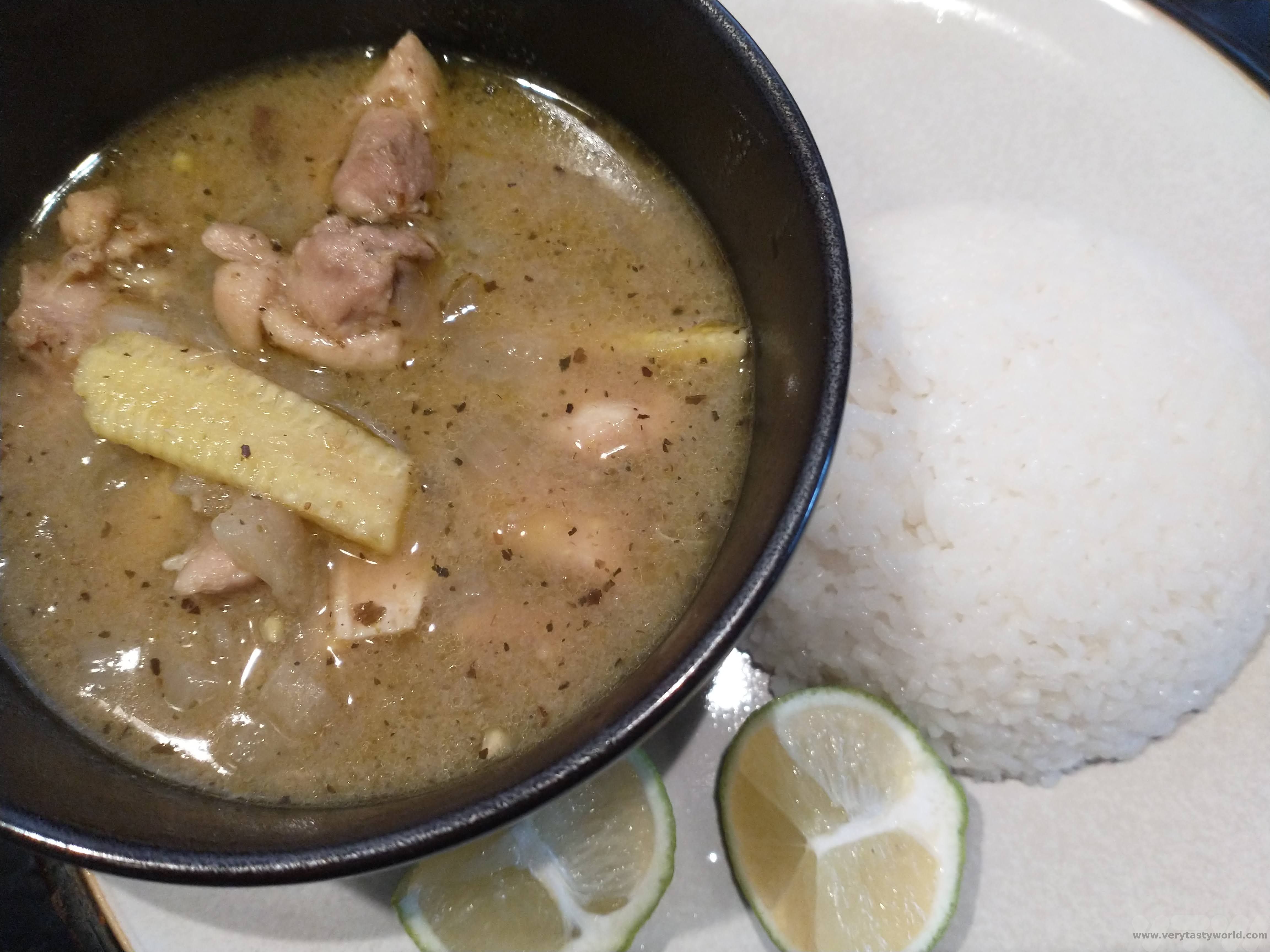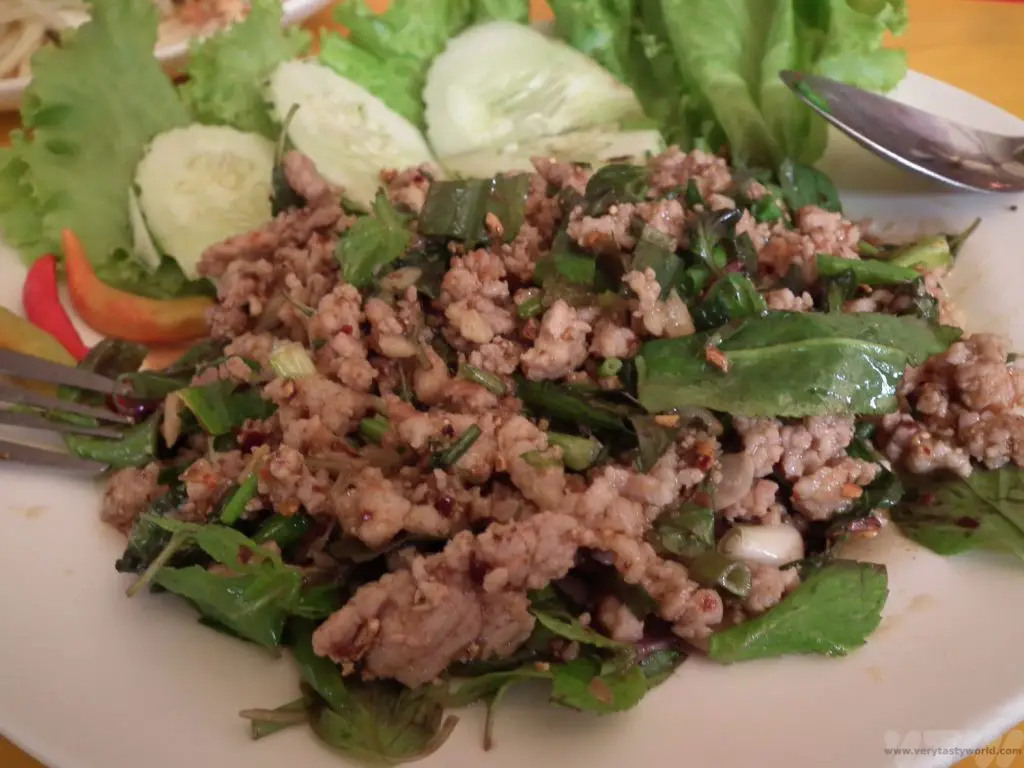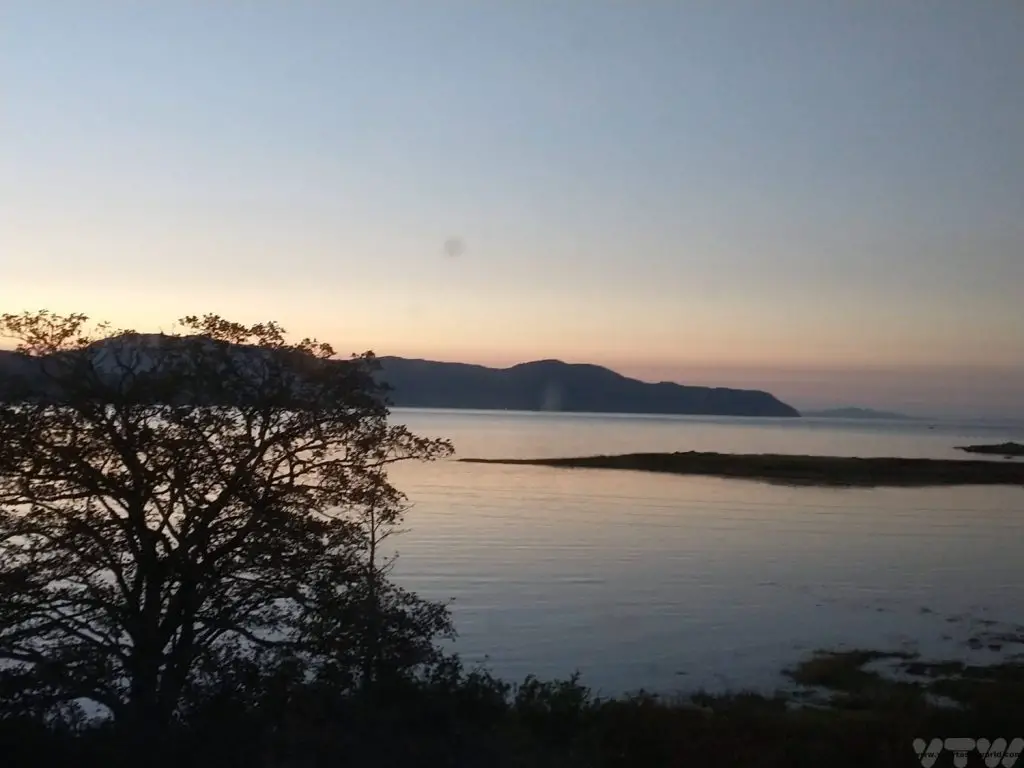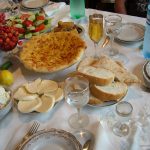Home » Posts tagged 'food'
Tag Archives: food
Happy New Year of the Rabbit
Year of the Rabbit begins 22nd January 2023 and celebrations will ensue.
Like many festivals all over the world, such as Diwali, Eid and Easter, Chinese New Year is derived from the lunar calendar and is celebrated with food, family reunions and festivities.
The animals associated with the years are based upon the Chinese horoscope. All twelve signs of the Chinese zodiac have different symbols and it is thought that people’s character traits can be reflected in those born in a particular year.

So the personality traits for someone born in the Year of the Rabbit could be deemed to be quiet, elegant, kind and responsible. The characteristics of Very Tasty World’s founders could be reflected in their zodiac animals because VTW has a compassionate, generous and very diligent Pig associating with a sharp, smart, recondite cheeky Monkey.

Our visit to China during the latter part of the New Year celebrations, known as Spring Festival, some years ago can be found in the post Gong Xi Fa Cai or Gung Hay Fat Choy! Happy New Year! It was a joyful time.
Food For the Festivities
Like many annual celebrations and gatherings this is the time for family and food with wide celebrations. Reunions and recipes join together in sociability and culinary joy.
Some of the more popular traditional dishes associated with lunar new year in China include a whole fish cooked with ginger, garlic and spring onion. Jiaozi – dumplings- represent coins which symbolise prosperity throughout the year. Long noodles suggest longevity and happiness and spring rolls signify wealth.
We have a recipe for baked whole fish cooked with ginger, garlic and spring onions using sea bass. The fish is always served whole as the head and tail represent the start and end of the year.

And it’s not all savoury. Sweet glutinous rice cakes suggest the possibility of moving up in the world and sweet rice balls which represent family harmony. Happy New Year!

- RECIPE Oyakodon Donburi
- Zero Waste Recipes Before Your Holiday
- RECIPE: Vegetable Biryani Tamil Nadu Style
- RECIPE: Vegan Wild Garlic Pesto
- Recipe: Venetian Pasta Sauce
- RECIPE: Biryani Raita Recipe
- RECIPE: How to Make Costa Rica’s Gallo Pinto
- Recipe: Japanese Simmered Pork Belly – Buta no Kakuni
- RECIPE: How to Make Umeboshi
The Gassho Farmhouses of Rural Japan
It’s not often that we use the word ‘unique’ because very often things described as such usually aren’t. Unique, that is. But there are some villages in rural Japan that are the only examples of their kind and they offer a fantastic glimpse into traditional life in the Japanese countryside.
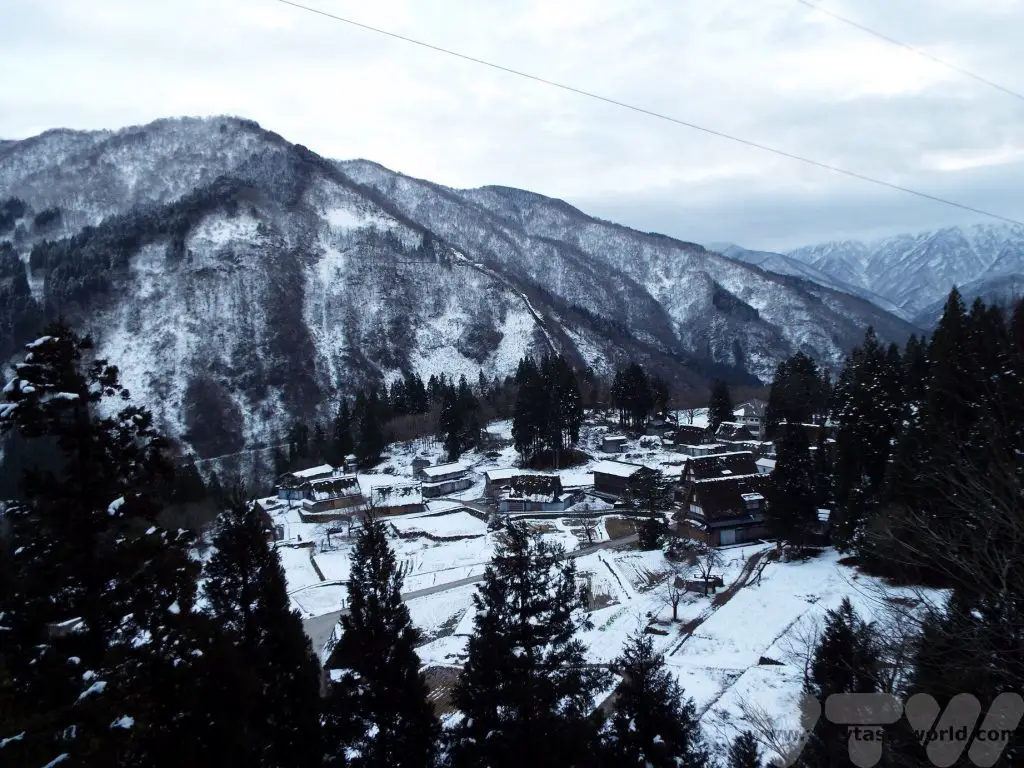
The historic mountain villages of Shirakawa-go and Gokayama have been designated as UNESCO heritage sites and were historically quite isolated from the rest of the world. The villages Ogimachi in Shirakawa-go, and Ainokura and Suganuma in the Gokayama region are located in central Honshu, on the Shogawa river valley, across the borders of the Gifu and Toyama Prefectures.
Ogimachi is probably the most famous of the villages and is known for its light-up events, where the whole village turns their lights on in winter-time and visitors come from far and wide to marvel at the beauty of a snowy wonderland. These are scheduled events and hugely popular. Reservation is essential, not only for staying in the village but also for attending the viewing and some transportation options.
Initially when planning our winter trip we thought that Ogimachi would be the obvious place to visit but unfortunately everybody else thinks that too. It was impossible to find accommodation in this lovely village, even when trying to book several months in advance. But we had a Plan B which worked very well indeed. Ainokura is smaller and quieter but similarly delightful.
Getting to Ainokura in Rural Japan
We had been staying in a business hotel in the lovely city of Kanazawa on the western coast of Japan and, as we planned to return there, left our main luggage at the hotel and just took an overnight bag with us. We then caught the shinkansen (bullet train) from Kanazawa to Shin-Takoaka. It is possible to catch a bus to Ainokura from Shin-Takoaka – the journey takes just over an hour or so – but we caught possibly the cutest train ever to Johana and caught our bus from there.


Ainokura can also be reached from Toyama. The shinkansen goes to Toyama and it’s possible to catch a bus from there. It is feasible to visit the village as a day trip from both Takoaka and Toyama but we recommend staying overnight.
Our bus to Ainokura left from Johana station and we embarked on a pleasant journey through the Japanese countryside. A short walk from the main road took us into the village.
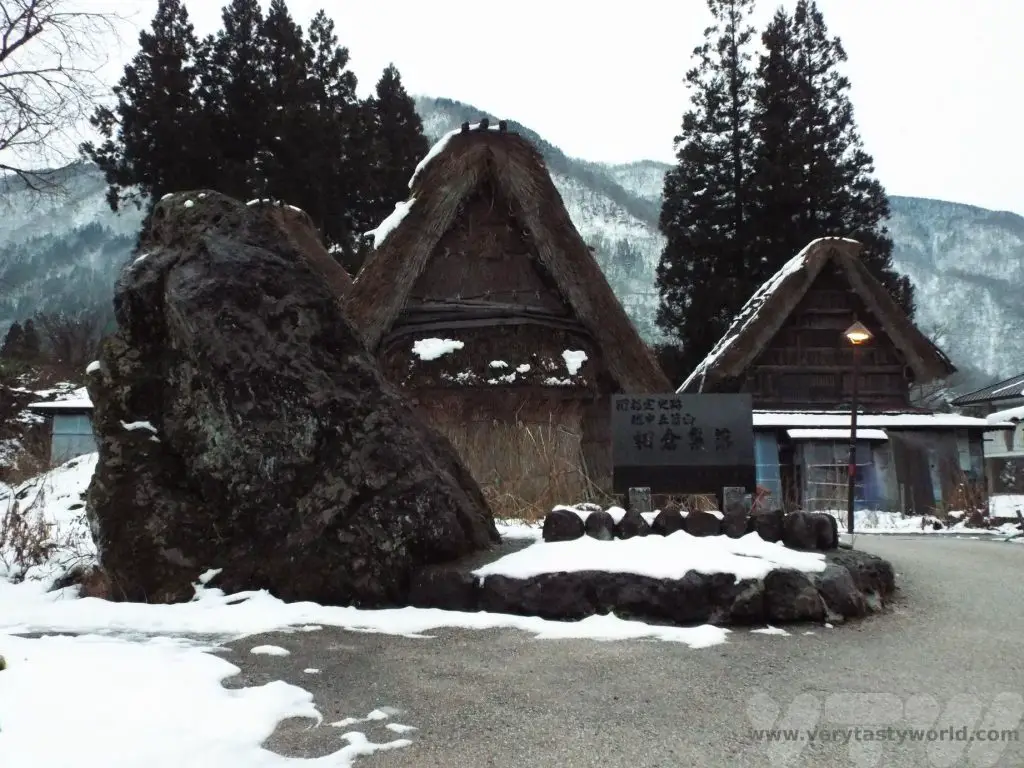
A word of warning: If you are visiting during the winter the area can experience a lot of snowfall – 2-3 metres on occasion. This may mean that occasionally buses can’t get through and are delayed until the roads can be cleared. It’s worth bearing this in mind when planning your onward journey.
Staying in a Gassho Farmhouse
The farmhouses are called ‘gassho’ which means ‘joining hands in prayer’ due to their very steeply pitched thatched roofs. Because the area experiences such heavy snow in winter, the roof design ensures that snow falls off the building quickly and this helps prevent the structure being crushed by its weight.
The houses have three or four levels – the top levels are not living areas but used for various industrial or farming purposes, such as making washi paper or rearing silkworms.
The front and back have a large gable with windows to let the light in.
We booked a room at Yomoshiro ryokan, a delightful family run house.
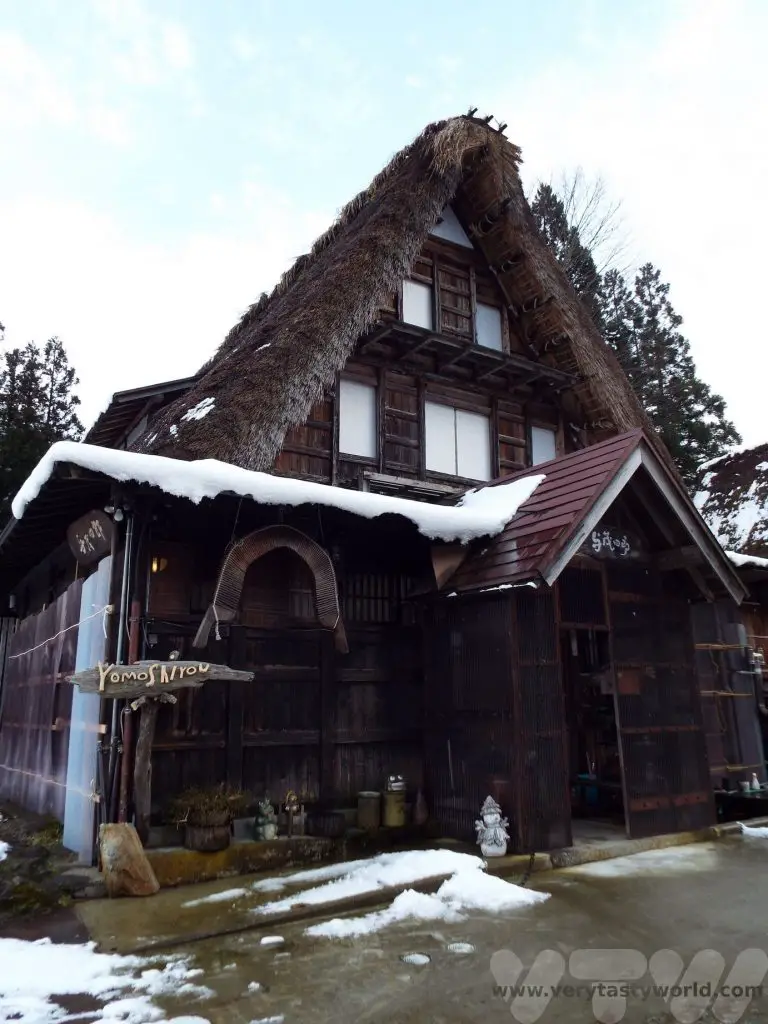
On arrival we took off our shoes and were offered an array of indoor slippers to wear. This is very common in all Japanese households, it’s considered very rude to wear outdoor shoes inside a house.
Our hosts were lovely and very welcoming. We were offered a cup of warm tea and a biscuit in the living area.
The living area has a sunken fire with a kettle suspended above the embers. The room was warm and toasty.
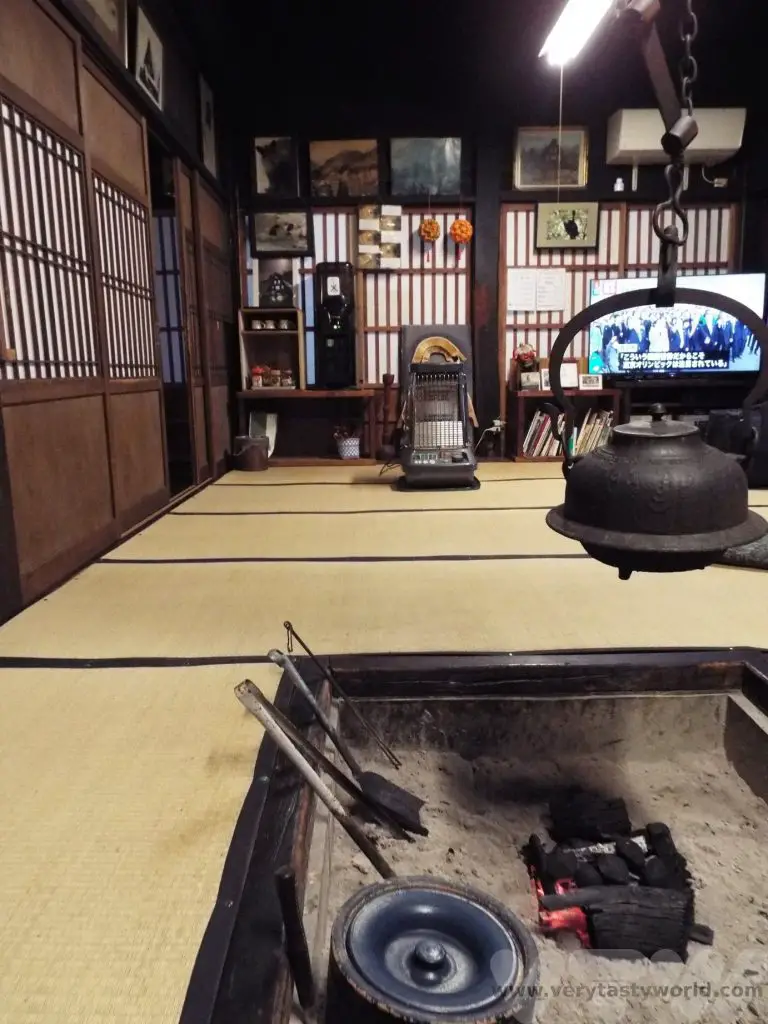
Our room was in traditional style with tatami (reed) mat and futon bedding on the flooring. Usually the bed is laid out while you are enjoying dinner.

The bathroom and toilet were shared with other guests and one thing that you need to remember in Japan is to change your indoor slippers for bathroom slippers when you use the bathroom or toilet. And change them back – it is really easy to forget to change the slippers back and walking on the tatami in your bathroom slippers is like walking inside in your outdoor shoes.
Exploring the Village
We visited the day that our hosts reopened their accommodation after the new year holiday so unfortunately some of the attractions in the area weren’t yet open. There is a museum of traditional industries which demonstrates the paper making and silk activities of the region.
The village also has a folk museum that showcases traditional utensils, tools and musical instruments from the region.
There are a number of walks in the area. One of these is essential – a viewing area close to the village entrance where you can climb up the hillside to take that perfect shot of the village, nestled amidst the mountains.
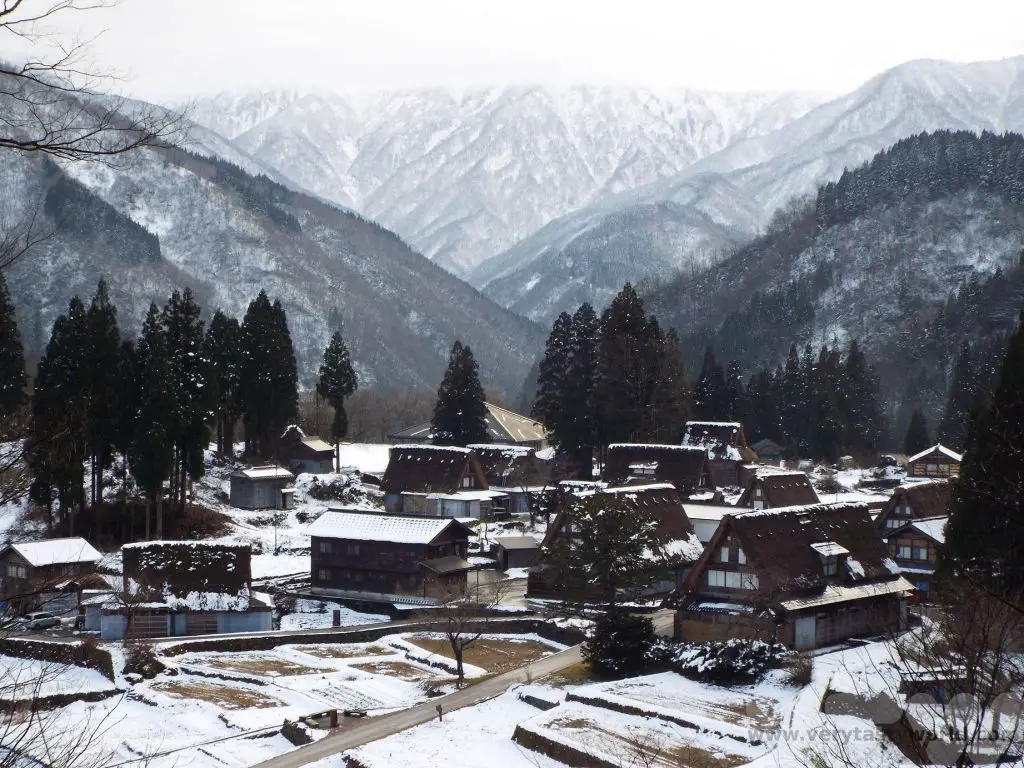
Back to the Gassho for Dinner
The costs of our stay included dinner and breakfast and this was a highlight of the visit as the food on offer was locally sourced, some even grown by our hosts. We dined with the other guests in the living area.
Our home-cooked dinner was utterly delicious. Char, a fish a bit like a trout, was salted and roasted on a spit in the fire.
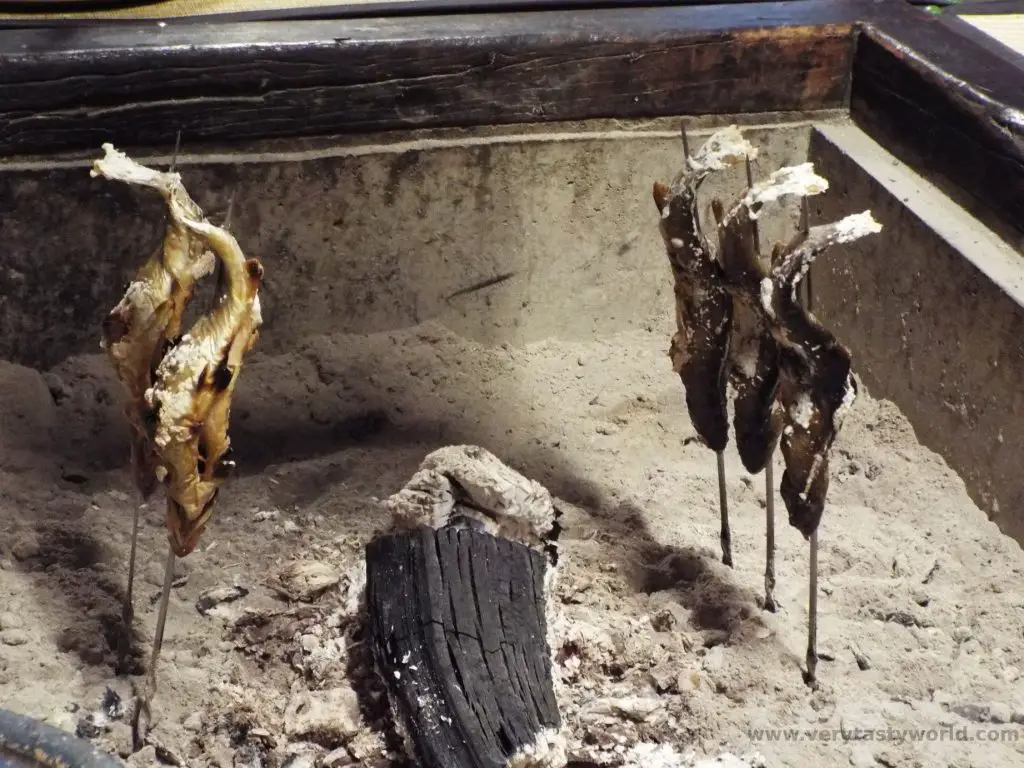
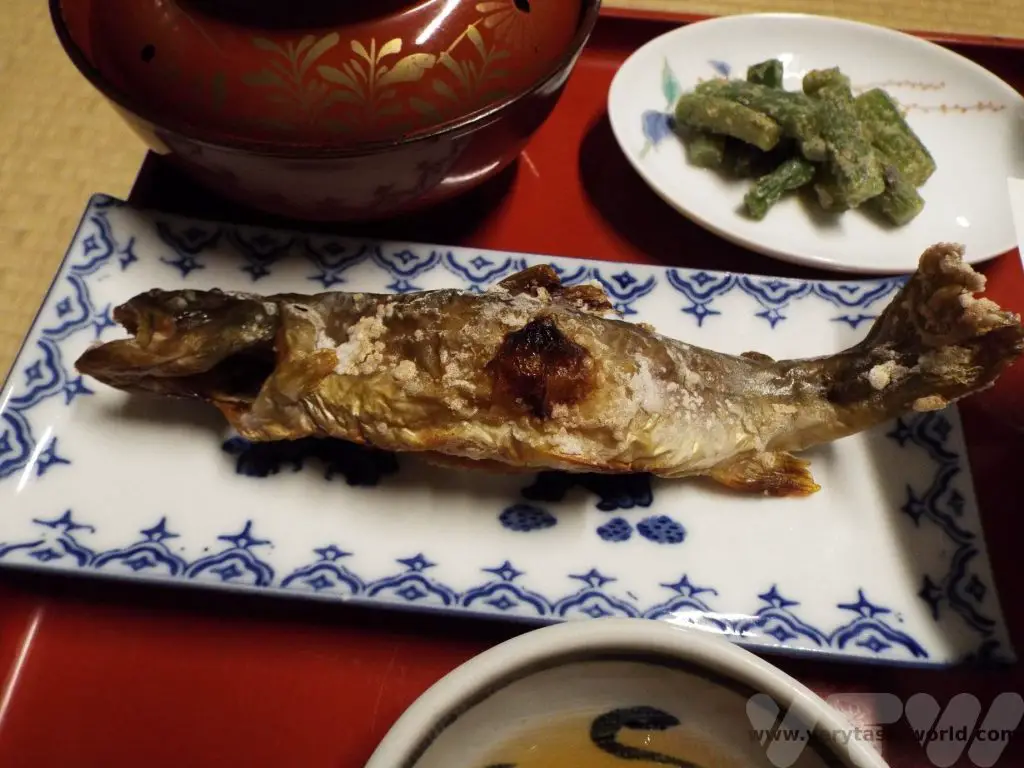
We were also served koi sashimi, vegetable tempura and a home-grown spaghetti squash, mountain greens, and simmered bamboo shoots, mushrooms and sweet potato.
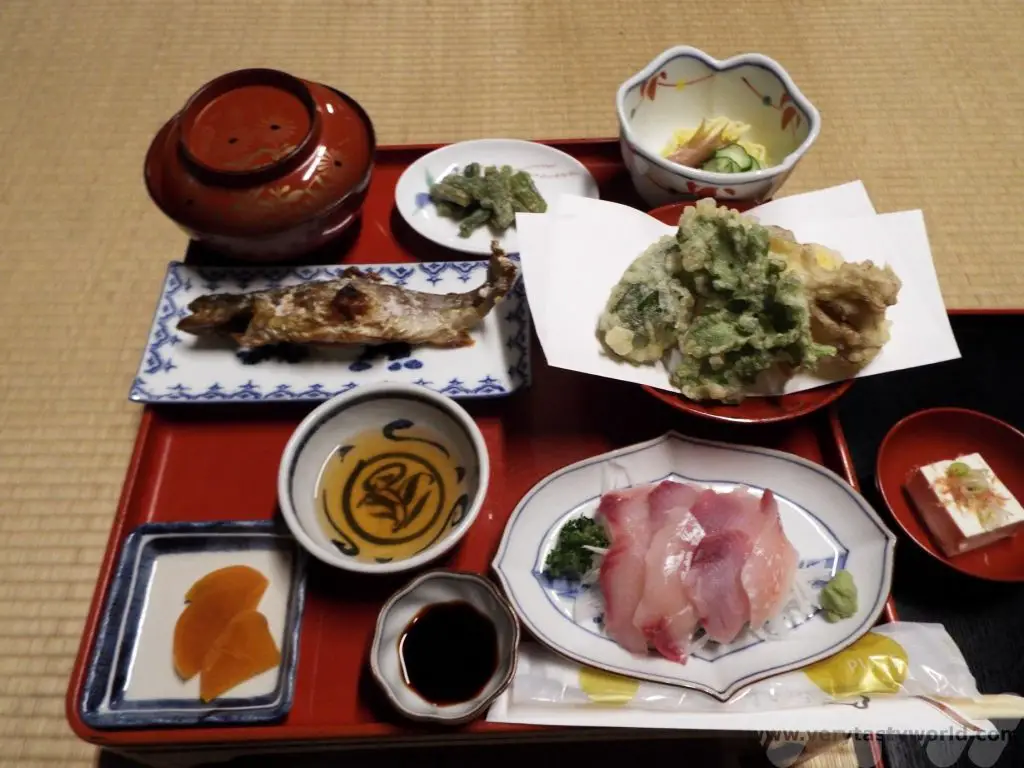
Rice accompanied the meal and we also enjoyed some local sake.
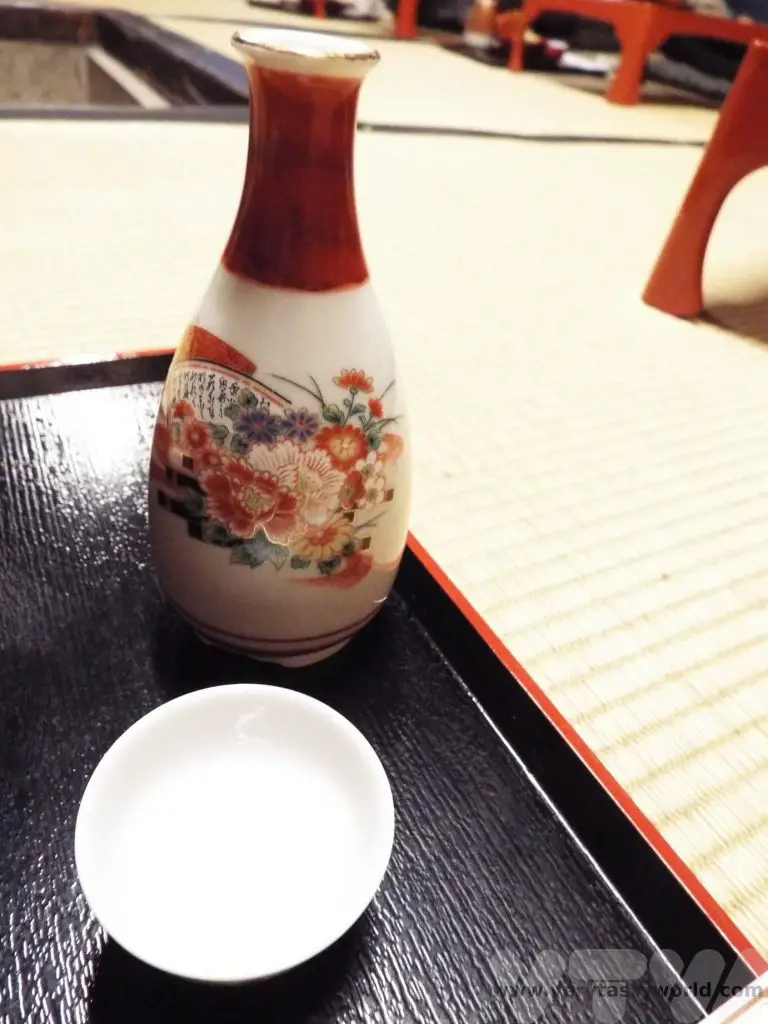
After dinner we were entertained with a documentary about the villages and then our hosts played some music using traditional instruments.
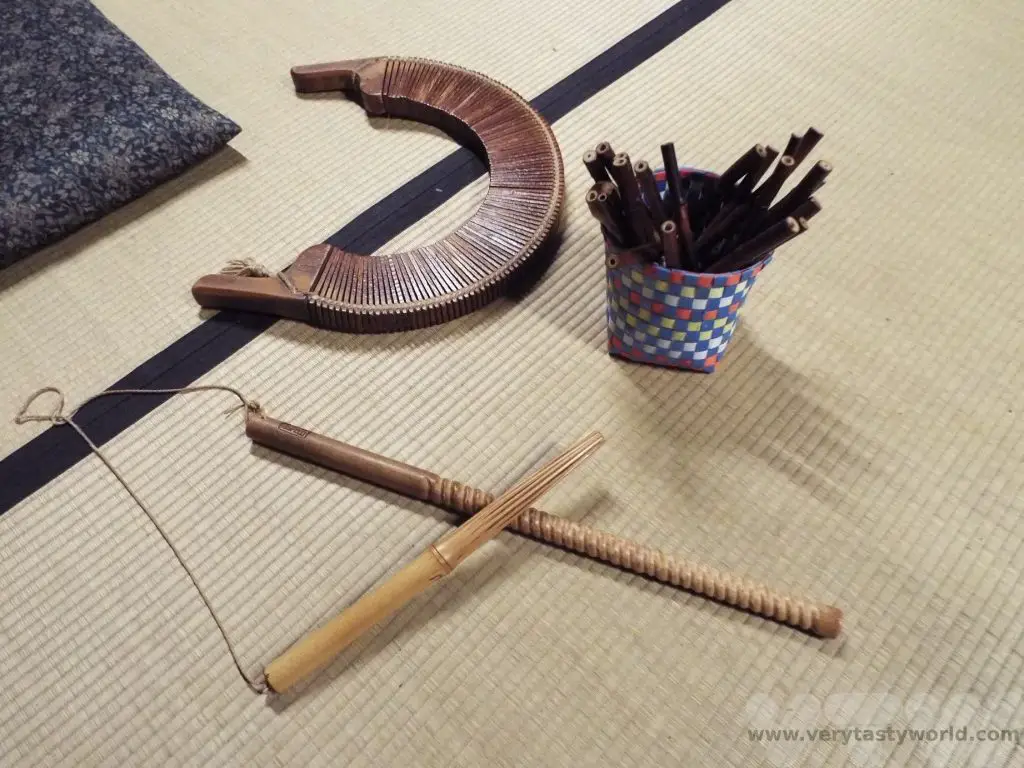
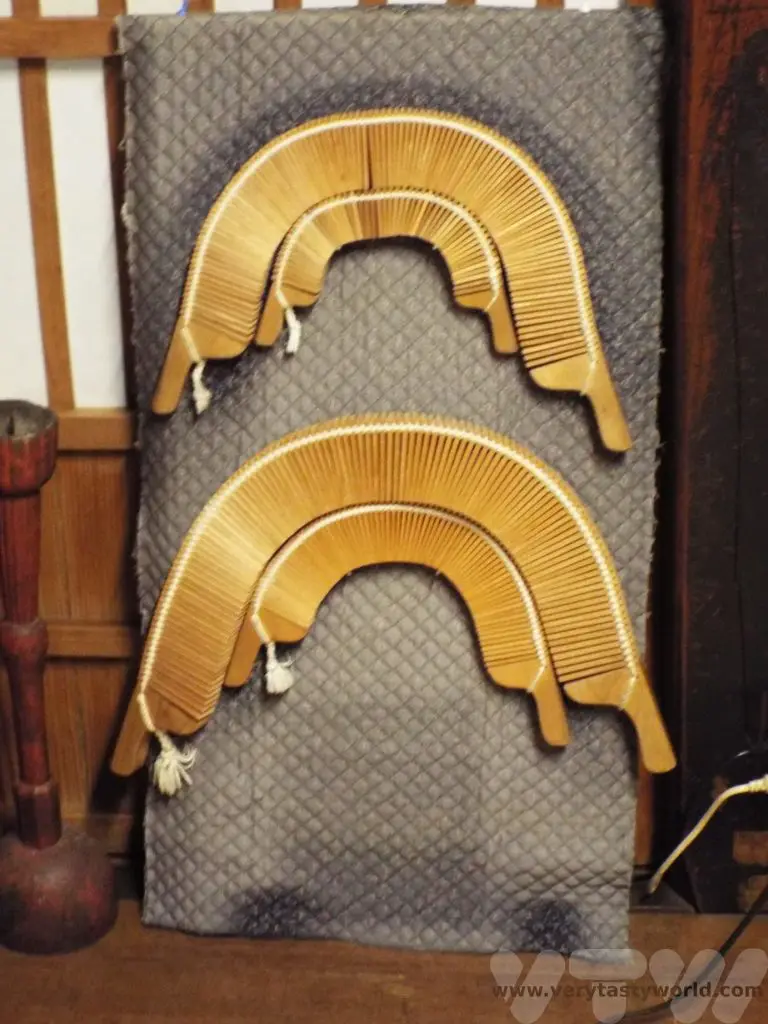
A lot of these are percussion, notably the sasara which comprises many wooden clappers which are strung together.
A Cosy Night’s Sleep
At bedtime we were provided with hot stones to put into our futons.
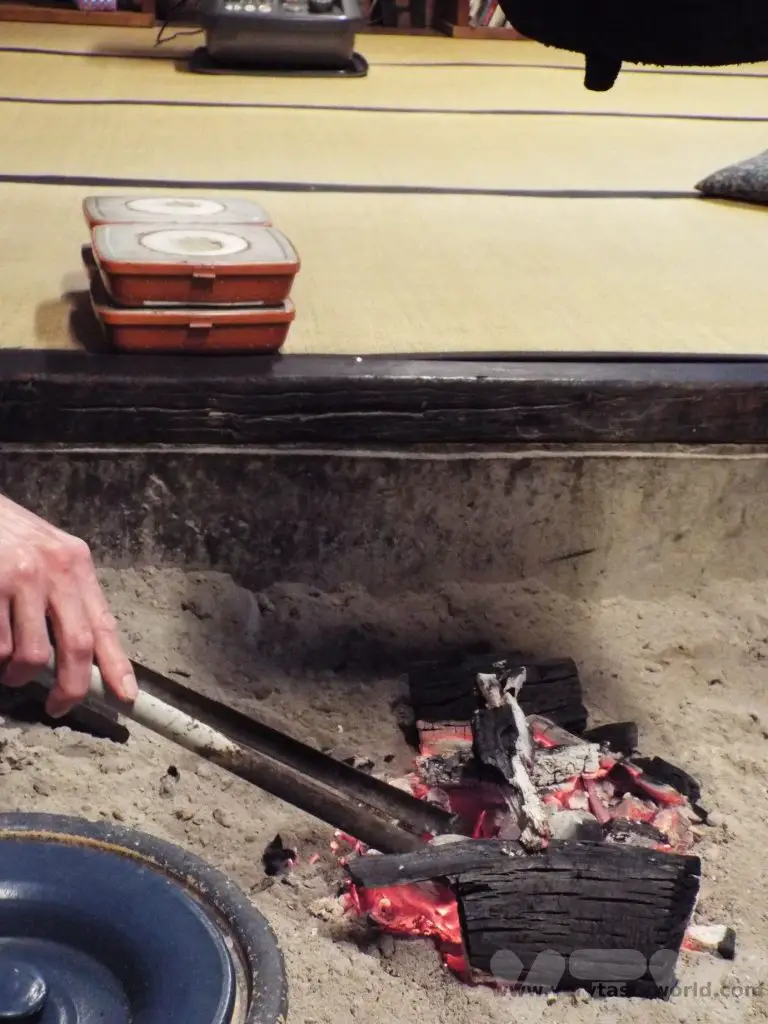
These stones had been heated in the fire and were placed inside ceramic boxes then wrapped in a thick cloth.
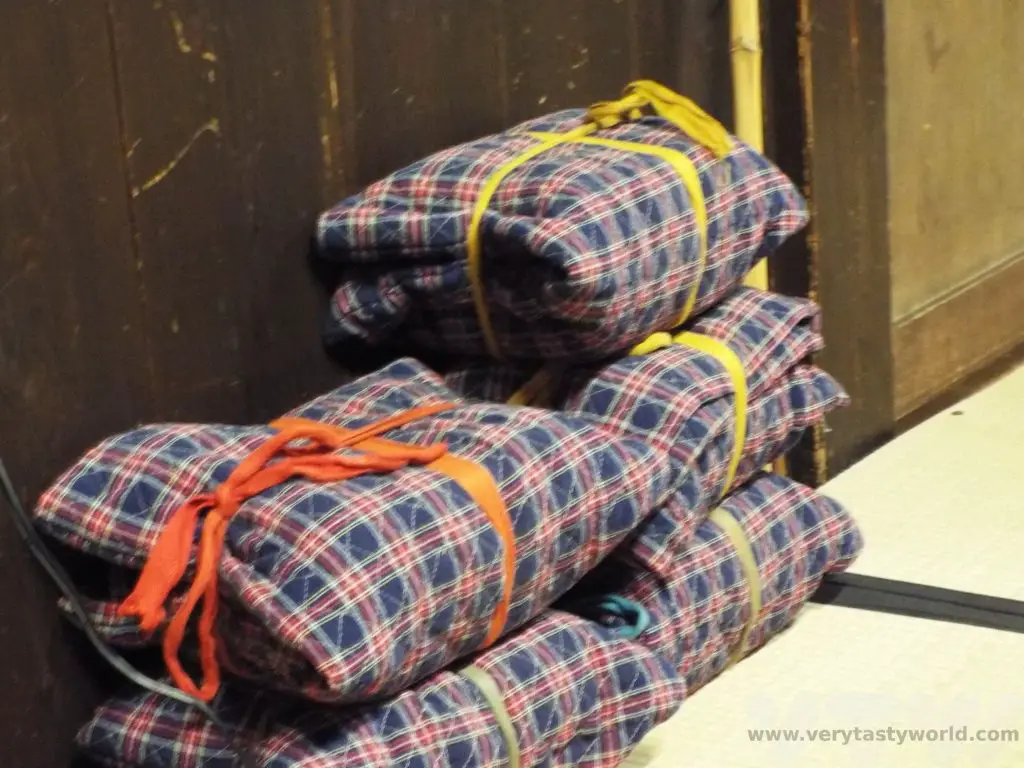
These were better than any hot water bottle we’d ever used, they retained the heat so well – they actually felt as though they were getting warmer through the night.
Breakfast the following morning was a traditional Japanese meal and also delicious. There were lots of fresh vegetable dishes, rice and miso soup.
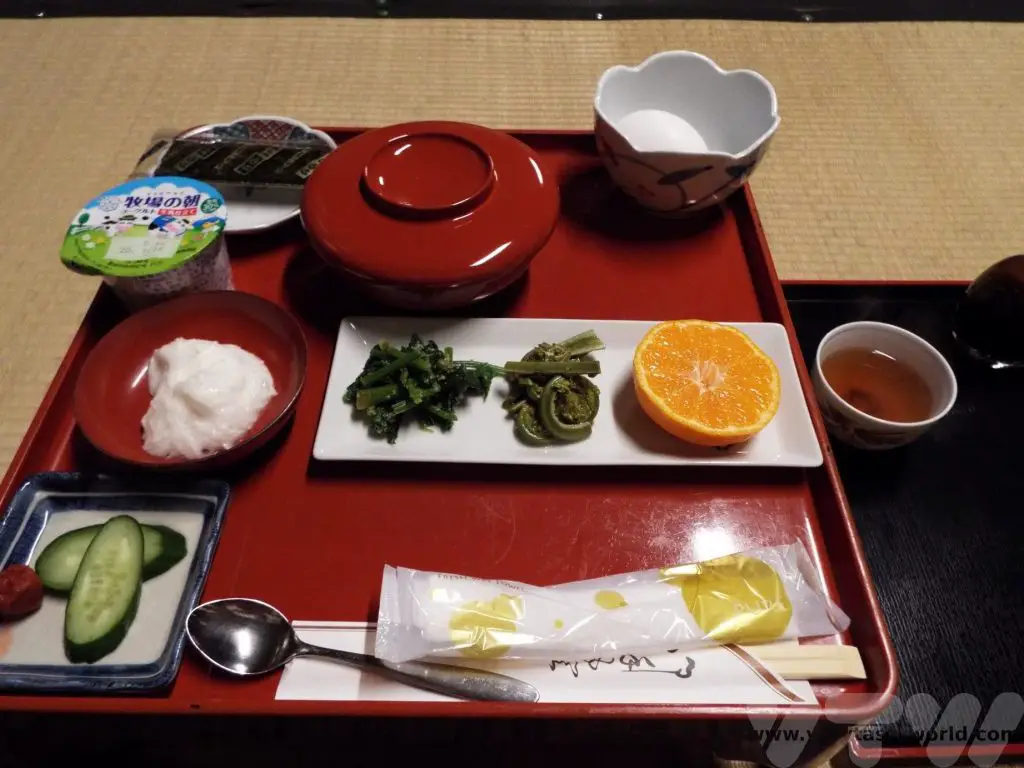
We were given the choice of a raw or boiled egg. We always choose raw egg. You mix it into the rice, which partially cooks the egg, add a bit of soy sauce to your taste and then scoop up the flavourful mixture with a piece of nori seaweed. You usually get a sour and salty umeboshi plum – a real wake-up call!
Staying in a gassho is a delightful way to spend time in rural Japan and is highly recommended. But… make sure you plan your trip and book early!
Related Posts You May Enjoy

- Recipe: Simmered Shiitake Mushrooms
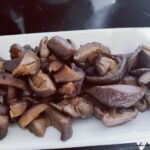
- How to Use Public Transport in Japan

- RECIPE Oyakodon Donburi

- Planning a Trip to Japan

- The Makanai: Cooking for the Maiko House

- Setsubun Food – Bean Throwing Day

- The Gassho Farmhouses of Rural Japan

- Recipe: Japanese Simmered Pork Belly – Buta no Kakuni

- RECIPE: How to Make Umeboshi


Costa Rica Wildlife Sanctuary – Caño Negro
Beautiful Costa Rica is well known for its amazing wildlife. This relatively small country in Central America has twenty-three national parks, three of which are UNESCO sites. We took a trip from the east coast to the west, visiting many wildlife parks. The tourism infrastructure is really well developed with easy transportation between locations and many tour operators that can offer trips to various attractions.
Please note that this post contains affiliate links. If you click through and decide to make a purchase we will make a small commission, at no extra cost to you, which will help towards the costs of running this site.
Having enjoyed Tortuguero, where we had been lucky to see a greenback turtle nesting, we moved onto La Fortuna de San Carlos, close the Arenal volcano, in the middle of the country. It is an ideal location to use as a base to explore this region and there are loads of exciting activities to undertake in the area, from caving to wildlife viewing.
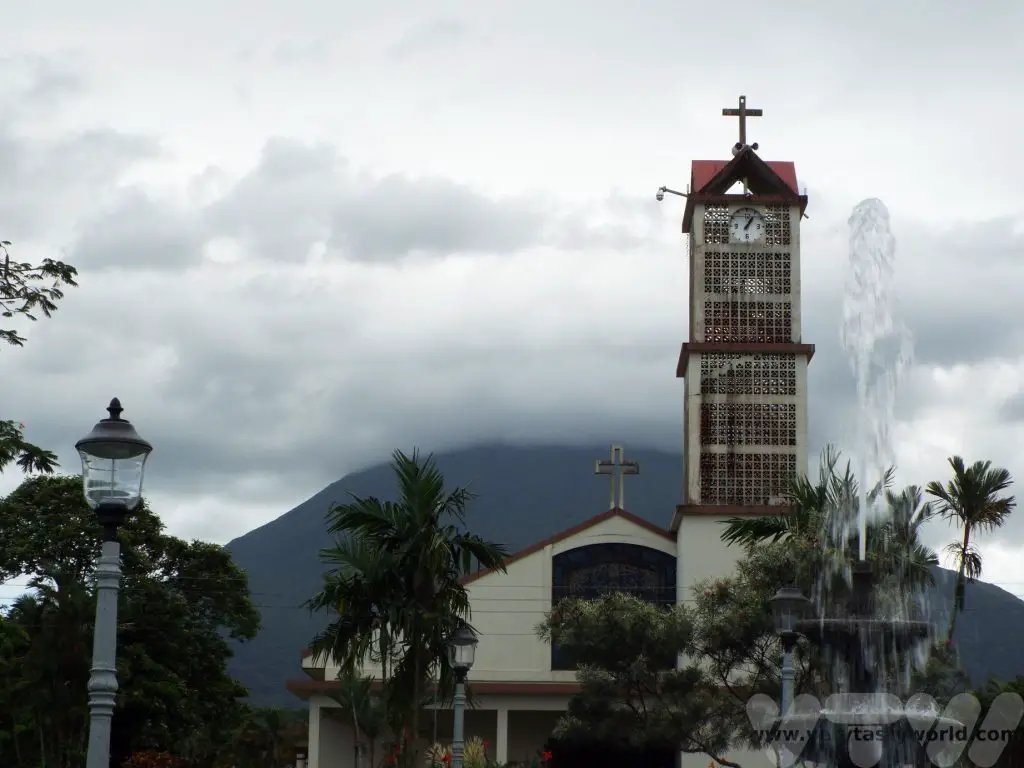
One of the trips we enjoyed was to the Caño Negro wildlife sanctuary. As with most tours in Costa Rica, there are companies in La Fortuna that can arrange the trip and will pick you up from your hotel or guest house.
It’ll take a couple of hours to get there from La Fortuna. Our guide was a naturalist who was not only knowledgeable about the local wildlife but was also really keen to tell us all about the fruit that grows in the region as well.
The Caño Negro, close to the Nicaraguan border, is a Costa Rica wildlife sanctuary which has the status of a national park, a Ramsar wetland of international importance, and one of the most biologically diverse areas in the country.
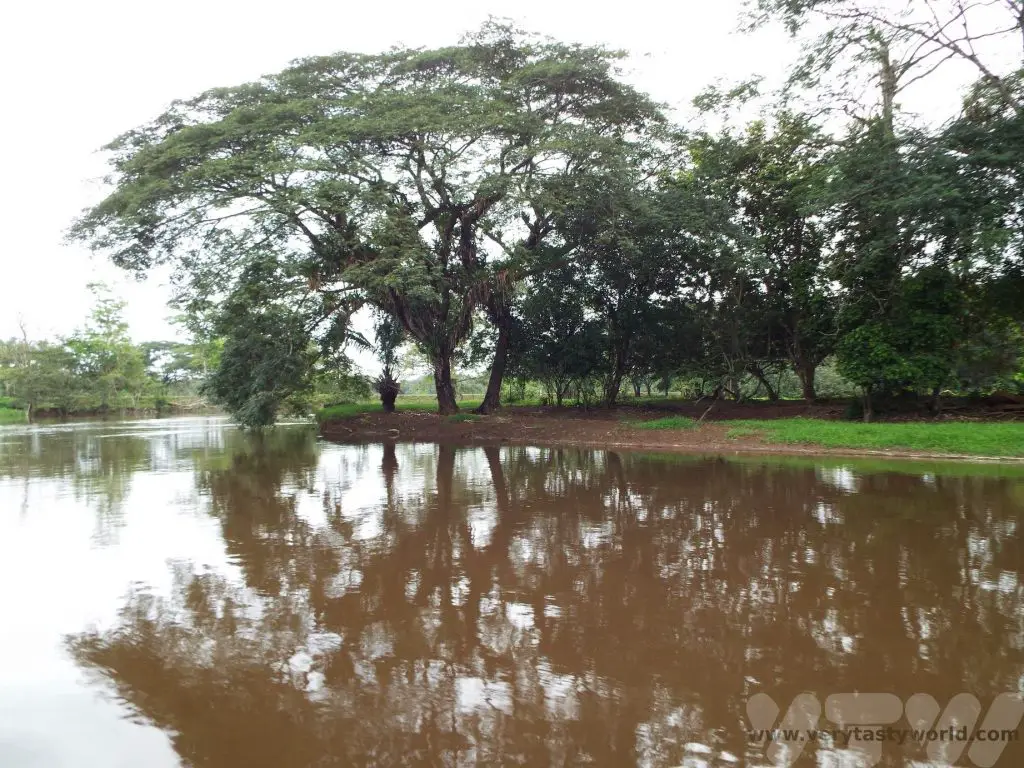
Boat Trip on the Río Frío
Once at the Caño Negro you can board a boat and enjoy a fascinating cruise up and down the Río Frío.

Wildlife viewings are pretty much guaranteed. Good guides will be able to spot plenty of birds, reptiles and mammals and, importantly, be able to point them out so that you can take pictures. Of course, you may not get to see the more elusive residents: the cougars, jaguars and ocelots, but there were plenty of monkeys, iguana, caiman, beautiful birds and, of course, sloths to see.
Howler monkeys are the loudest monkeys in the area. Their calls can travel 5km! They use the vocalisation to communicate with each other and establish territory.
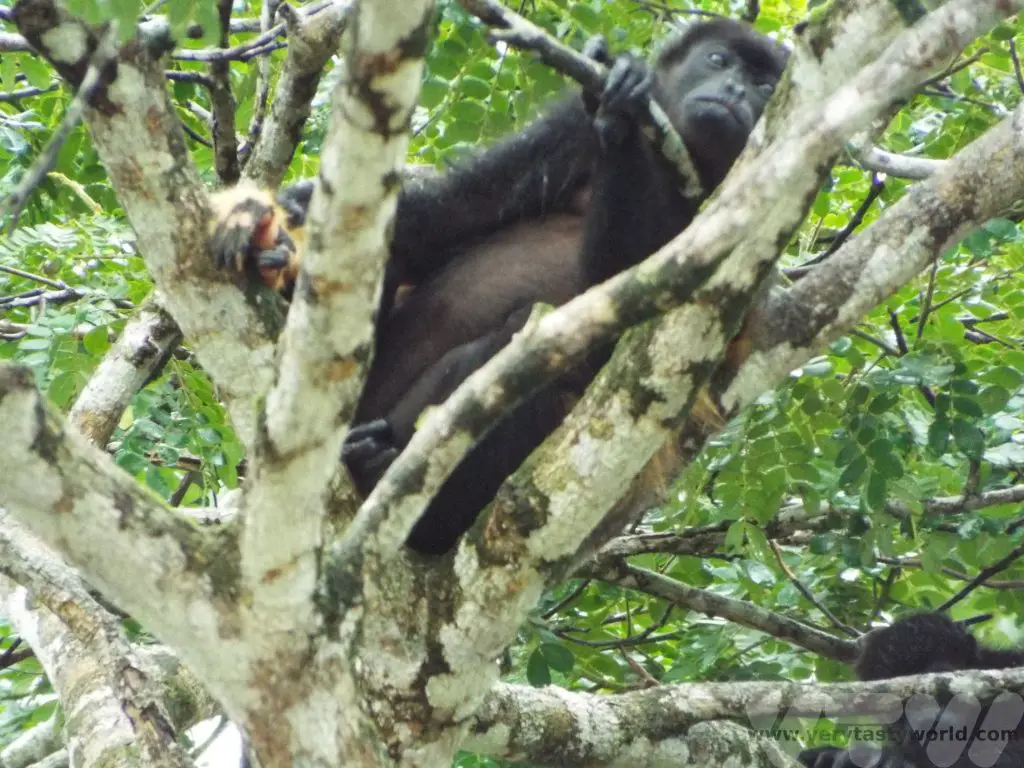
White faced monkeys, also known as capuchin monkeys, look adorable but are very naughty. They are regarded as the most intelligent of the monkeys in the region but can be quite vicious, fighting over the fruit in the trees and stealing from each other.
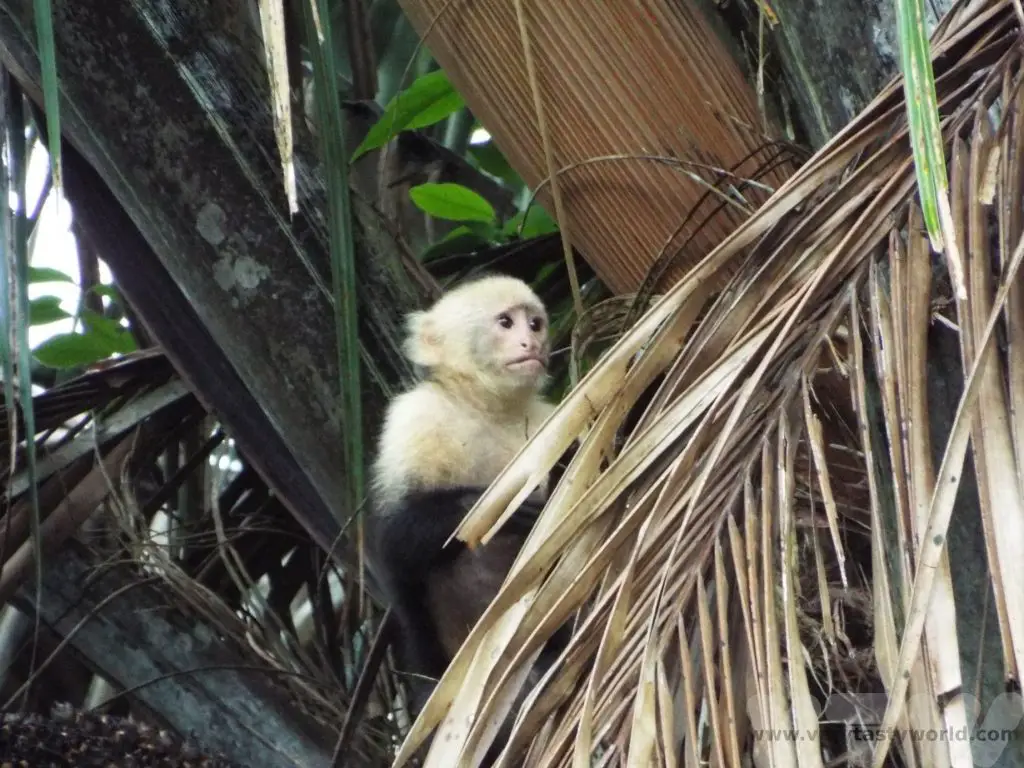
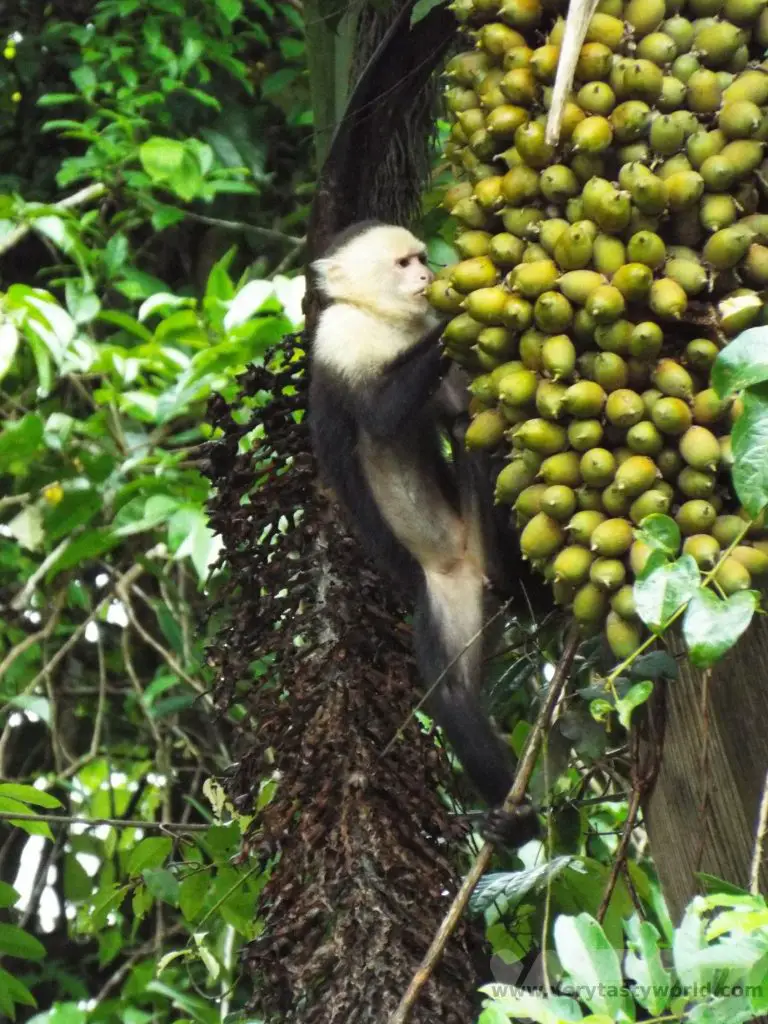
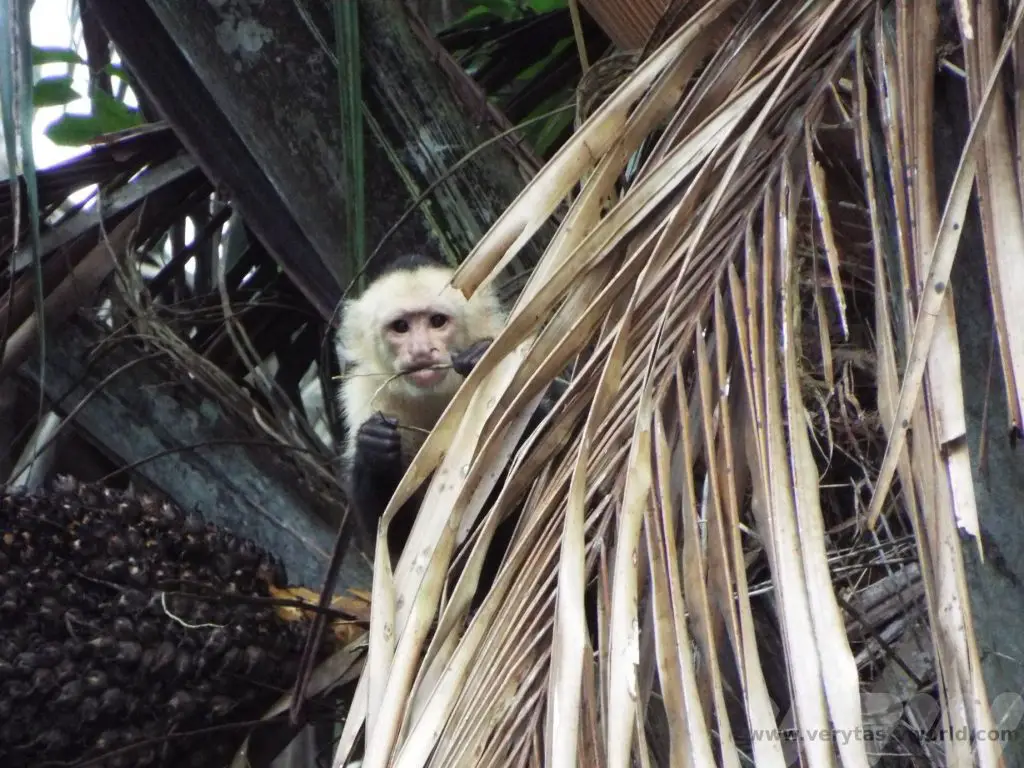
This beautiful kingfisher got lucky catching a fishy snack.
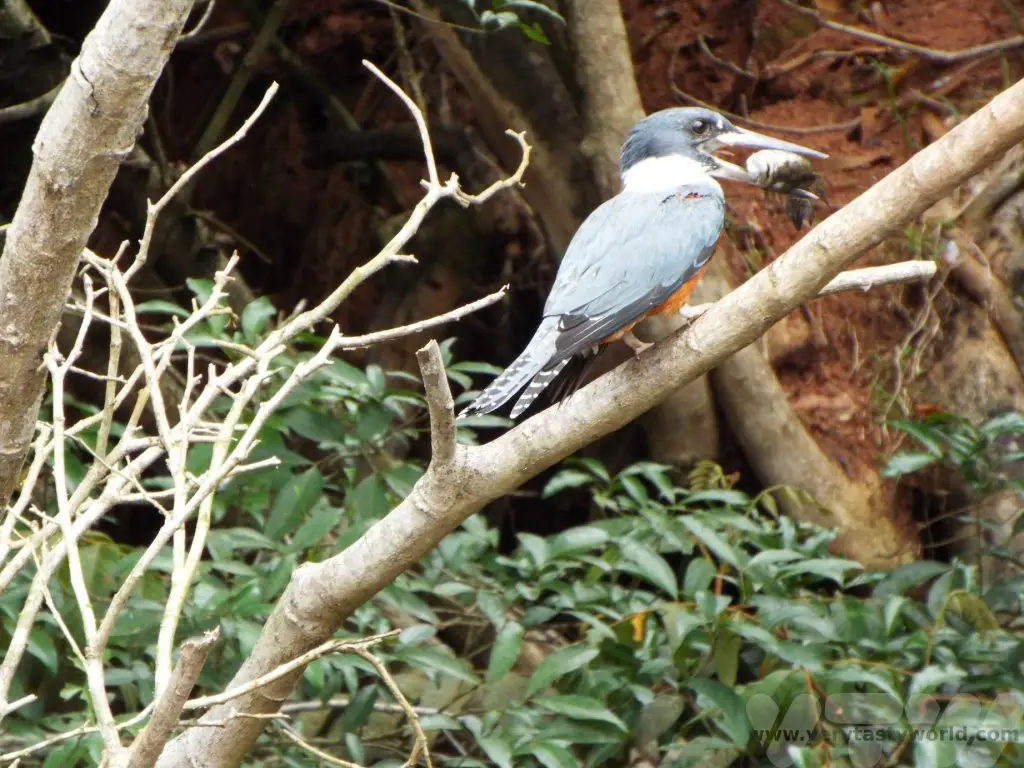
And this egret was having a good wade searching for food.
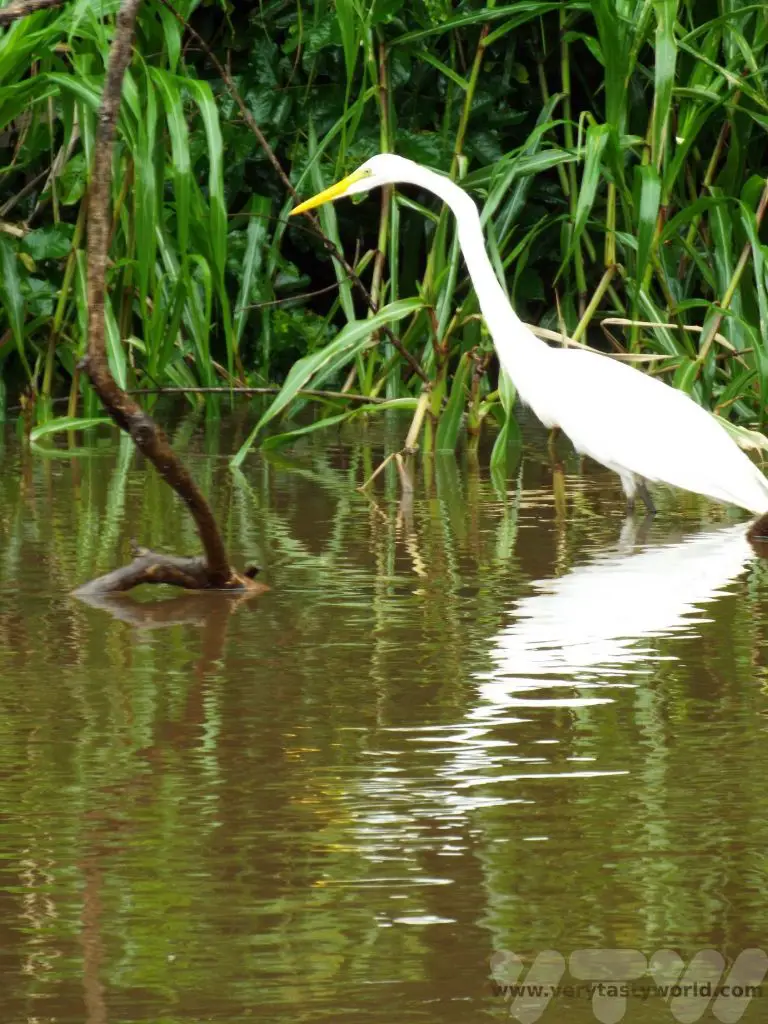
And there were plentiful iguana hanging around in trees and on the surrounding fields.
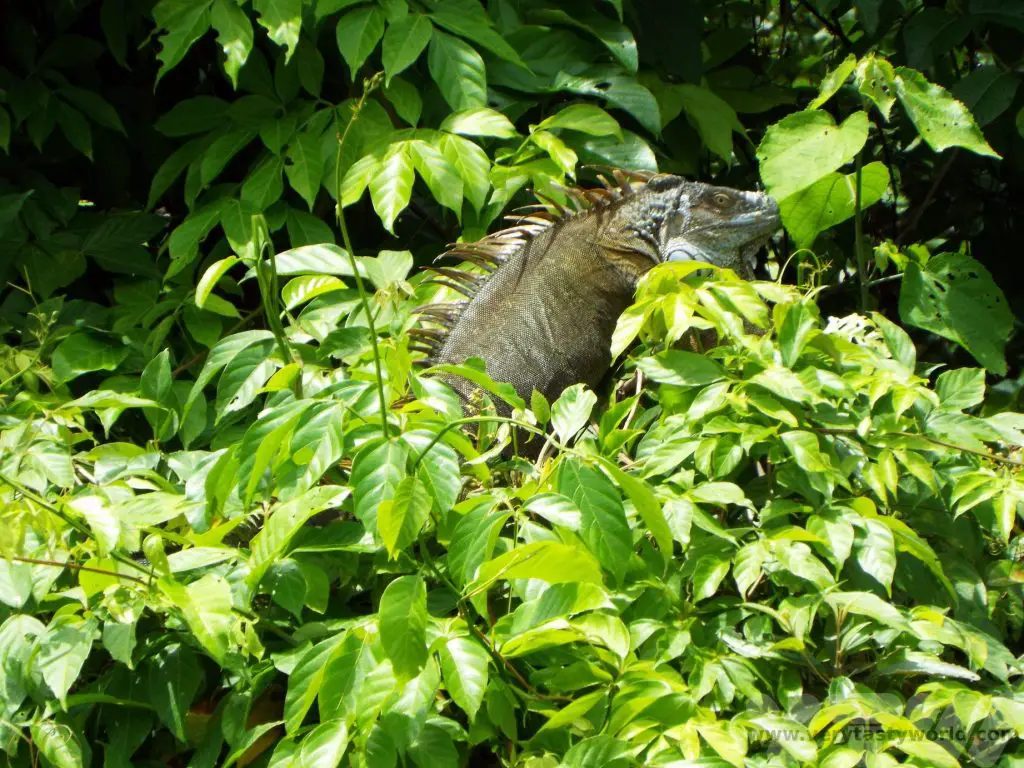

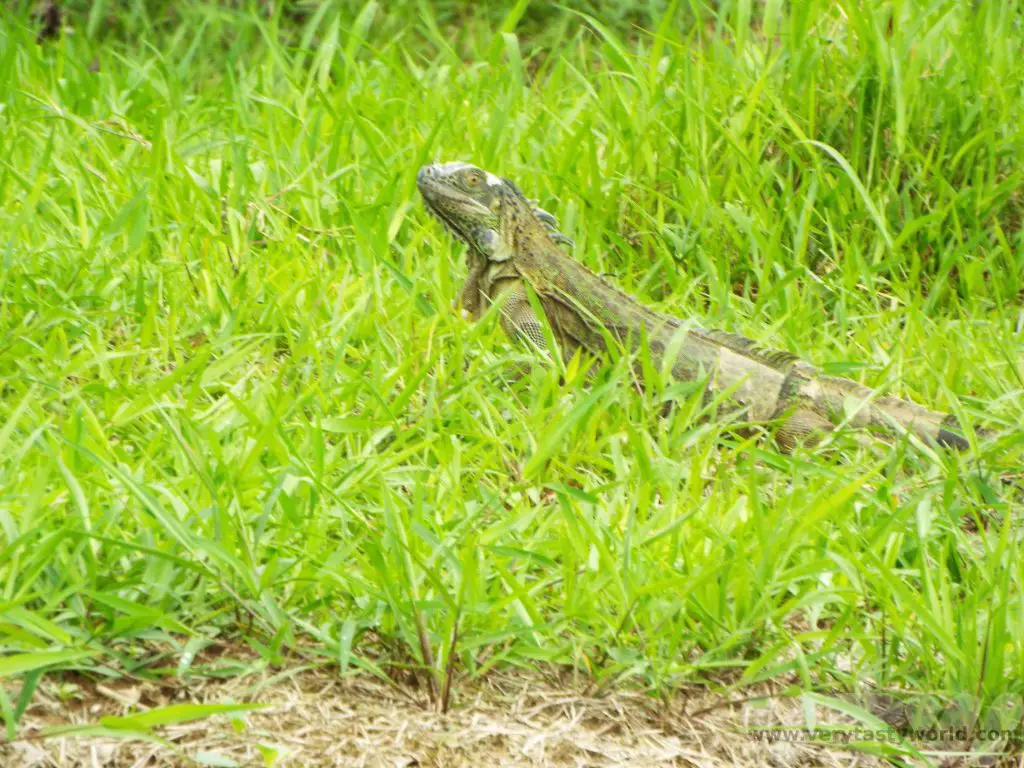
The anhinga is also known as the snake bird because when it swims in the water you can only see its elongated neck, which has the appearance of a snake gliding through the river.
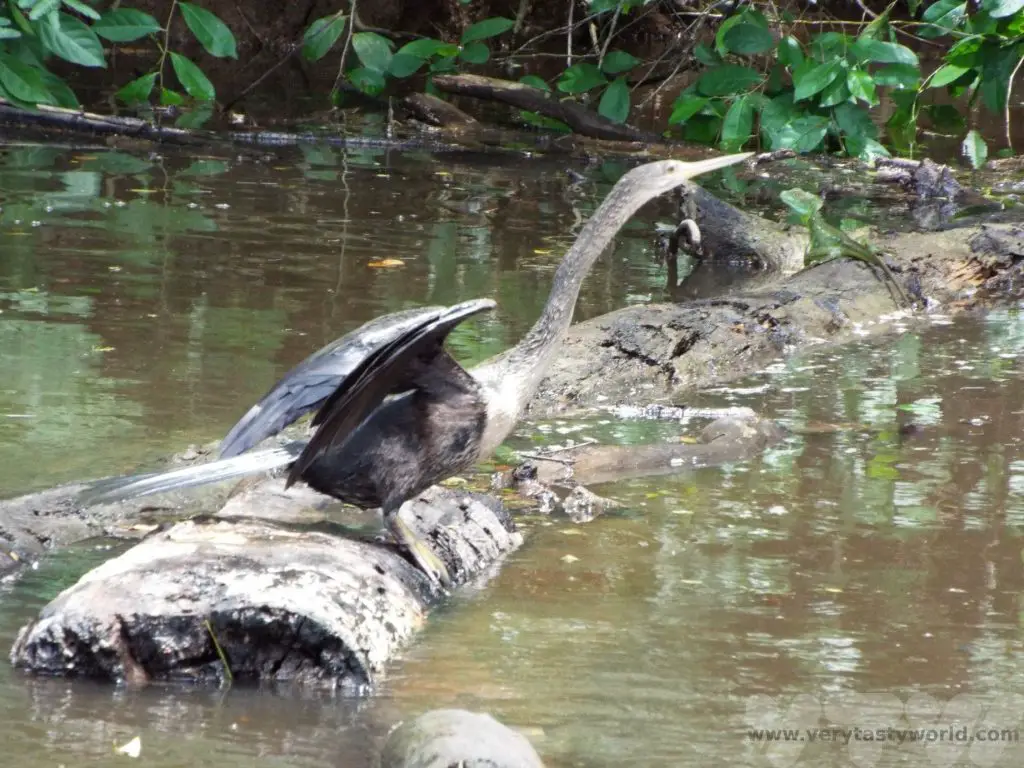
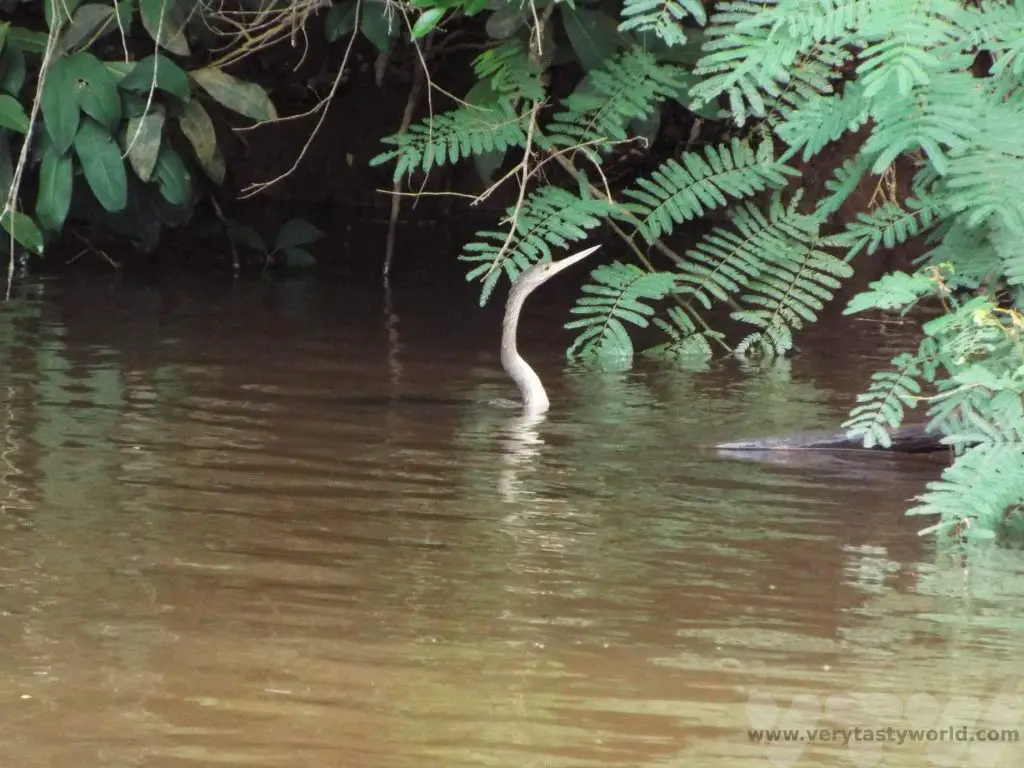
The Jesus lizard, or to give it its correct name, basilisk lizard, derives its moniker from being able to run across the water on its rear legs. It is possible for the species to do this because they have little scales on their back toes which form webs that trap water and air bubbles underneath them. If they run quickly enough the bubbles underneath these webs prevent them from sinking into the water. The lizards are able to swim if they go too slow.
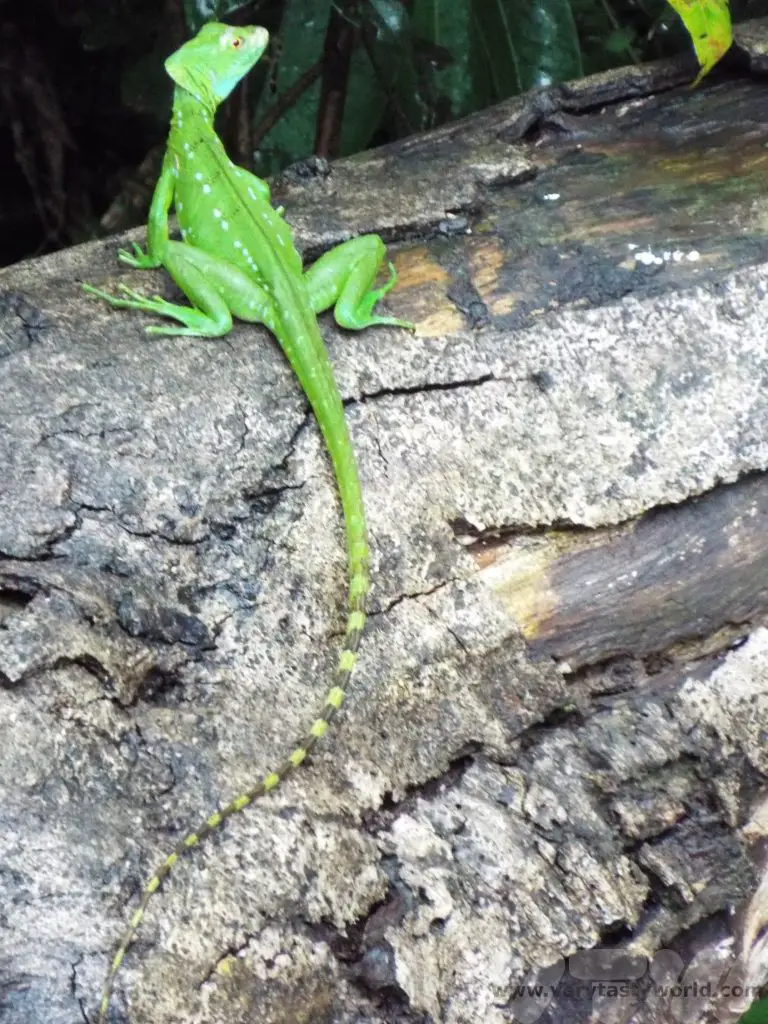
We sailed past a nonchalant caiman.

Sloths are probably the creature that most visitors to Costa Rica definitely want to see. On this excursion we saw a Two-Toed sloth, hanging around in the tree, which is what sloths do best.
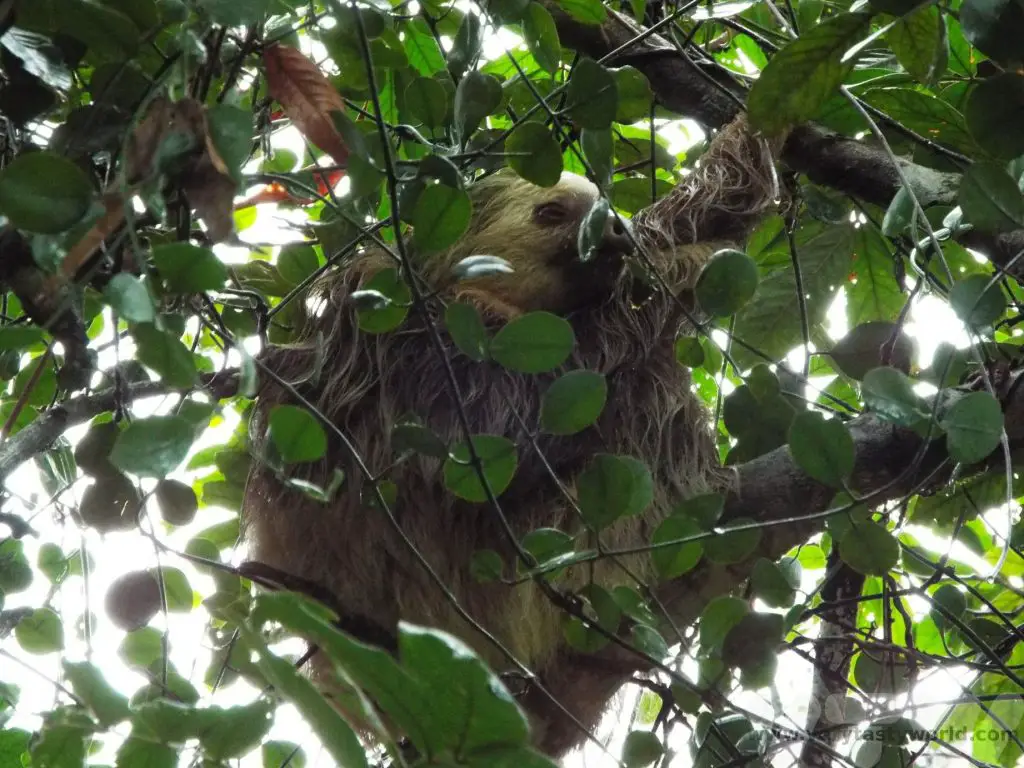
There are two species of sloth in Costa Rica: Two-Toed and Three-Toed. (We did see the Three-Toed Sloth, but on the Pacific coast, not on this river trip.) They are absolutely fascinating creatures – they appear to be incredibly lazy but this is largely because they have a very slow metabolism and most of their time is spent in the tree canopies. They have a multi-chambered stomach that is capable of digesting tough leaves but the digestion process takes a very long time. Once they are up a tree they will stay there for several days, only coming down for a poo, which happens once week. Pretty much everything else happens in the trees – eating, sleeping, mating, even giving birth.
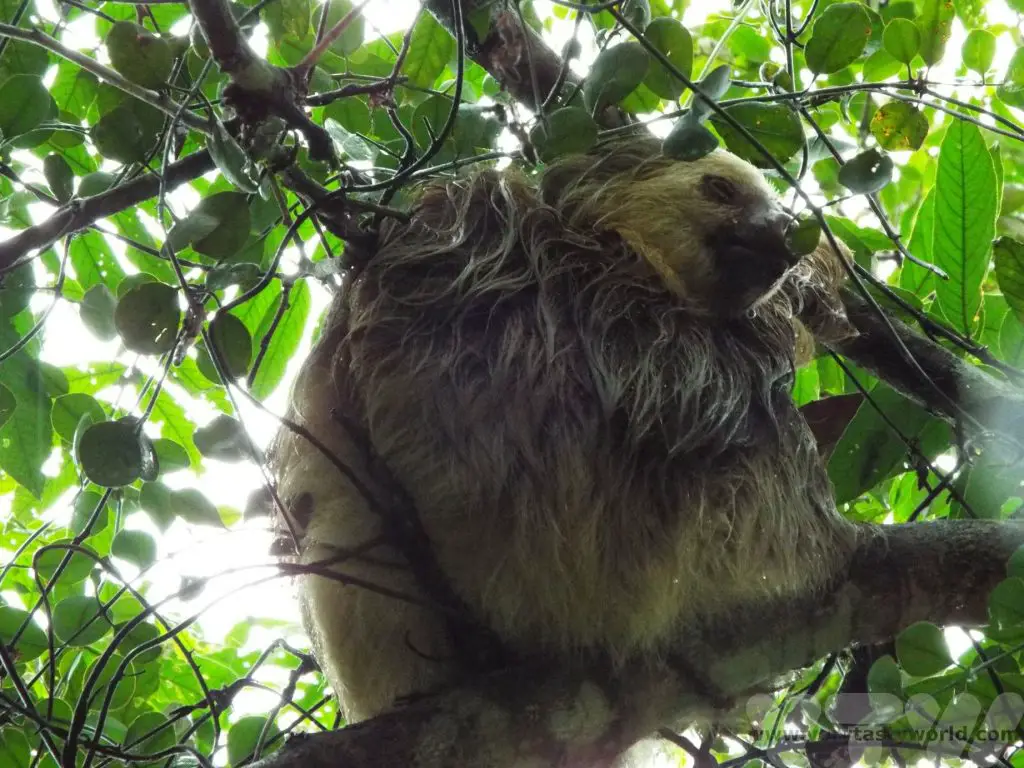
They are often covered in green algae, with which they have a symbiotic relationship, the algae providing them with some nutrition. In turn, the sloth’s fur, which retains water well, is an idea environment for the algae to thrive. It also helps provide camouflage – the sloth’s natural predators include ocelot and jaguar.
The species have been around for 65 million years, so there’s probably something to be said for taking things easy in life!
A Downpour
The river trip was hugely enjoyable but as we were travelling in the mid-season in June/July (it is rainy but not hurricane weather) we did experience something of a downpour. When it rains in Costa Rica, it rains! (Some areas we visited receive around 5000mm annually.) The showers at this time of year are extremely heavy but usually short-lived, lasting no more than twenty minutes to half an hour. The boat had a roof and our captain kindly rescued some kayakers who were enjoying their gentle paddle on the river until they got a complete soaking! They were hugely relieved when we picked them up and they stepped aboard looking somewhat bedraggled. We always recommend bringing wet weather gear if travelling at this time of year.
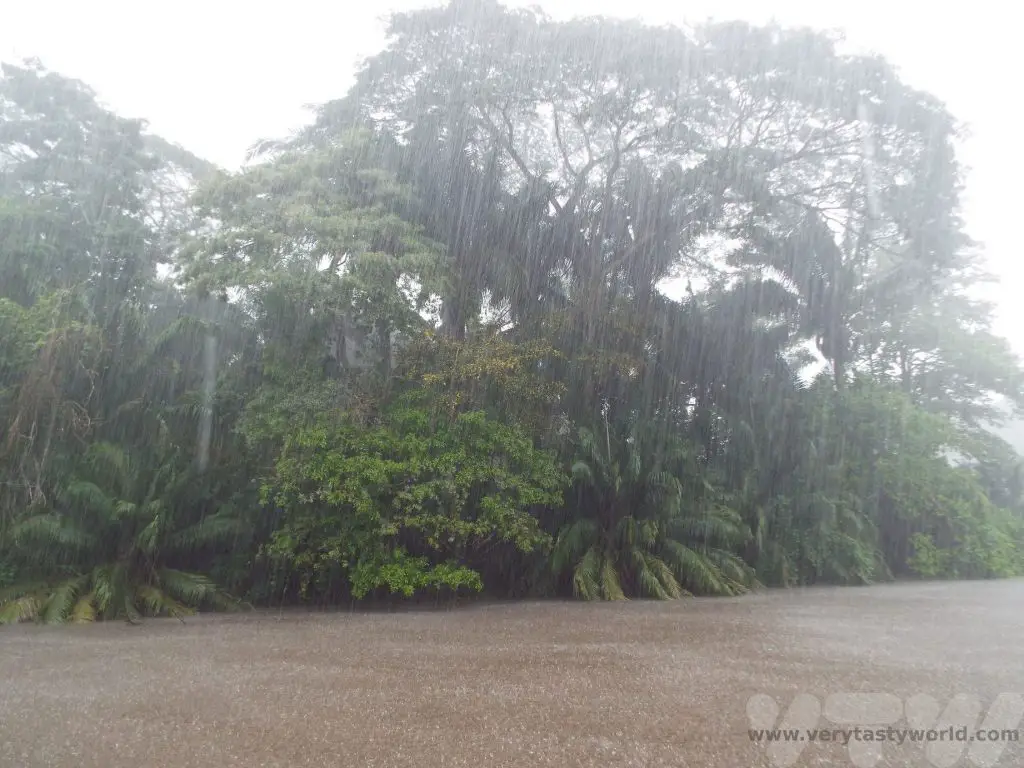
Feeling Fruity
After the boat trip through the wildlife sanctuary, lunch was provided. It was quite common at the end of most excursions we enjoyed in the country. We were treated to a fruit feast.
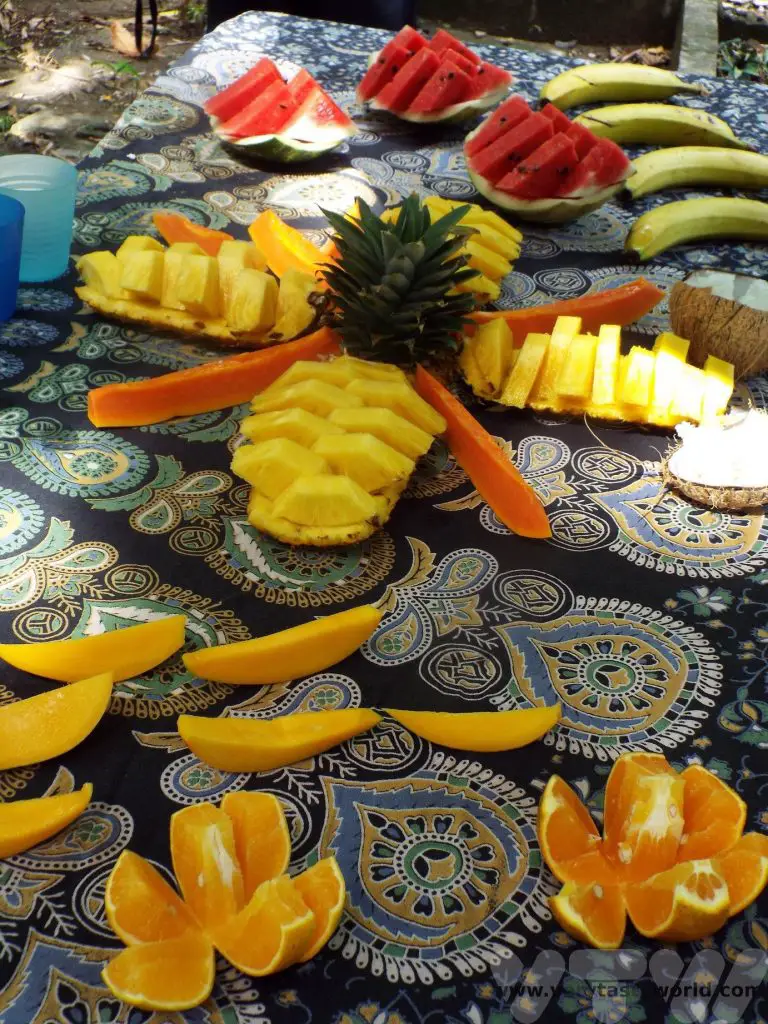
One of the wonderful things about Costa Rica is the utter deliciousness of the fruit. Around the Arenal Volcano area the soil is incredibly fertile and on our way to Caño Negro we saw vast plantations growing all sorts of fruit. In fact, the tour guide stopped the minibus a couple of times to buy some fruit from local sellers, so that he could offer us a taste. He also provided a running commentary throughout the journey telling us about the fruit industry in Costa Rica.
The pineapples were a revelation. Even the freshest pineapples we’ve ever eaten in the UK (often from Costa Rica!) were nothing compared to the organic local fruit. Most pineapples that are grown for export are treated chemically where they are stored (they can last up to a year) and ripened after they have arrived at their destination. It is such a shame that so many pineapples are grown this way – it isn’t good for the environment and the fruit’s flavour isn’t as good as it could be. Compare that to an organic pineapple and the taste is completely different. The local fruit had a really rich vibrant flavour, both sweet and tart.
The pineapple is actually a flowering plant. Only one flower grows each year per plant and it is only possible to gain a pineapple in three successive years. The first year’s is the biggest and these are the ones that are usually exported overseas. The second year’s pineapple is smaller and would generally be used for the local market or taken to a processing factory where it would likely end up in a tin. The third year’s fruit will be very small and will become juice.
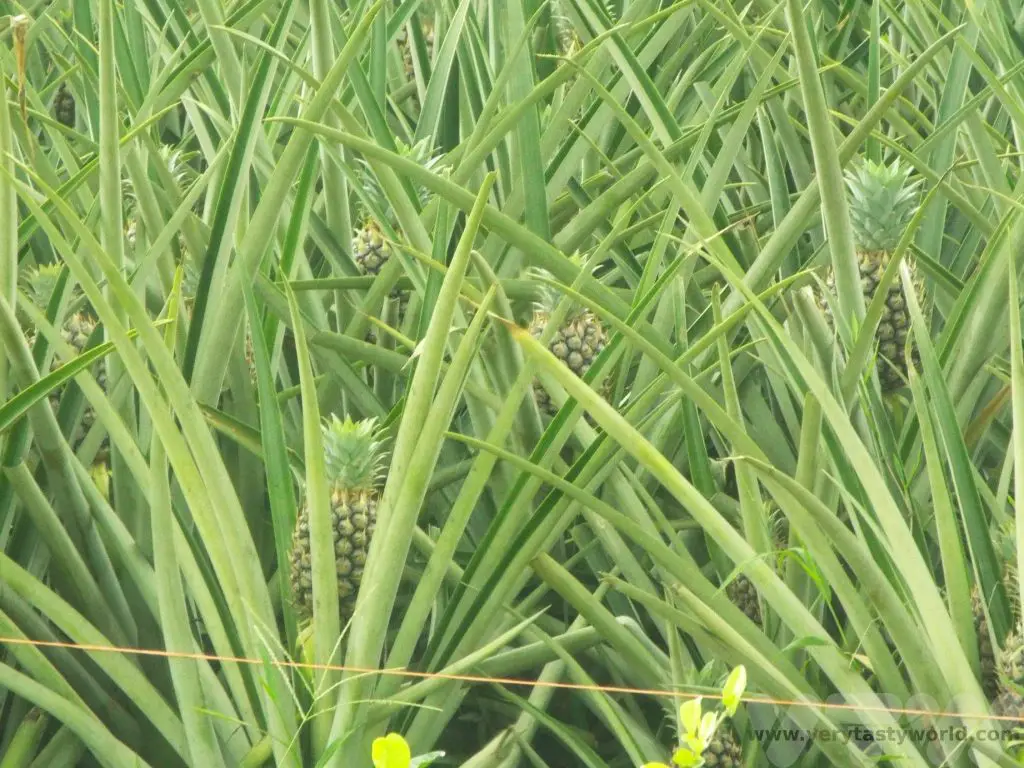
There’s a perception in many western countries that oranges should actually be orange. But many oranges aren’t as luridly orange as those classic fruit from Seville. The oranges in Costa Rica might not look the part but taste just fine. Bananas are another fruity staple of Costa Rica and plantations can be seen all over the country.
Many of the fruits grown in the country are familiar as they are exported around the world. However, there are some more unusual offerings which we were delighted to discover. Rambutan, also known as Mamon Chino, which apparently translates to Chinese Sucker, is a bizarre looking tropical fruit. You have to peel the pretty and colourful soft spikes to reveal the clear coloured flesh. They look similar to grapes or lychees and have a comparable texture although the flavour is very different, sweet and slightly sour, and nowhere near as perfumed as a lychee. There’s a seed inside that you need to be aware of – don’t bite too hard!
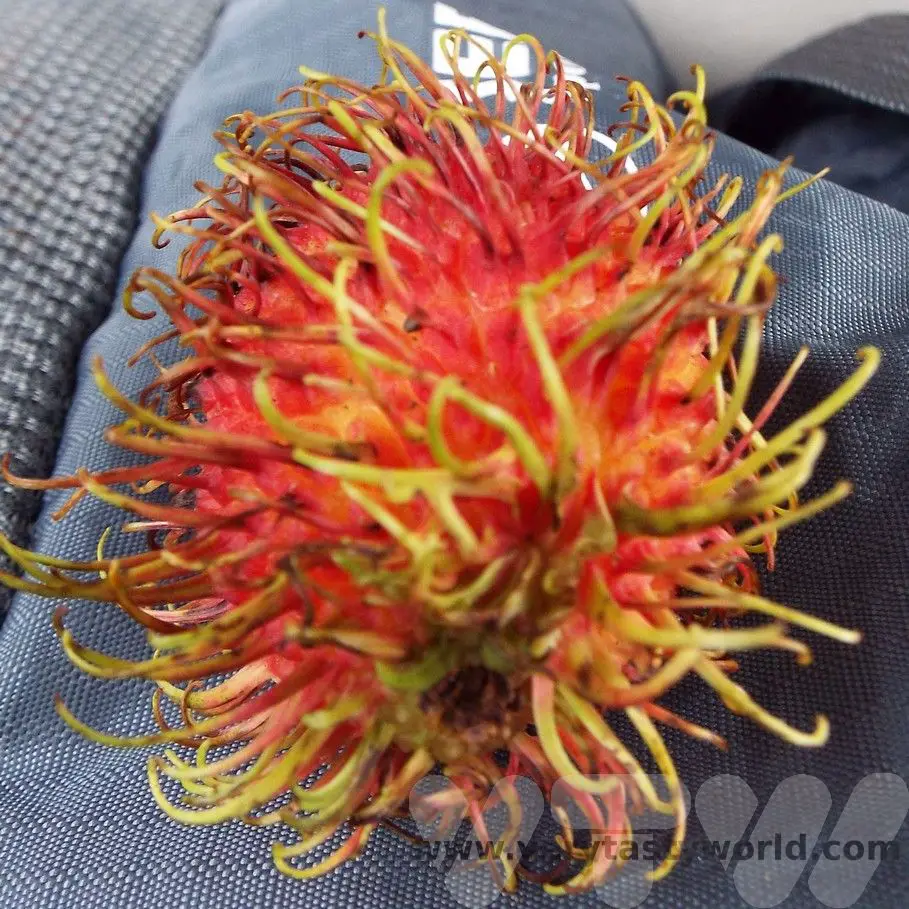
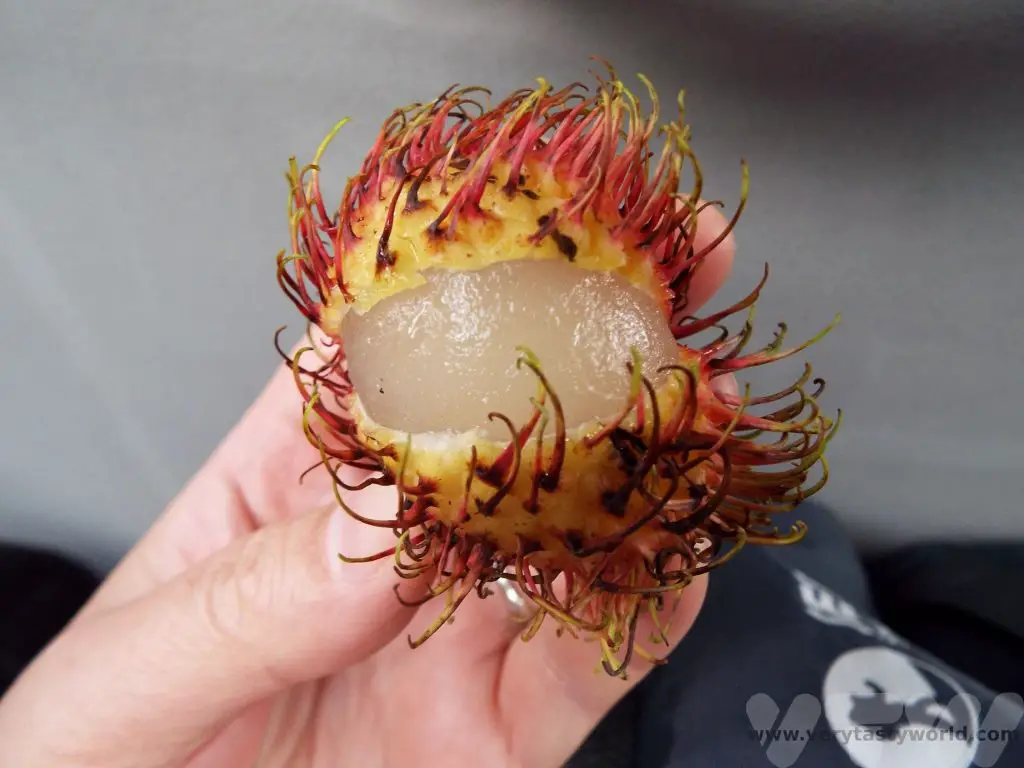
Noni is smelly and tastes bitter but apparently has health benefits. It’s not a fruit you would eat for pleasure. Some people mix it with other fruits in smoothies to disguise its flavour.
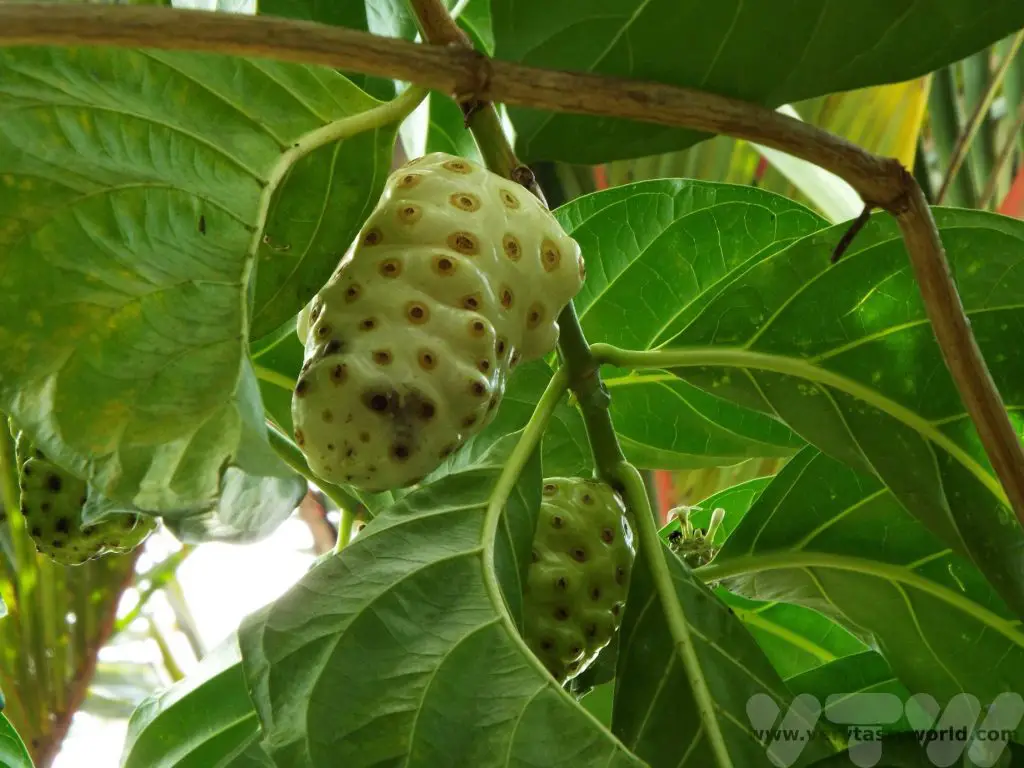
In Costa Rica you are guaranteed to enjoy at least ten of your ‘five a day’.
Related Posts You May Enjoy

- Best Time To Visit Machu Picchu 2024 Update
- A 2 Week Patagonia Itinerary
- Day of the Dead in Campeche
- A Galapagos Land Based Itinerary
- RECIPE: How to Make Costa Rica’s Gallo Pinto
- A Tasty Puebla Food Tour
- Costa Rica Wildlife Sanctuary – Caño Negro
- Visit Torres del Paine National Park in Patagonia
- Atacama Desert Itinerary
A Chiang Mai Tour in Northern Thailand
Chiang Mai is the largest city in northern Thailand and is a lovely place with a very laid back vibe. There are plenty of things to see and these aren’t just confined to the city itself. There are loads of activities to suit all interests – whether cultural or natural – both around town and into the wider countryside. It’s definitely worth spending time exploring this lovely city and surrounds, whether on an organised Chiang Mai tour or exploring independently. We spent five days in and around the region and combined our own exploration with some guided walks which were great for understanding the history of this delightful city.
An Old City With Walls and A Moat
Chiang Mai was founded by the Lanna King, Mangrai, in 1296. The Lanna people were from Northern Thailand and the name translates to ‘Kingdom of a Million Rice Fields.’ Mangrai had established the city of Chiang Rai in 1262 as the capital of his kingdom and later, following both friendship pacts and wars with other local kingdoms, he moved further south. Due to its location Chiang Mai was vulnerable to invasion from the Taungoo Dynasty of the Bamar People (from Myanmar) and the Mongol empire. As a result it was heavily fortified with both a moat and a high city wall, which remain to this day. The old city is surrounded by an extremely pretty walled canal with four gates.
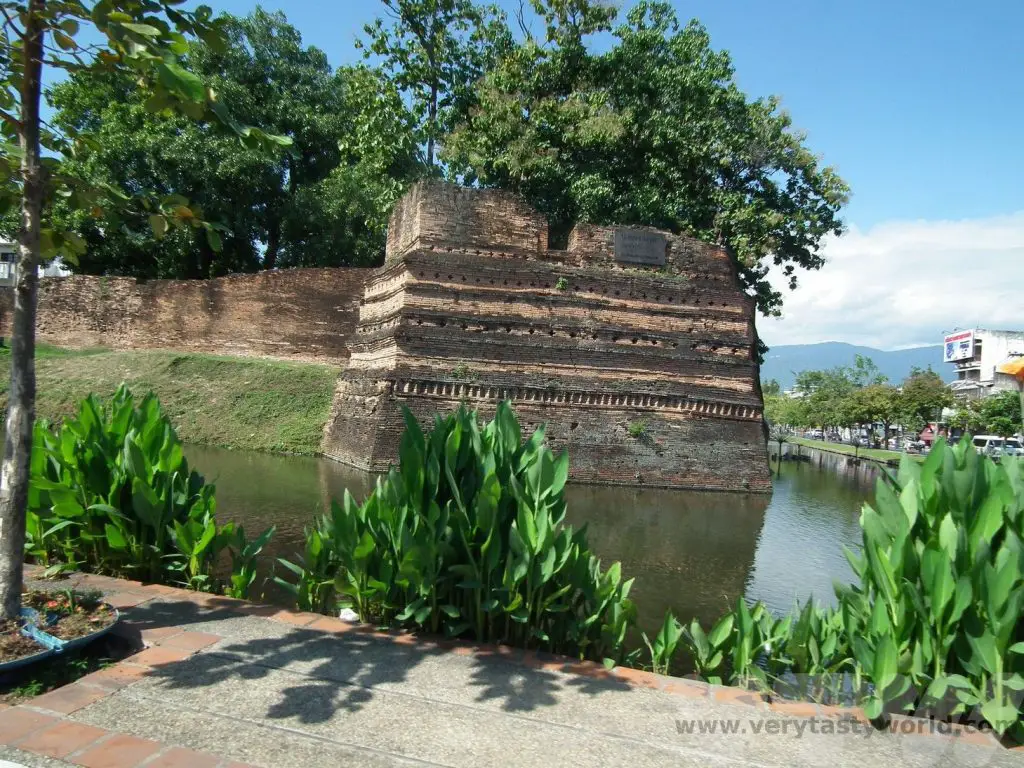
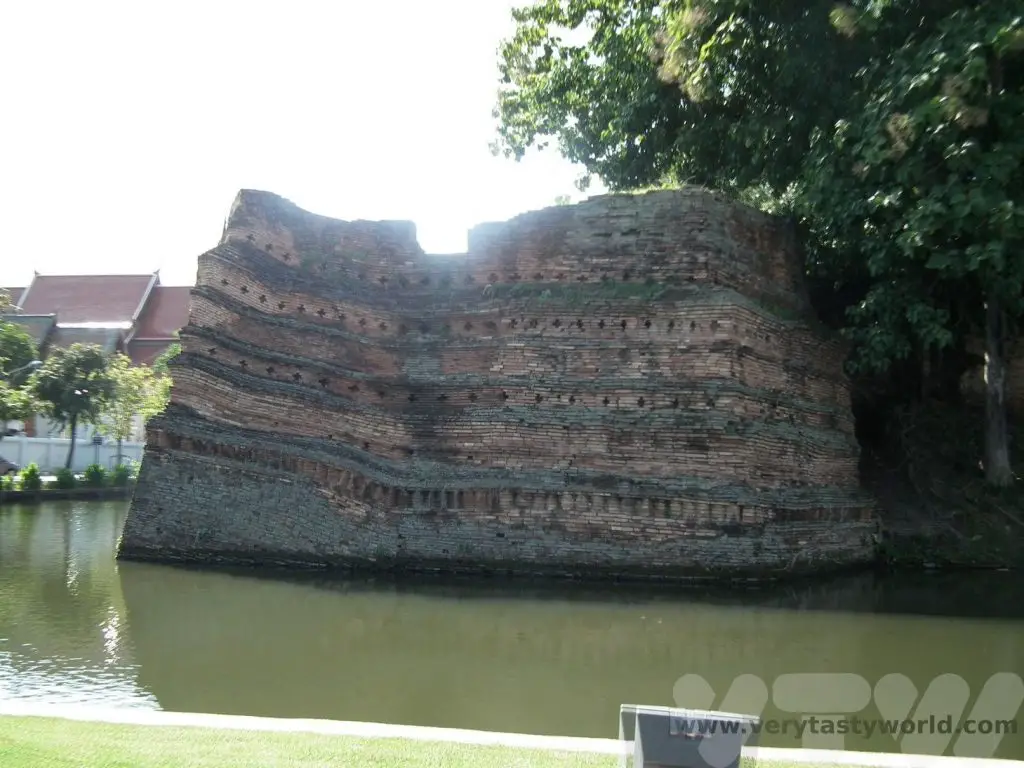

Old Town Chiang Mai Temples
Chiang Mai has well over a hundred temples and it is a pleasure just wandering through the city to discover the many gems that the city to offer.

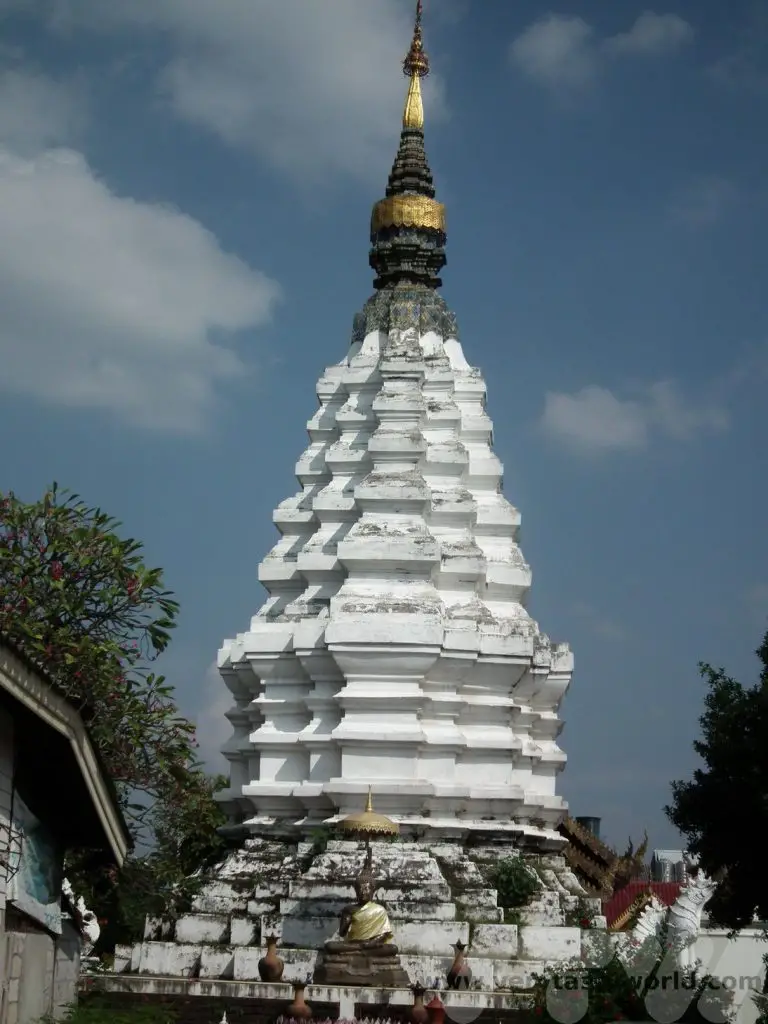
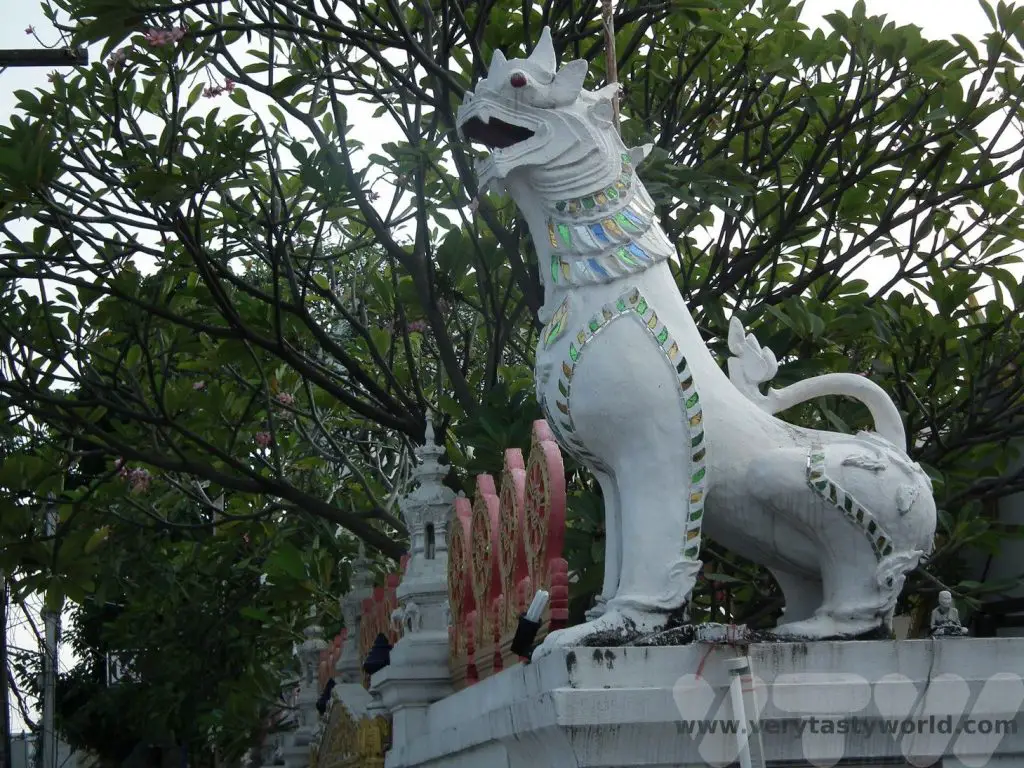
Wat Chiang Man
Wat Chiang Man is the city’s oldest temple, located by the north east corner of the walled old city. It was constructed at the behest of King Mengrai.
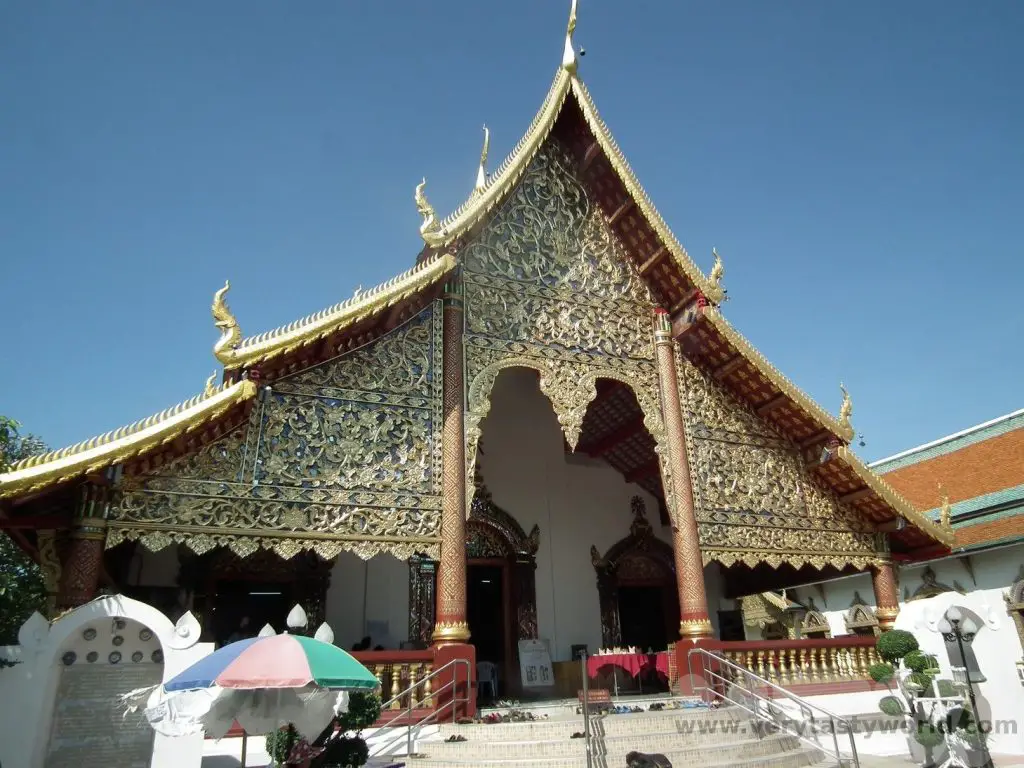
The wihan of a temple is the assembly hall and there are two at Wat Chiang Man. Both contain very old and highly revered Buddhas.
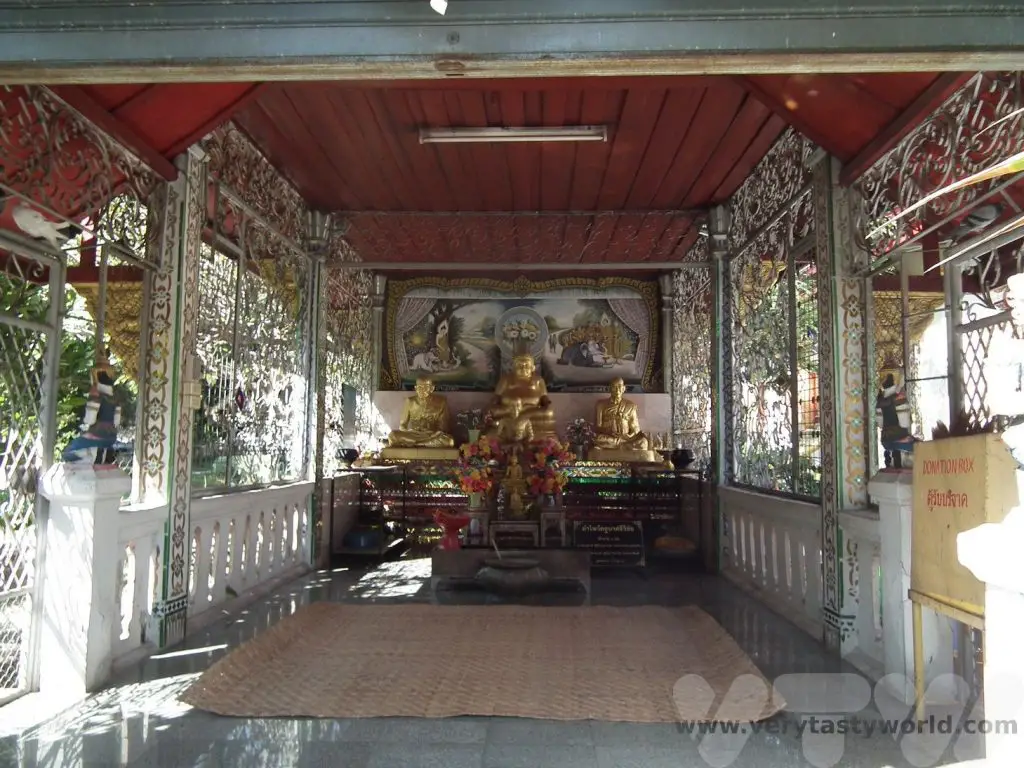
The chedi, also known as a stupa, is traditionally the oldest part of a temple. Wat Chiang Man has an elephant chedi, called Chedi Chang Lom, where fifteen stone elephants support the golden relic chamber.
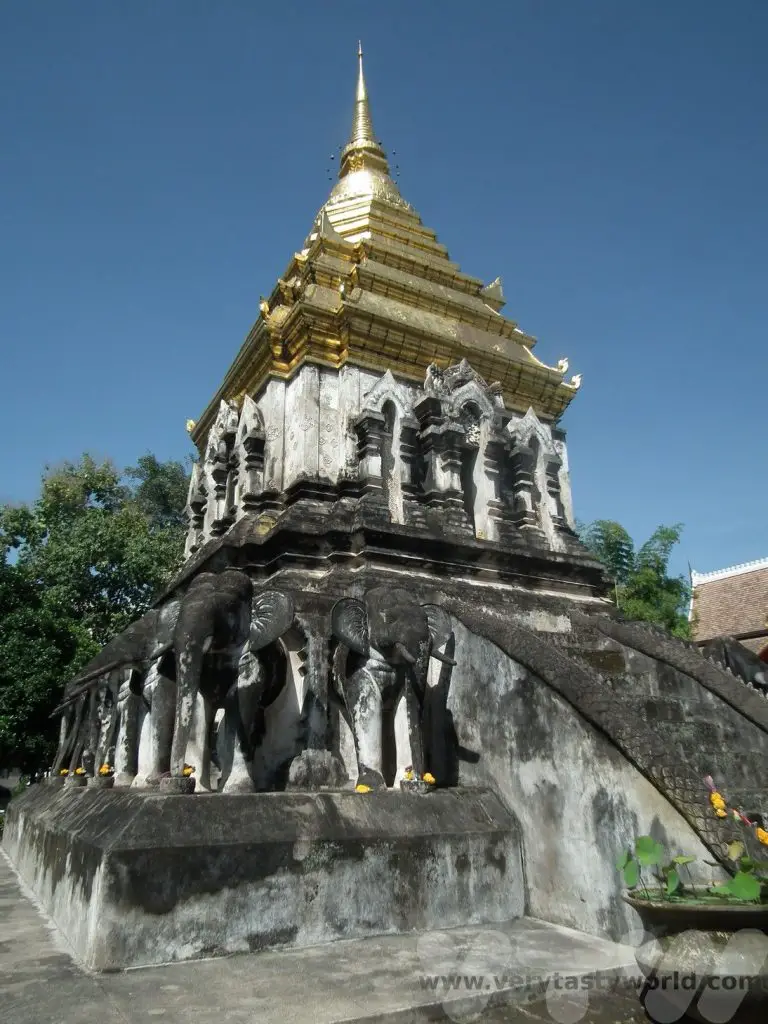
Wat Phra Singh
Another important temple, Wat Phra Singh, was constructed in 1345 by King Phayu, the fifth Mangrai king, who wanted to build a chedi for his late father’s ashes. It was enjoying a face-lift when we visited, so we didn’t see it in its full glory.

Wat Phra Singh Wihan Lai Kham was constructed to house the precious Phra Buddha Singh statue.

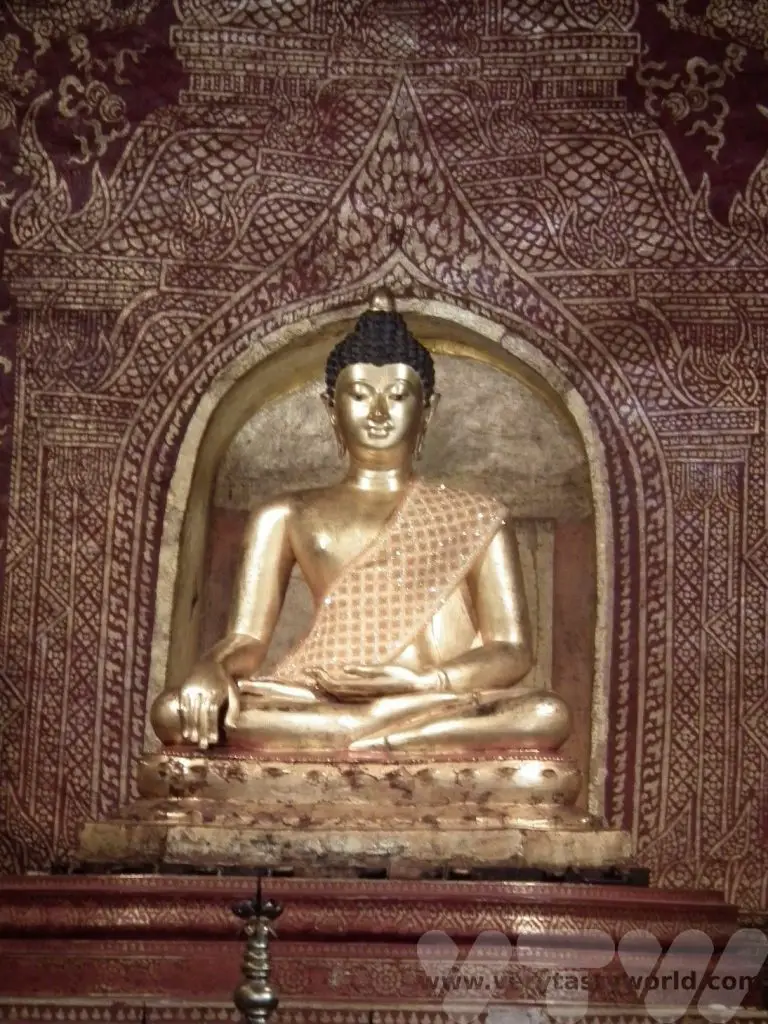
The interior also contains some fascinating murals.


A common – and striking – characteristic of many temples in Thailand are the naga – semi-divine creatures that are a cross between a human and serpent. These are the guardians of the temple – they may look dramatic and a scary but their purpose is generally thought to be protective. It wouldn’t be appropriate to have a holy place guarded by demons.
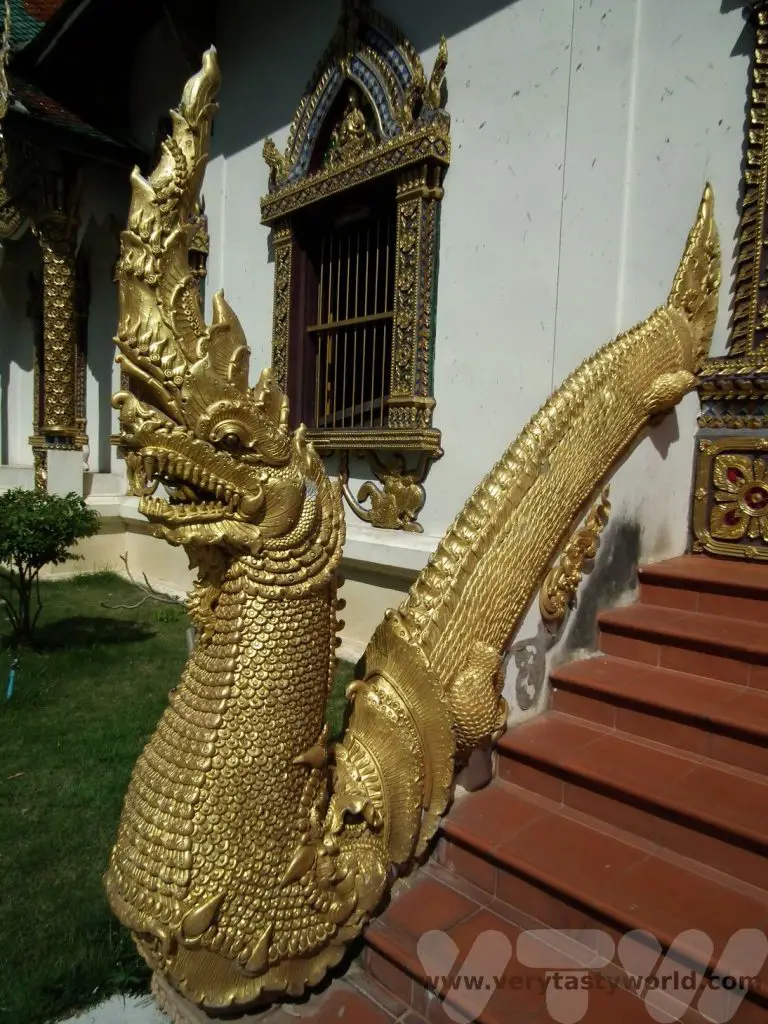
The roofs of many of the temple buildings are beautiful- highly decorative and elaborate.
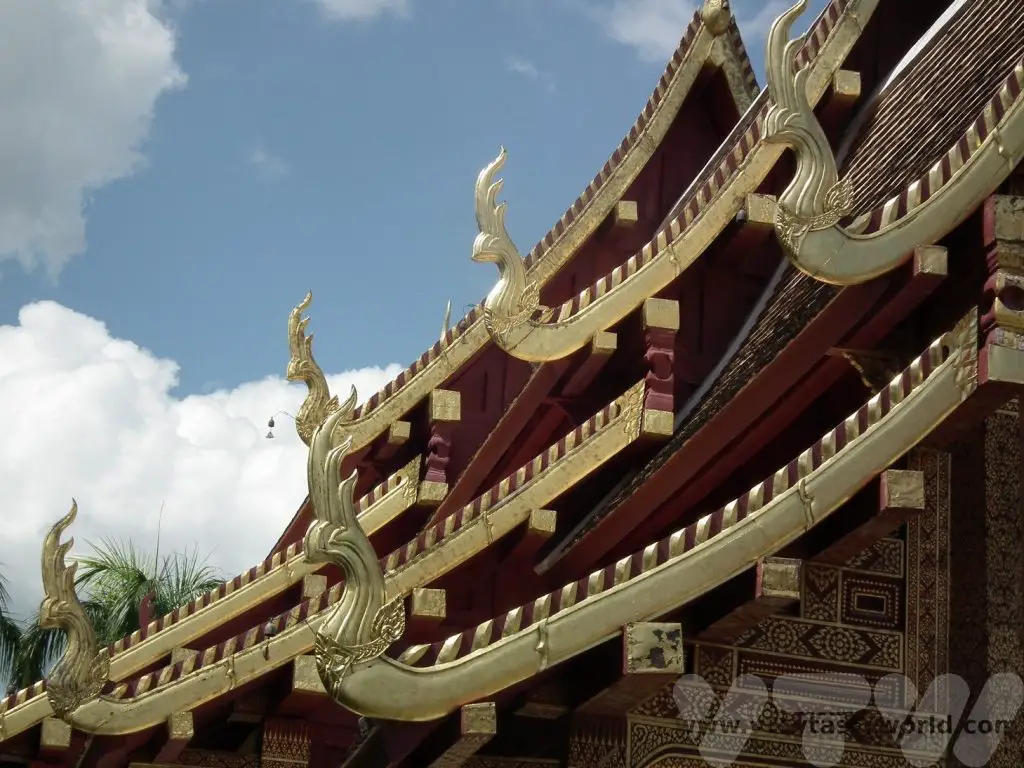
Chiang Mai Cultural Centre
Slightly out of town on the Prapoklao Road is the Chiang Mai Arts and Cultural Centre which used to be the royal hall. It runs evenings showcasing northern Thai food and culture. You can join in to enjoy a delicious meal followed by entertainment such as dancing, martial arts and traditional games.
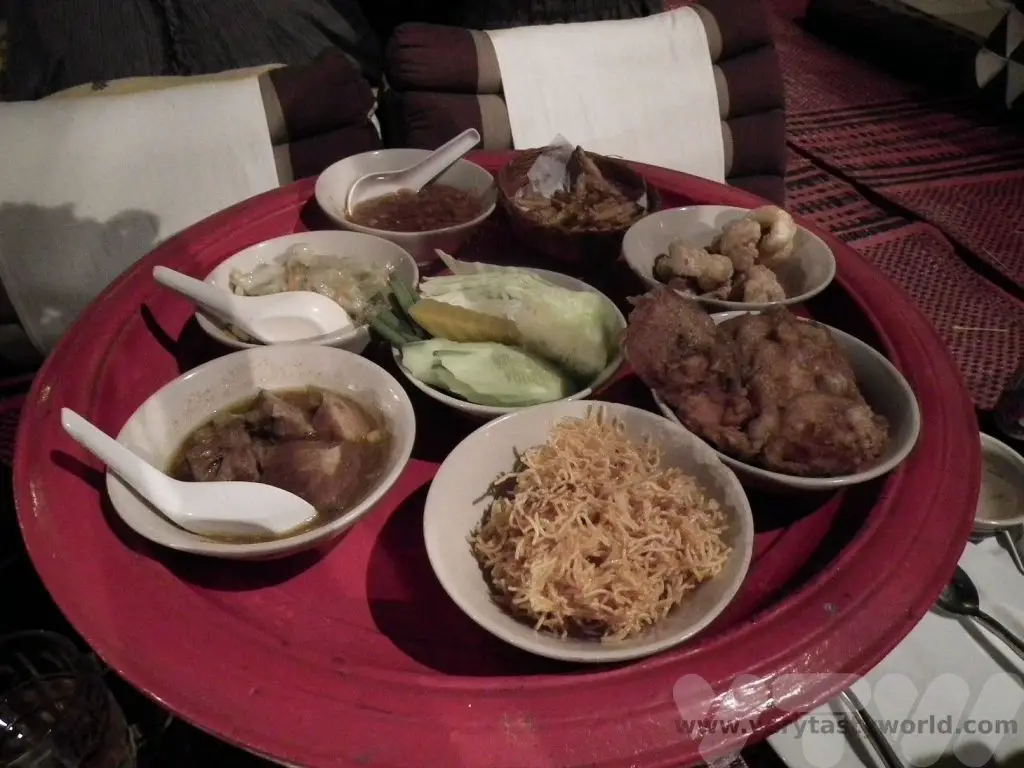
Then the entertainment started with some dancing and martial arts…
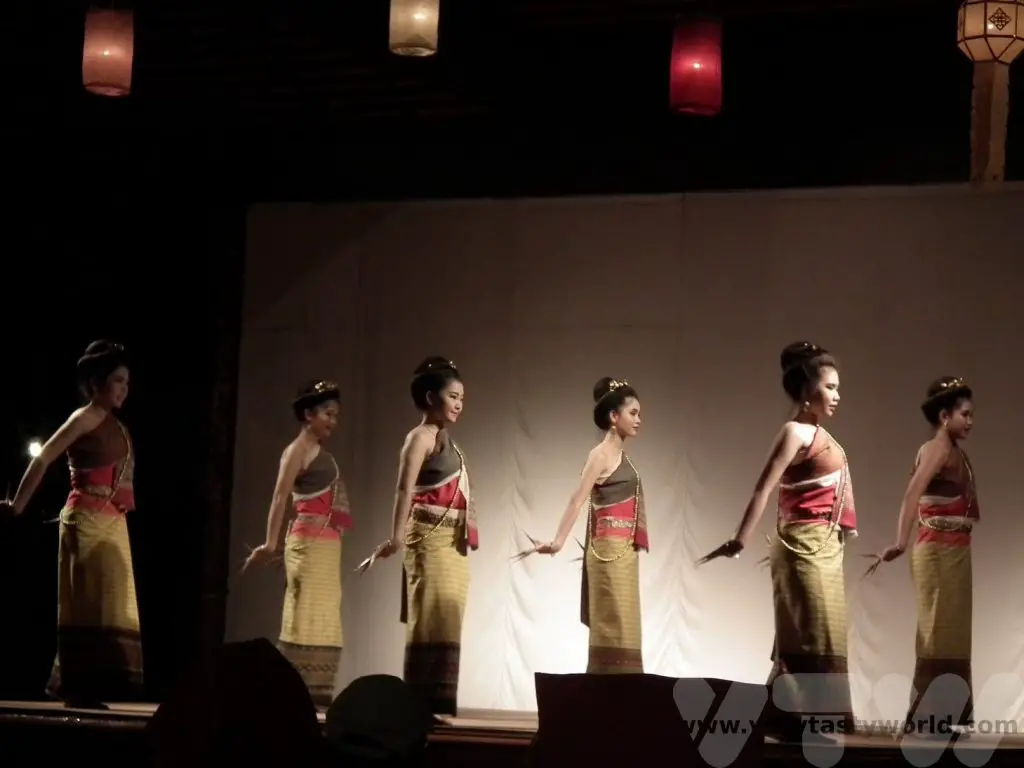

…before we moved outside to see some fire-based martial arts and a cute lion dance.
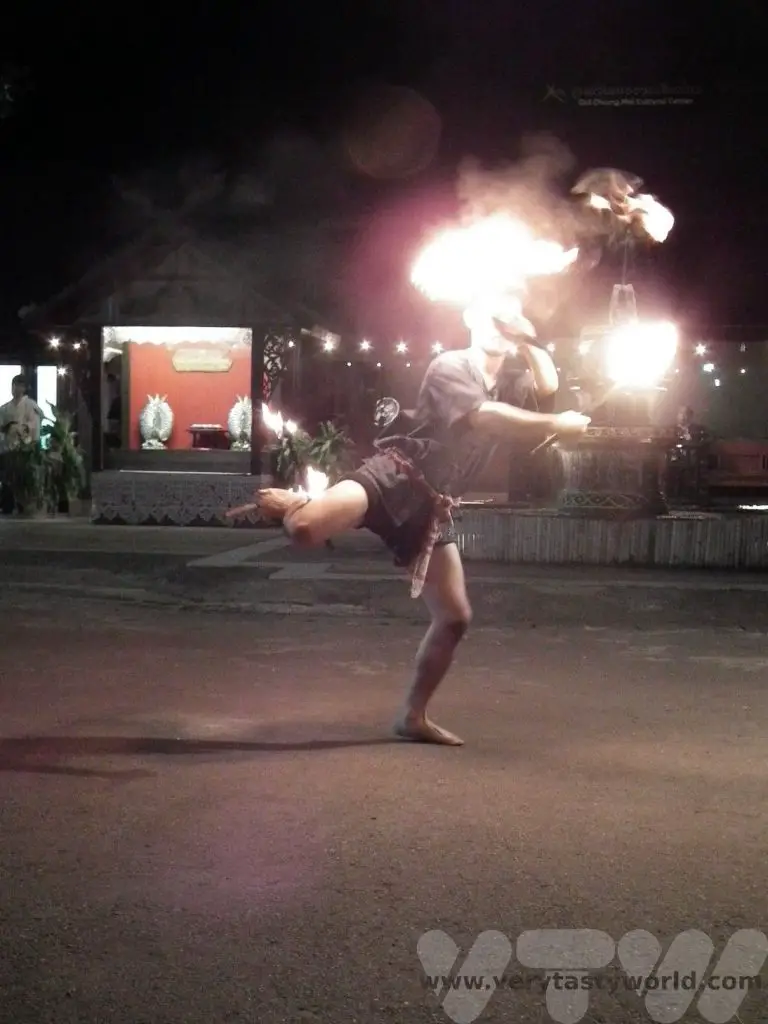
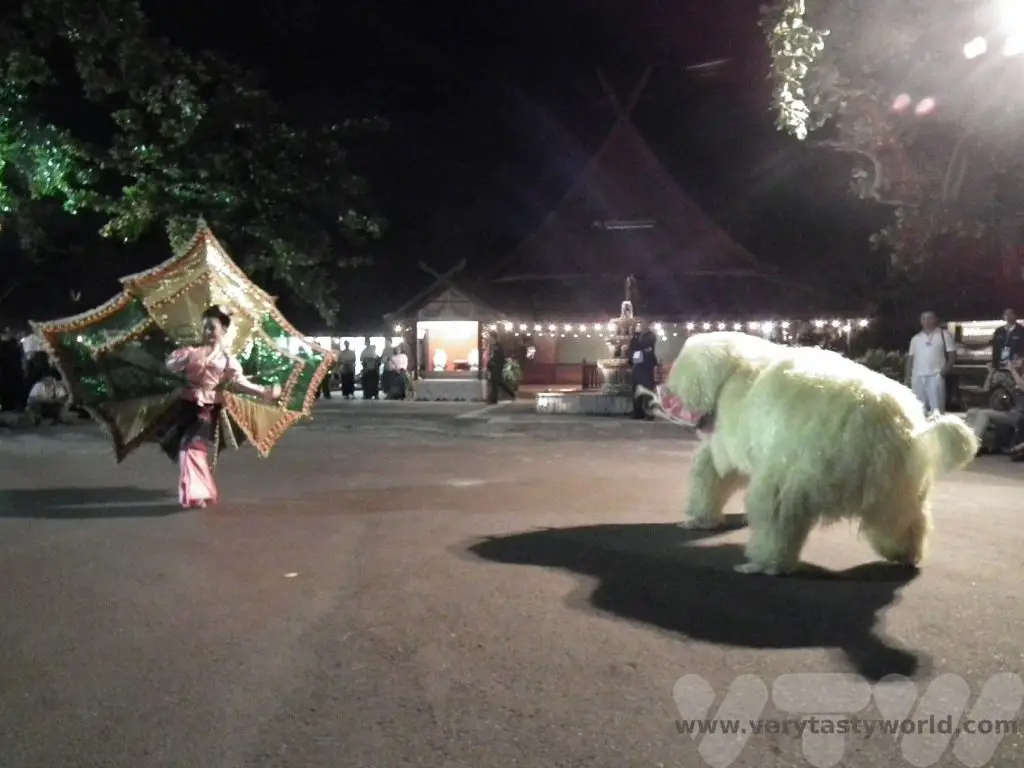
It is a bit touristy but was a fun evening out and an introduction to the culture of the region.
Temples Further Afield
If you don’t get templed out in Chiang Mai itself, there are many more wats to visit in the area surrounding the city. If you don’t have a pre-arranged tour, it’s possible to reach them by taxi. These can easily be arranged with local hotels and hostels. It’s worth agreeing a price first and consider asking for a round trip where the taxi driver will wait for you to explore the temple before taking you back. Both Wat Inthrawat and Wiang Kum Kam, located a few kilometres from the city centre, were definitely worth exploring.
Wat Inthrawat
Wat Inthrawat is one of the best preserved wooden temples in the region. It’s located in the Hang Dong district around 10 km south of Chiang Mai, in the village of Ban Ton Kwen. Small, but perfectly formed, this temple is still in its original state.

It has a wihan built in the Lanna style with typical nagas at the entrance steps.
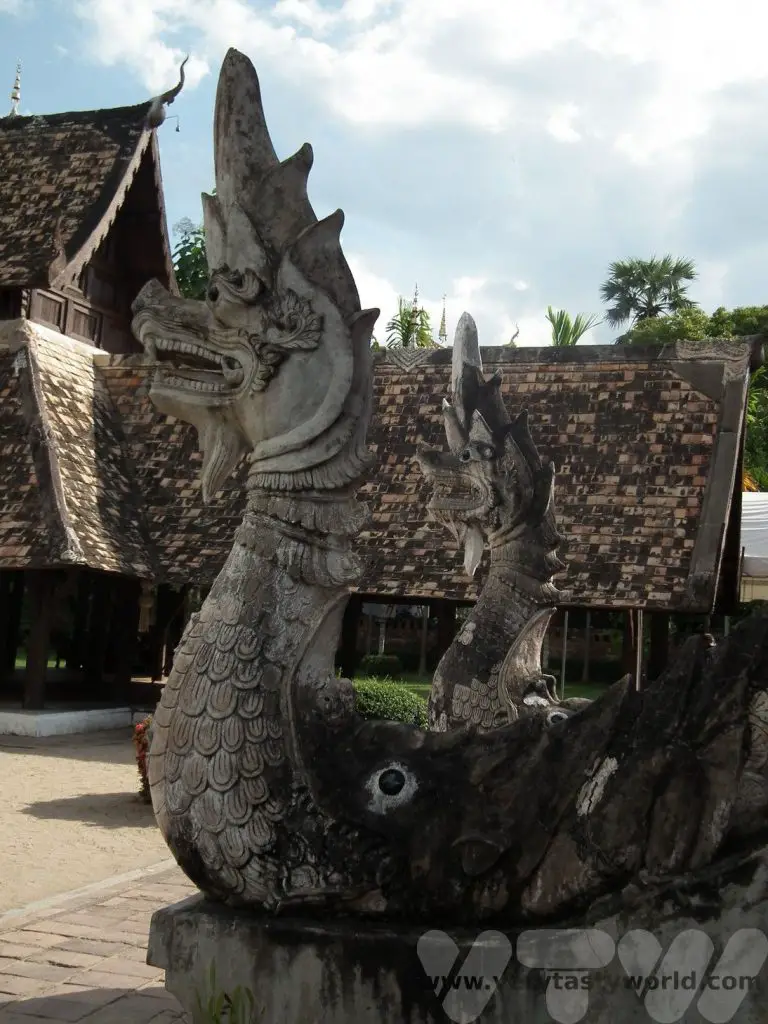
The roof has three tiers and also features some impressive and very decorative features at the tips of each tier. The quality of the craftsmanship is remarkable.
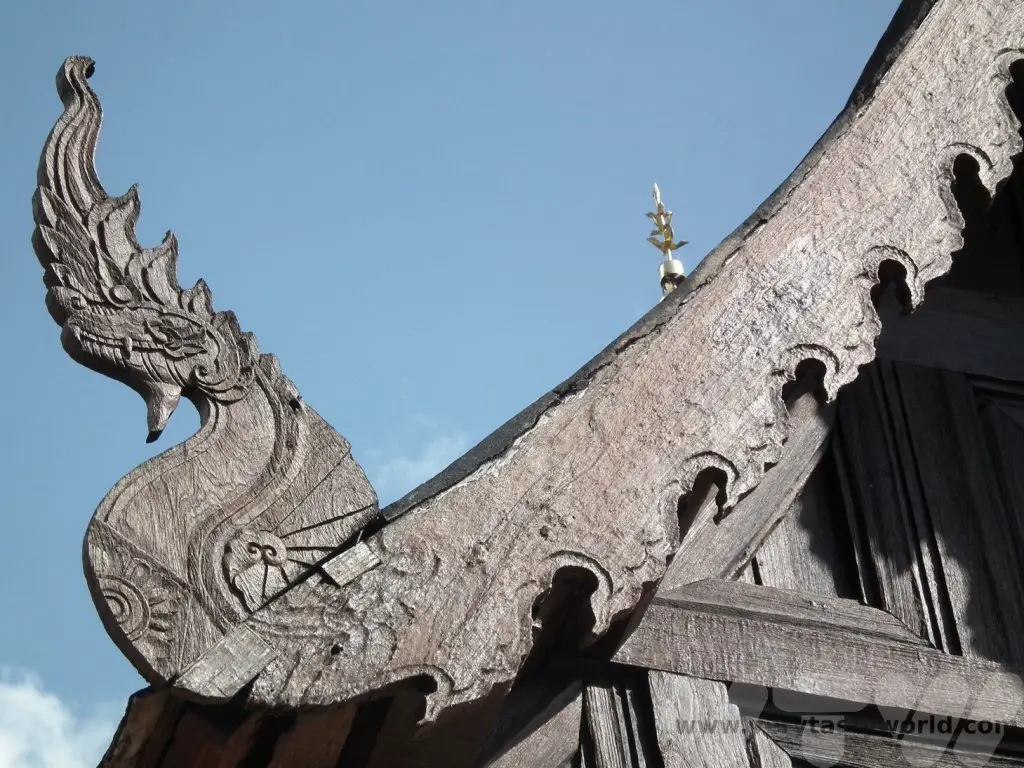
Wiang Kum Kam
Around 5km southeast of Chiang Mai lies the archaeological site of Wiang Kum Kam. This former city was built by King Magram. It was originally the capital of the Lanna in the 13th century but Magram decided to relocate to Chiang Mai, situated at an altitude 12m higher, due to serious flooding at this site. Although the area remained inhabited for several centuries it was finally abandoned after a massive flood which deposited a huge amount of sediment over the buildings. Much of the city has now been excavated and it’s possible to explore the ruins. It’s an extensive area and you can ride around the site in a horse drawn cart or tram. It has a visitor centre, located on Rte 3029, which has loads of information about the site and that’s also the place where you can pick up transportation. It’s possible to visit several temple complexes.
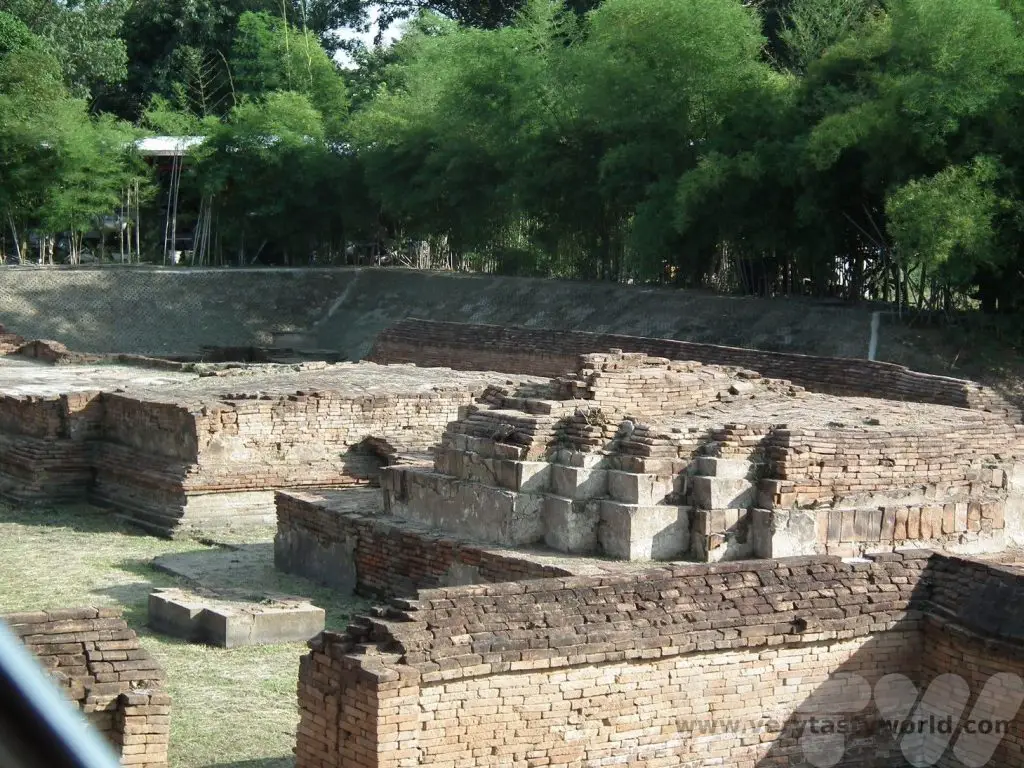
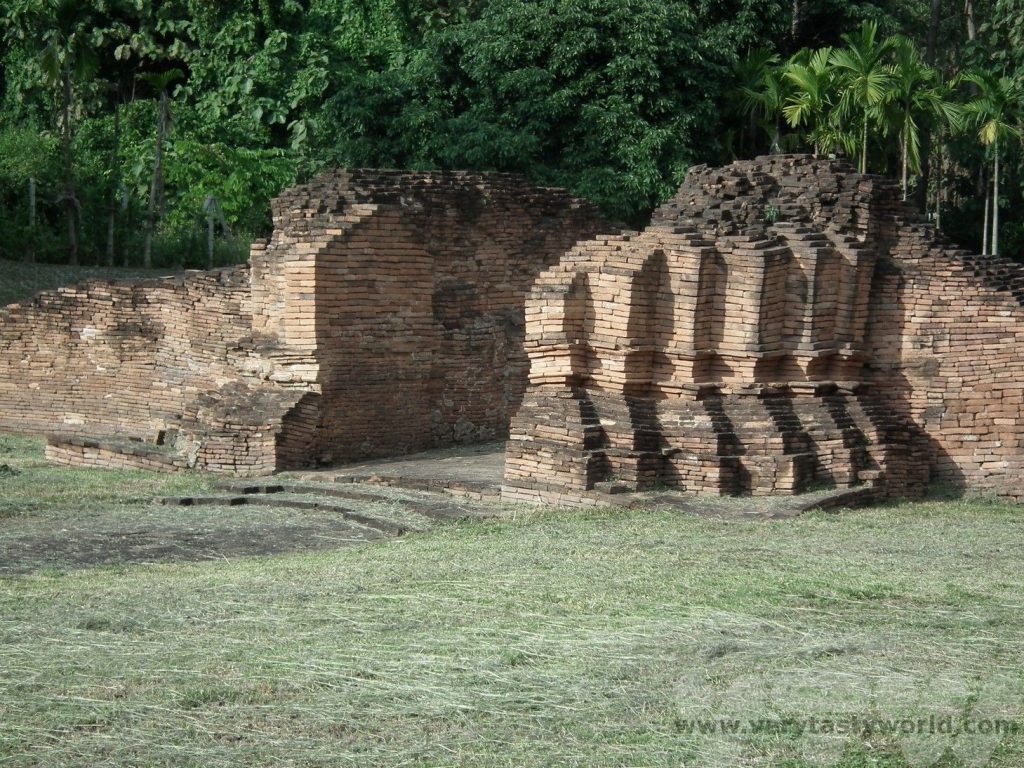
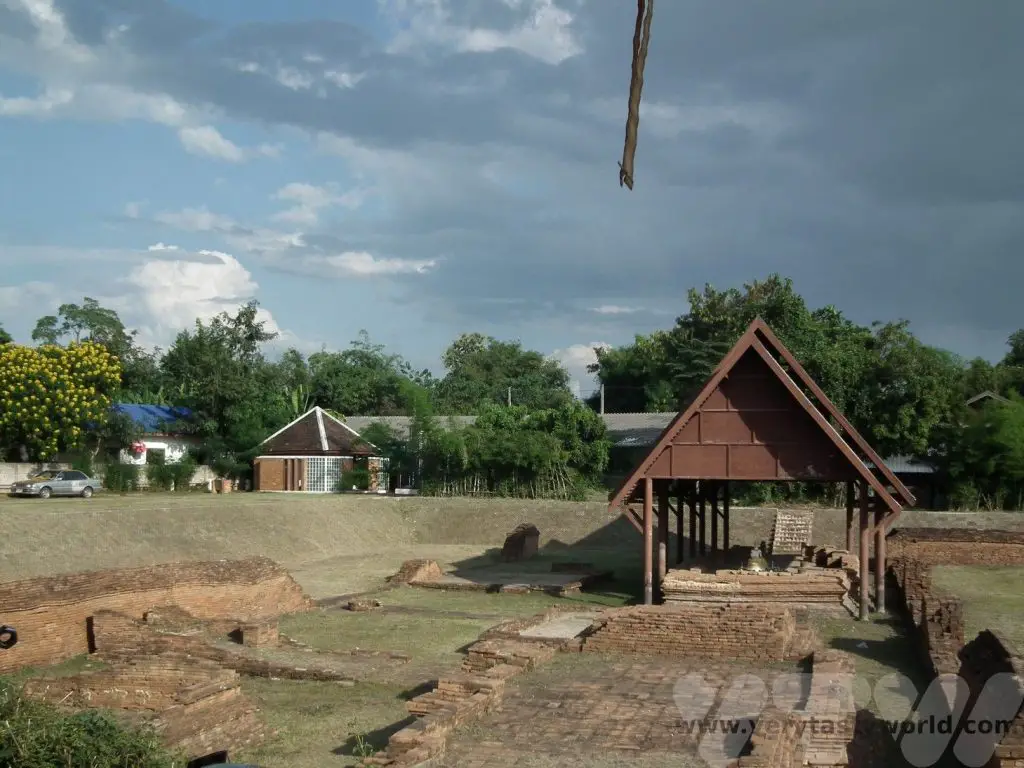
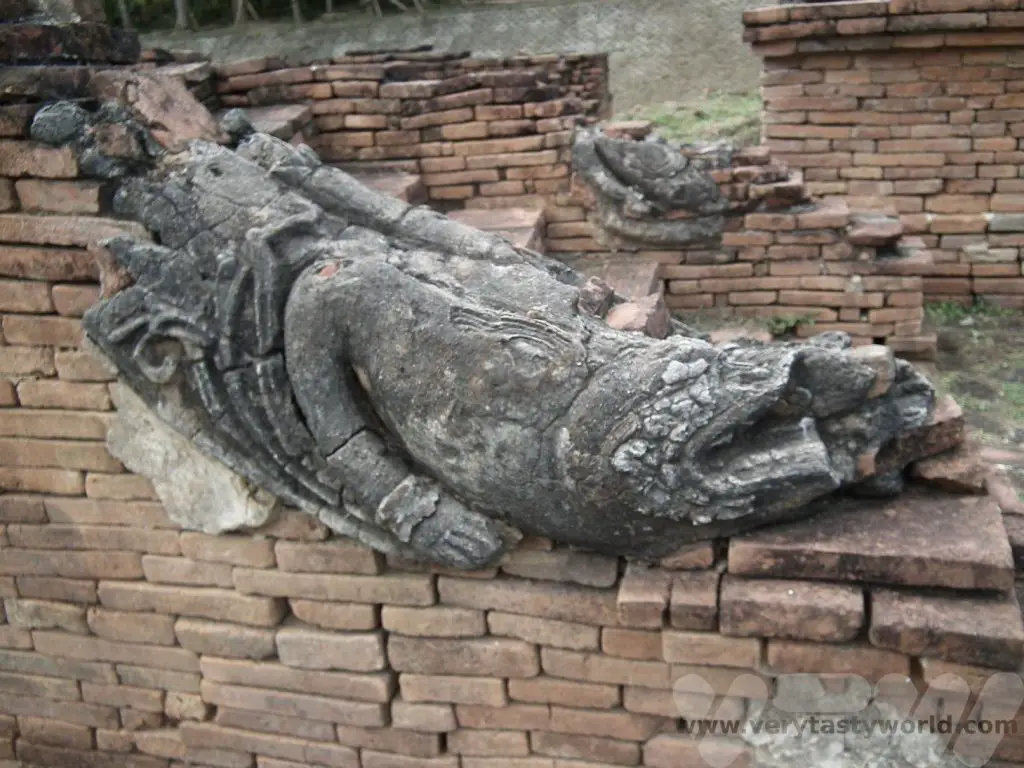
Wat Chedi Liam is the highlight of the complex. At over 30m tall, and taking the form of a pyramid structure, it has five main tiers. Each of these contain twelve Buddhas, three on each side, located inside their own alcove. It remained relatively unaffected by the floods over the centuries and remains a working temple.
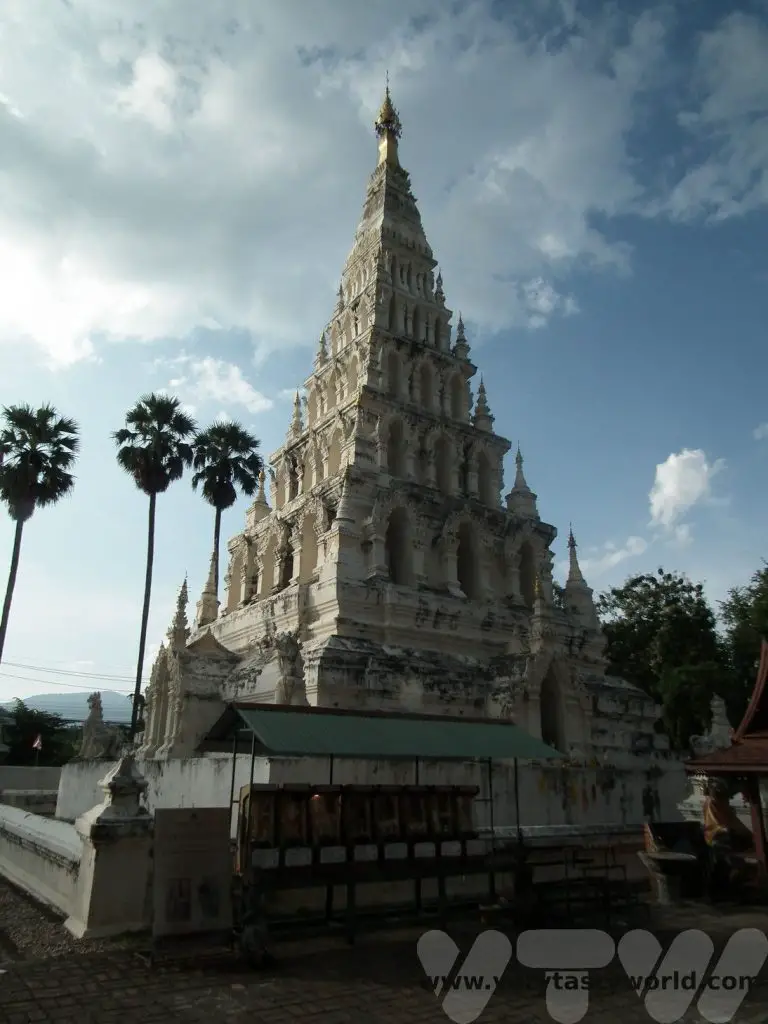
Activities in Chiang Mai’s Wider Area
Although it’s possible to spend quite some time exploring the city there are also loads of trips to take in the surrounding area.
This orchid farm was a pretty distraction for short while on the way to Mae Sa.
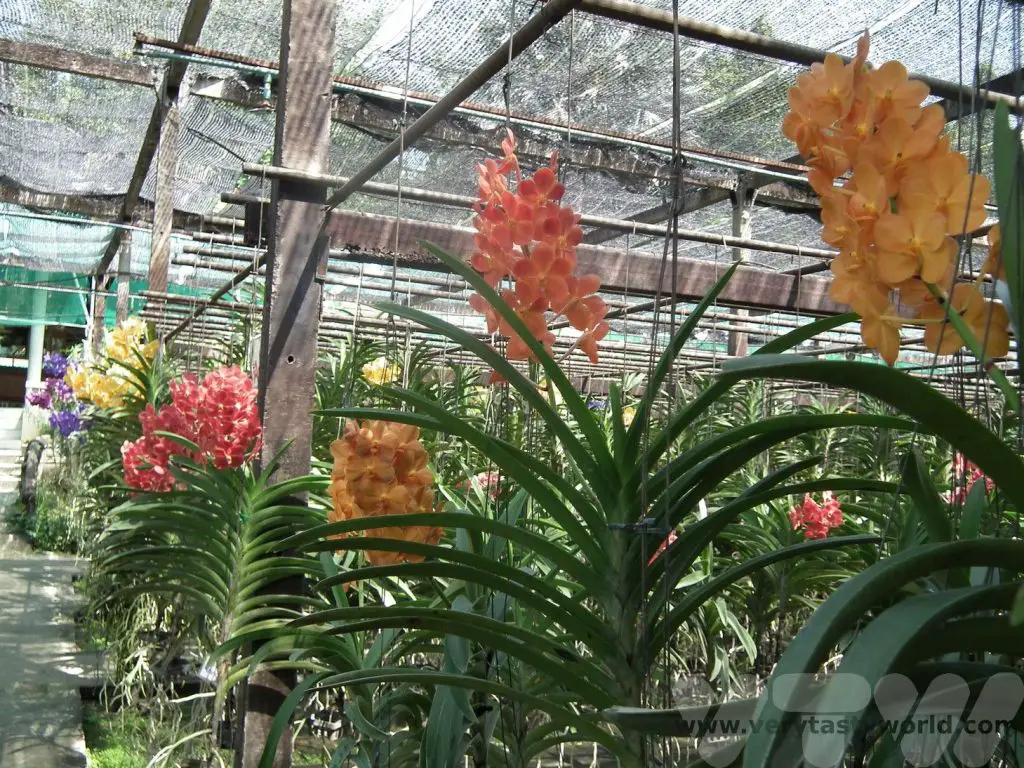
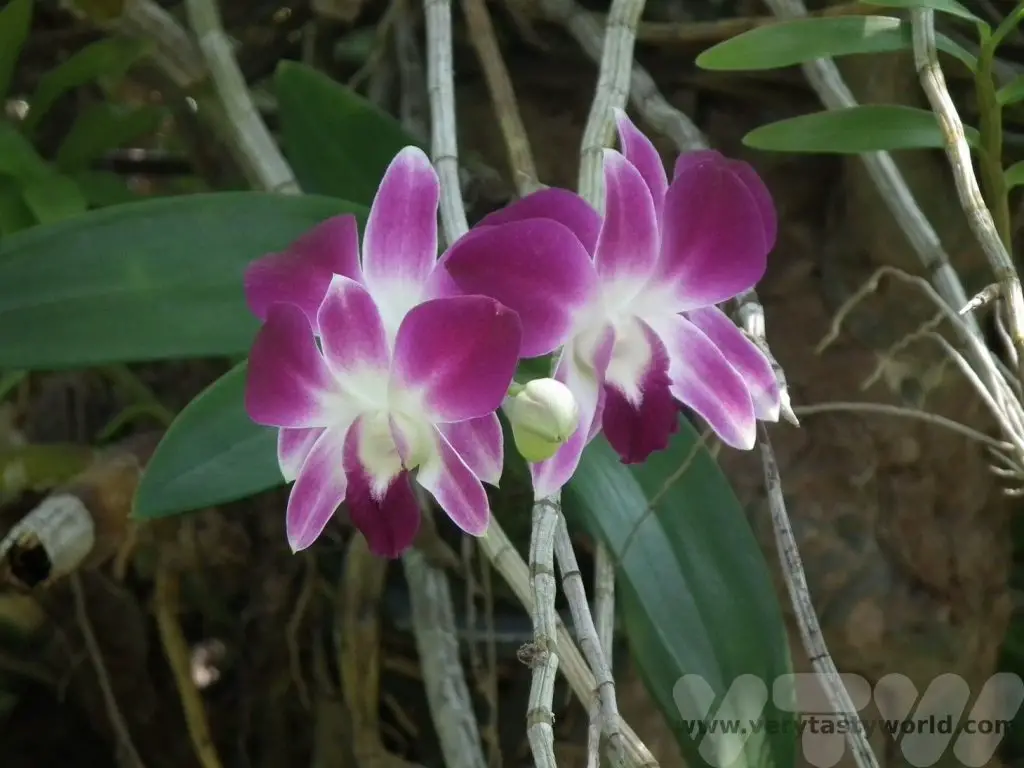
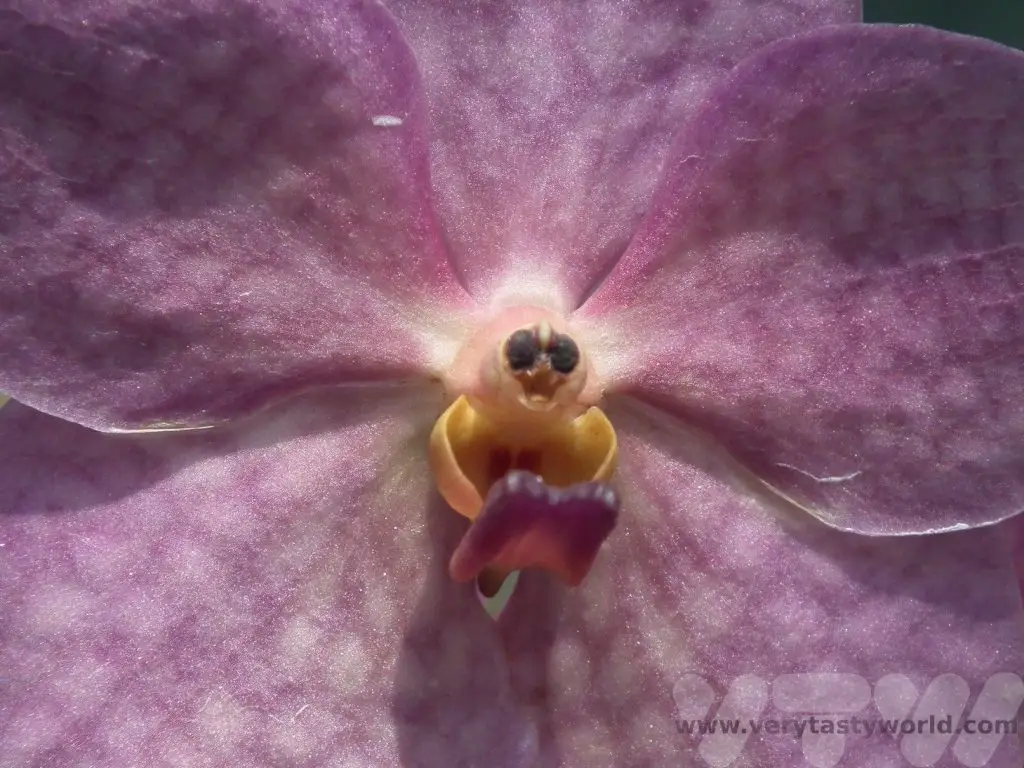
Mae Sa Waterfalls
Located in the Doi Suthep-Pui National Park, around 30km from Chiang Mai, Mae Sa offers a series of ten waterfalls spaced a few hundred metres apart. You can follow the pathway alongside the falls to enjoy a pleasant walk and swimming in the pools is allowed, if you desire. It’s not a challenging hike at all – just a pleasant stroll up a gentle incline. It gets quite crowded at the start of the trail but as you hike towards the upper falls the crowds melt away and you can enjoy the beauty of the surroundings. There are picnic spots along the way, so it’s possible to pack bathing suits and some tasty food to make a day trip if you fancy having a more relaxing time.
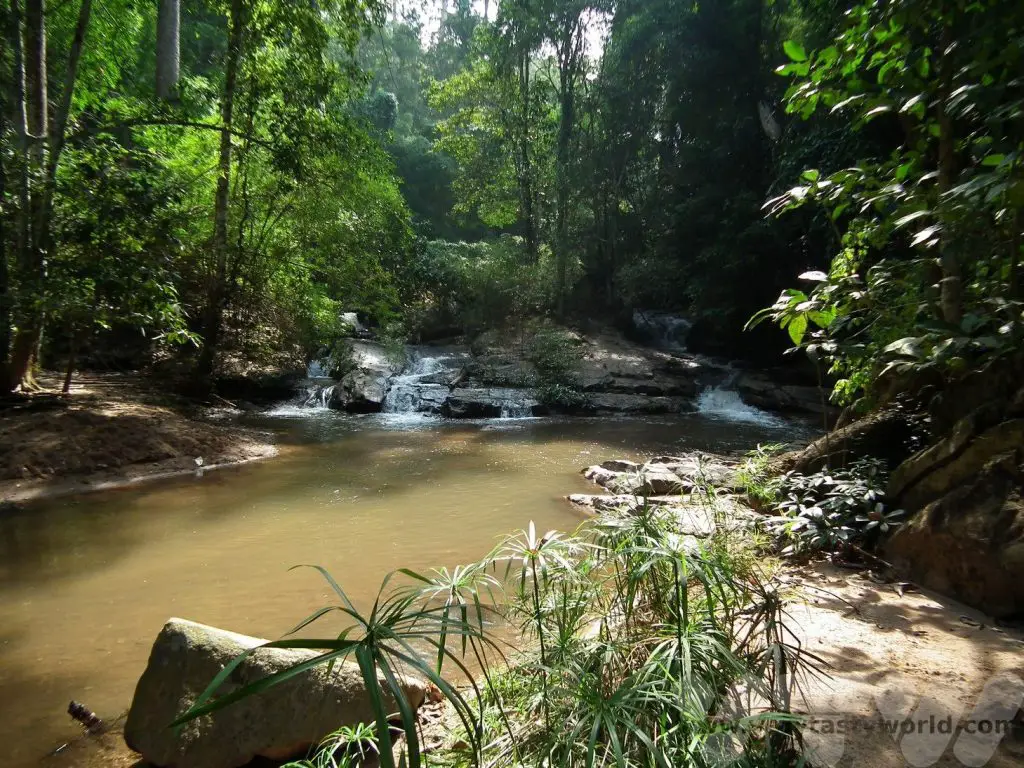
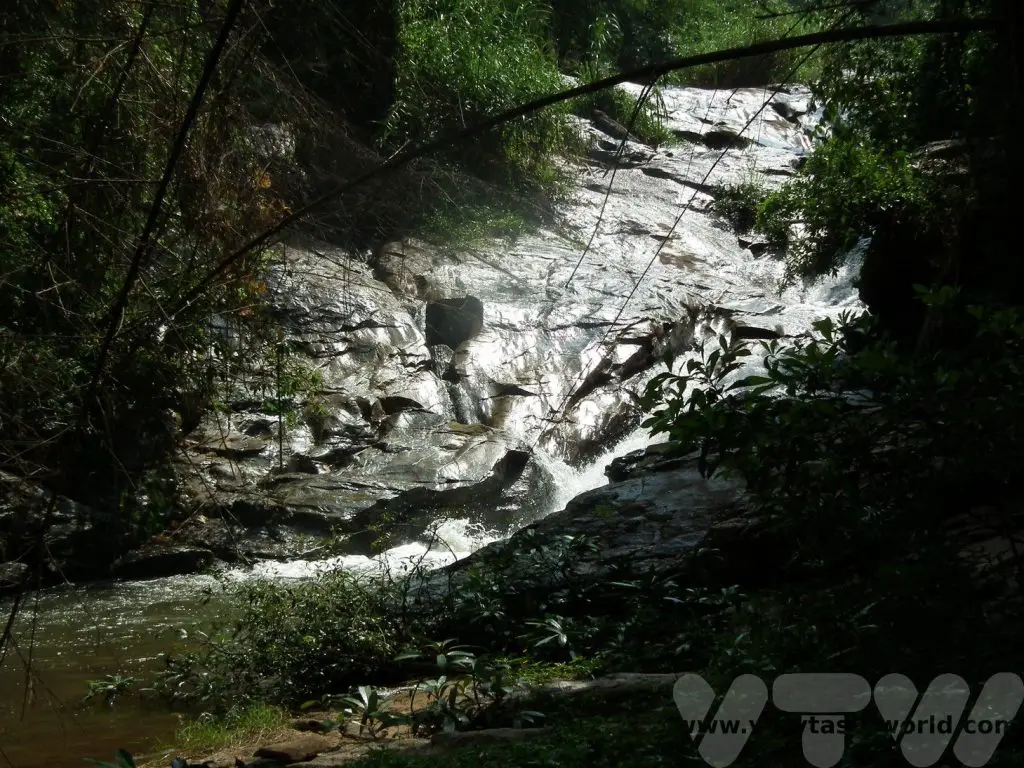
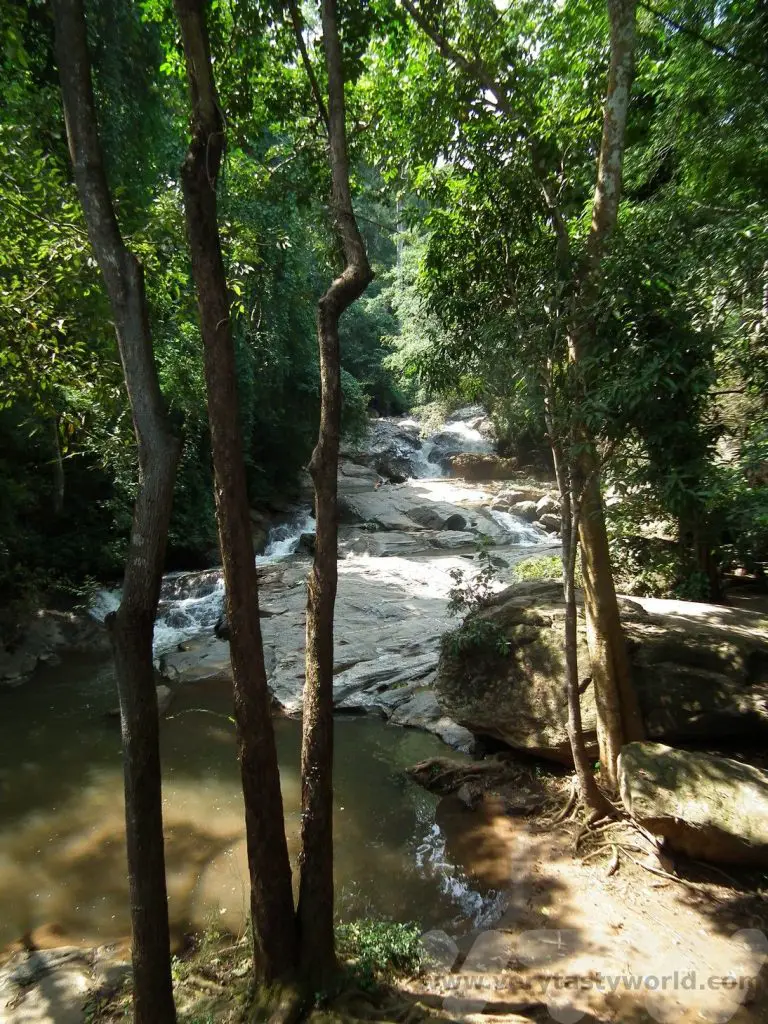
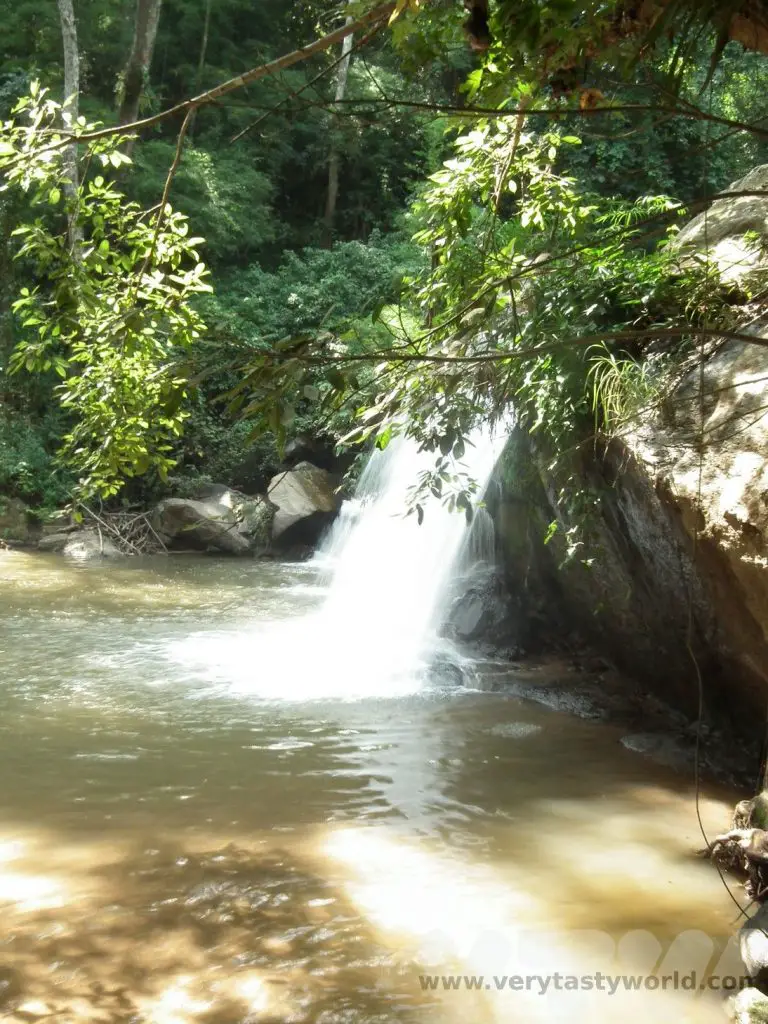
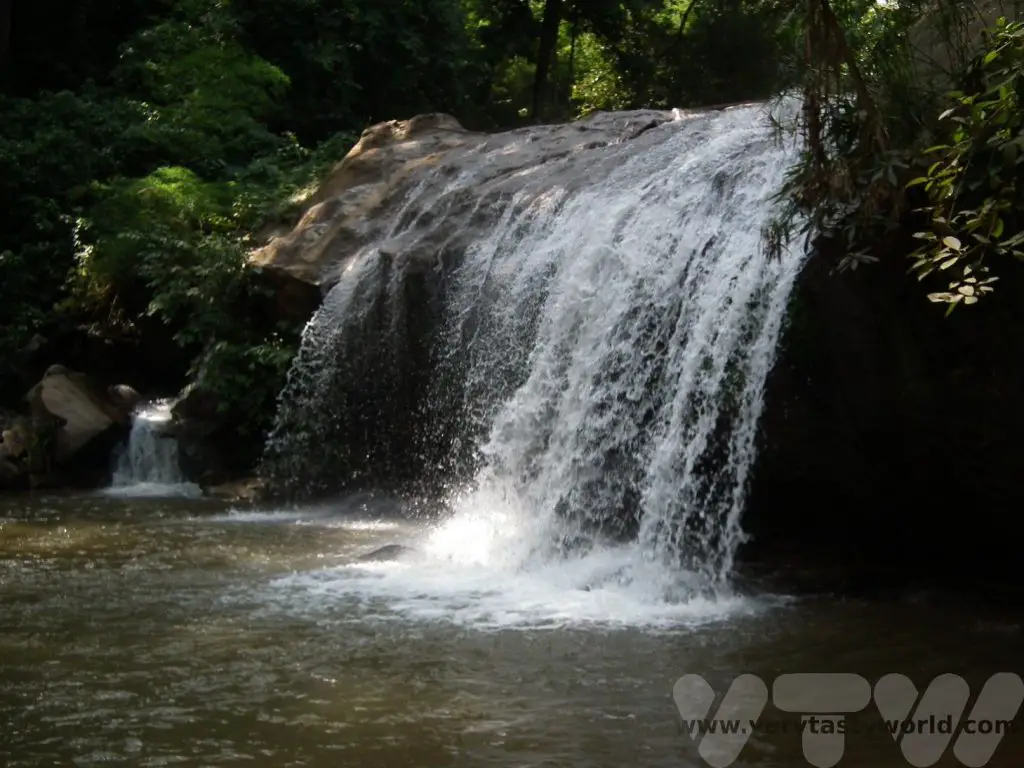
Elephant Sanctuary Visit
Visiting an elephant sanctuary is a very popular activity. There are loads in the area but do check which are responsible and ethical and make sure that they do not exploit the elephants. Many sanctuaries no longer allow elephant rides but focus on caring for and interacting with these remarkable creatures.
We visited a sanctuary a couple of hours away from Chiang Mai which is home to several elephants, all of whom have been rescued from the logging industry or from giving rides to tourists on iron chairs, a practice that really damages the elephants’ backs. When the sanctuary learns about elephants that are being mistreated they locate the creature and offer as much money as they can afford to convince the owners/abusers to sell their elephants. Each elephant has its own mahout (handler) who is responsible for its welfare. Set in 135 acres, the majority of the land is dedicated to growing food for the elephants. Tourists help provide much needed income to support the work of the sanctuary. Elephant riding (even bareback) is no longer allowed. We were able to meet the elephants and hand feed them – although some just helped themselves.
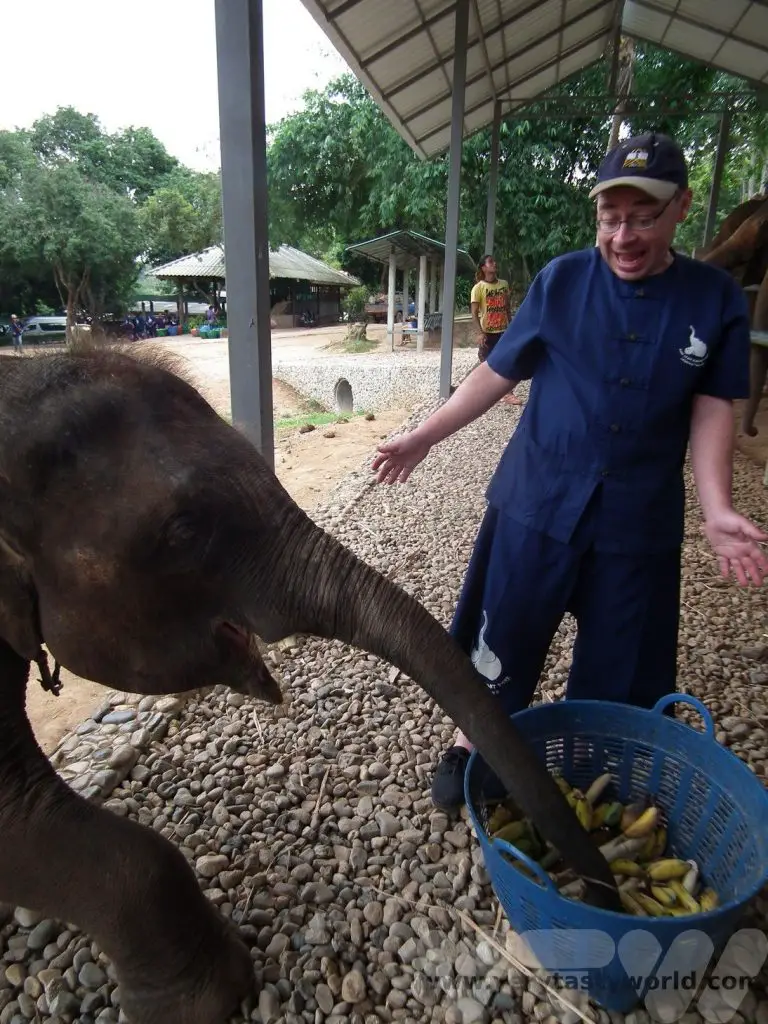
Elephants are highly intelligent creatures. Their brains weigh about 5kg. They are also emotionally intelligent; they recognise and interact with other elephants and have likes and dislikes just as we do. In fact, elephants that really hate each other need to be kept separated at the sanctuary. They also make judgements about the humans they interact with and, if they decide they don’t like someone, will refuse to co-operate with that person. Also – those cliches about elephants are true. They really have terrific memories. Thai people believe that you can judge an elephant’s character by the shape and quantity of its tail hair. Indeed, tail hairs are considered a sign of good fortune (and are sometimes kept as a lucky charm).
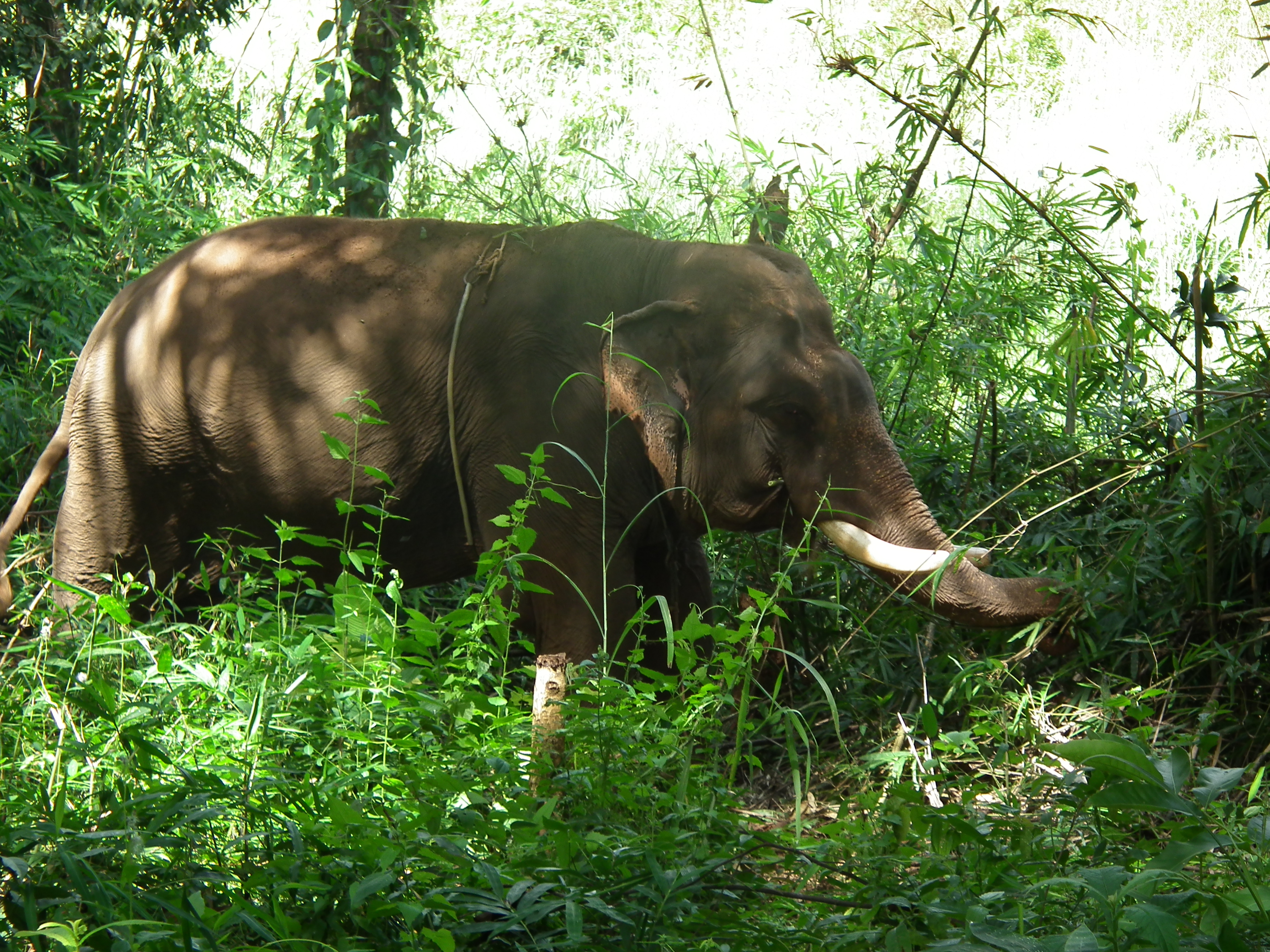
We went for a walk with an elephant called Tom Parr, a large male with long tusks. Tom Parr was very calm and co-operative, but was apparently scared of chickens and cars. He adored going into the jungle – many elephants who have been rescued from the logging industry have been traumatised and refuse to go back into the forest; they are never forced to go where they do not wish to.
Tom Parr knew very well that we had some sugar cane on him.
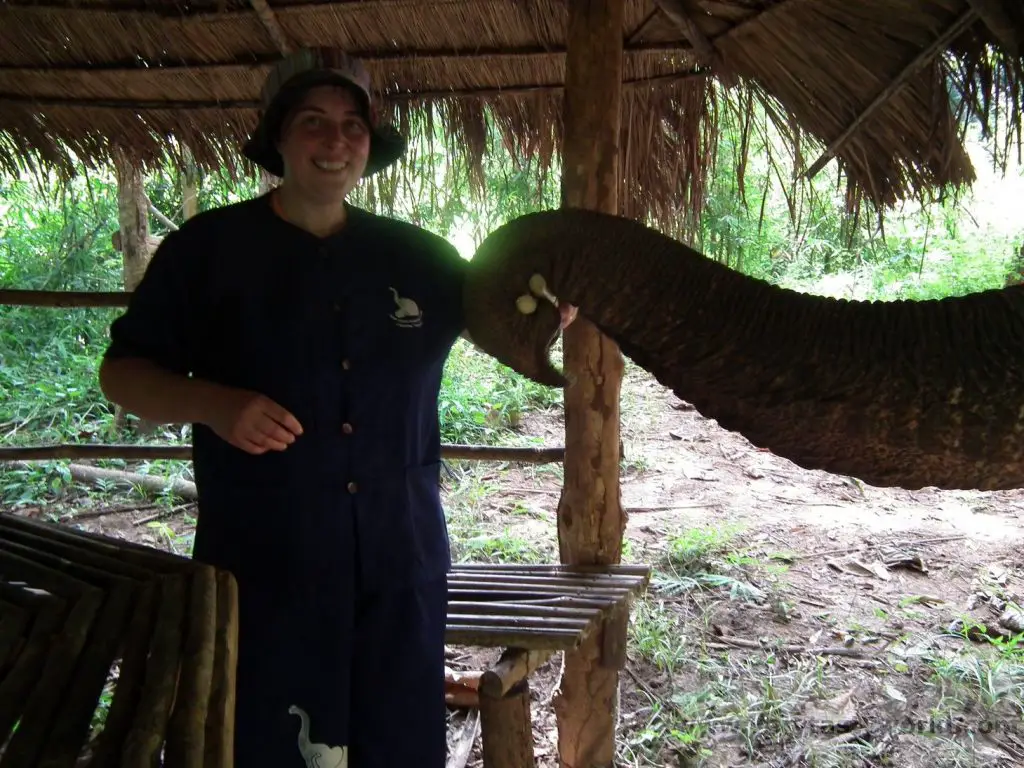
All the elephants are bathed at the sanctuary at least once a day. Tom Parr was very much looking forward to his bath and eagerly walked into the water and sat himself down. We joined him in the pool, which is fed by a local river, to give him a well-deserved wash. We showered him with water and scrubbed his skin and tusks. He was so happy. If he had been a cat, he would have been purring.
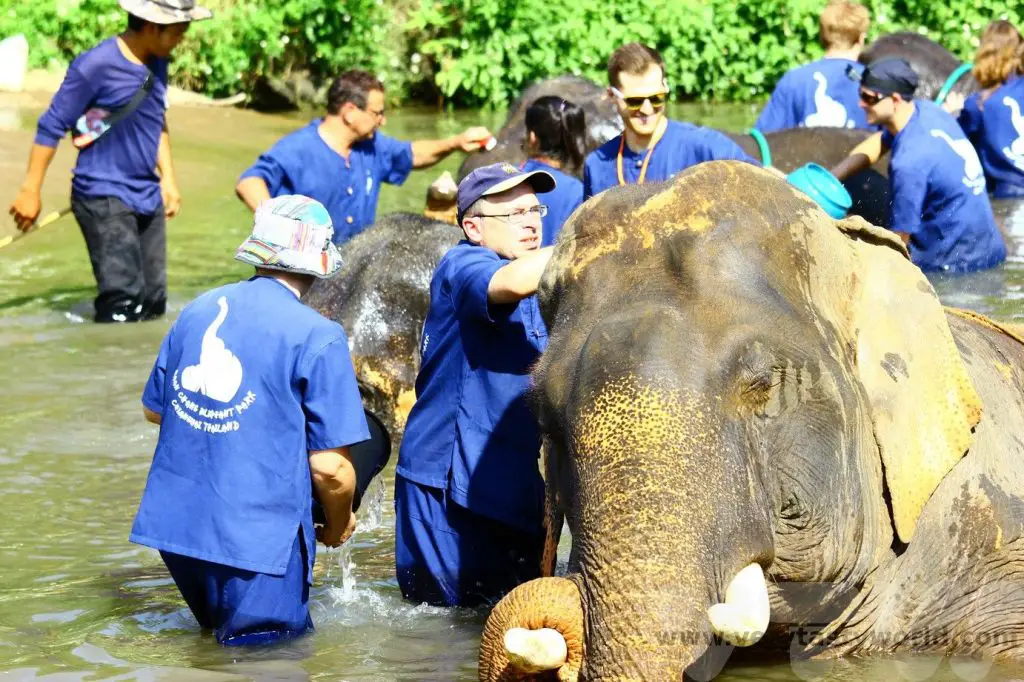
Throughout the experience we had been wondering whether we would need to ‘muck out’ the elephants at any time, something we had been quite prepared to do. However, the sanctuary had made arrangements such that the tourists’ exposure to poo was minimised. In fact, they even had a pooper-scooper chap on hand at the pond, ready to scoop any errant dung that the elephants generated into a bag and prevent the tourists getting too filthy. The sanctuary offers showers so you can wash down afterwards and change into your own clothes. The dung is often used to make paper.
A Chiang Mai Tour – Street Food and Markets
Back in the city, you’ll find that there are a number of bustling markets to explore, notably the night market which is a short walk away from the old city. On some nights of the week certain streets are closed to traffic and stalls pop up. These are really popular so expect crowds.
Of course, markets wouldn’t be markets without food stalls and Thai street food is amazing. The markets often have plastic tables and chairs nearby – they are not necessarily associated with any particular stall – so you can order your food and then take it to any table to enjoy at leisure.
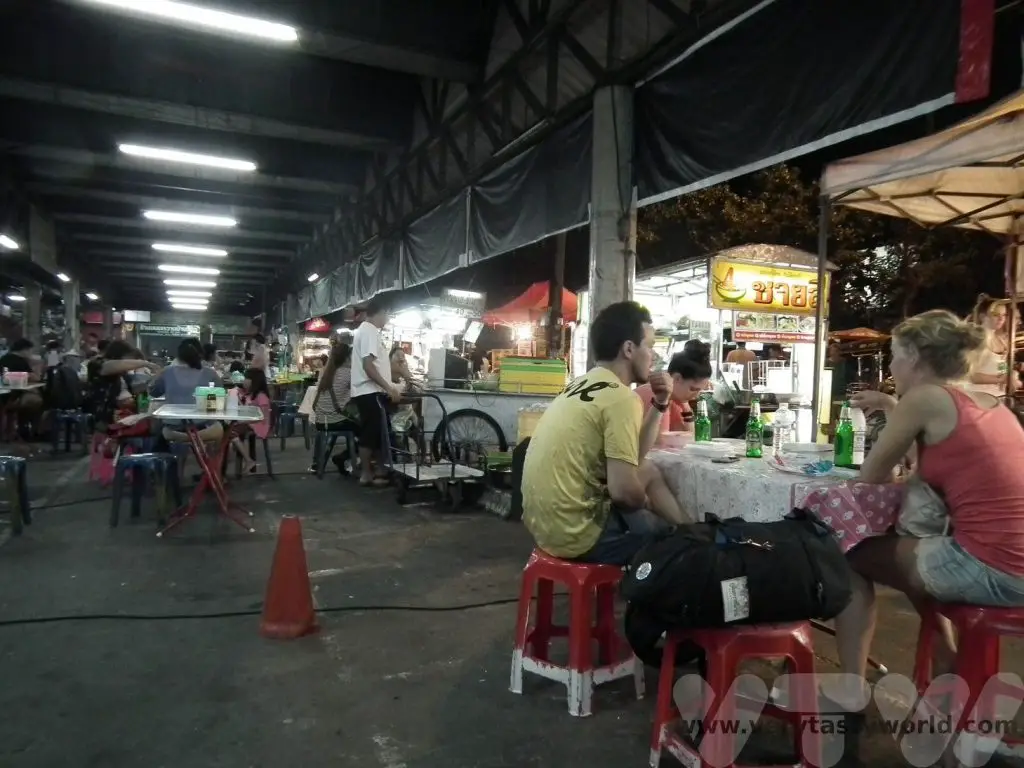
One of the best street food dishes is som tam – green papaya salad. Green papaya is shredded into a large wooden bowl and then pounded with beans, carrots and tomatoes. Sometimes little shrimp are added although you can ask for them to be excluded if you are vegetarian. Chillies, lime juice, palm sugar and fish sauce are added to the mix and pounded to release the flavours giving that characteristic Thai combination of sweet, sour, salt and spice. Be warned though, those teeny Thai chillies are hot! The dish is then adorned with crushed toasted peanuts for added crunch. On a warm, humid evening, it’s the perfect dish for a refreshing snack, preferably accompanied with a nice cold beer.
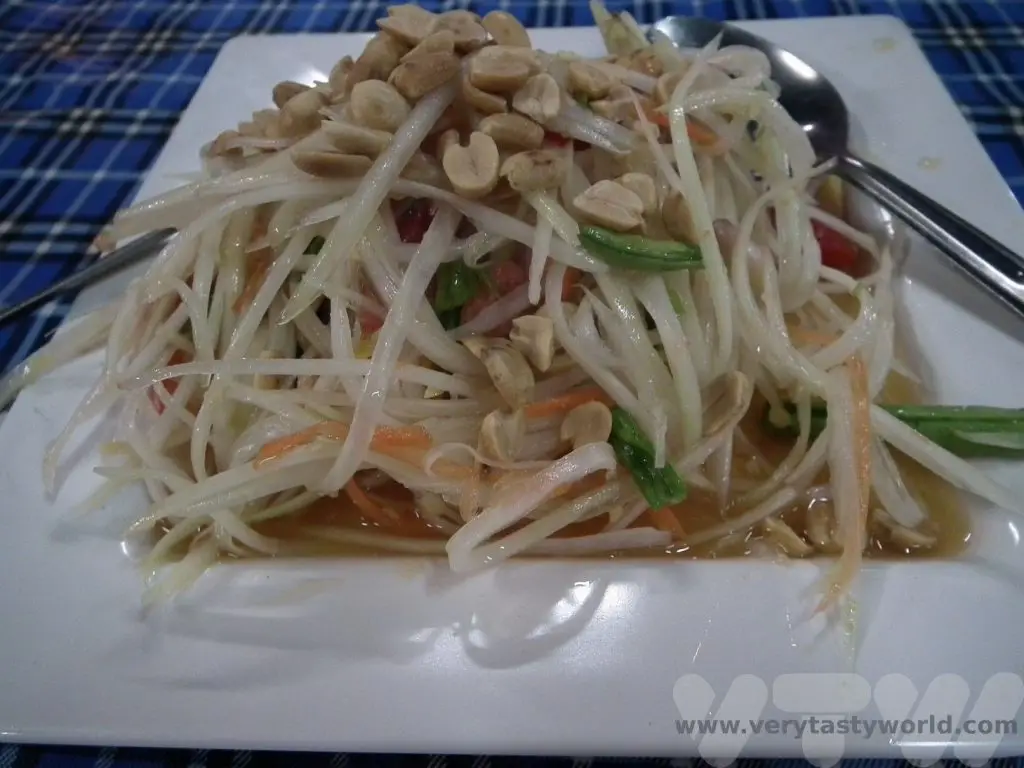
Related Posts You May Enjoy

Spirit of the Sea – A Visit to Fisher’s Gin Distillery at Aldeburgh
Suffolk, in East Anglia, located on the east coast of England, is a beautiful rural county and a fine place for foodies to visit. It’s famous for its pig farming and high quality pork as well as the seafood bounty from its 50 mile coastline. Adnam’s brewery is also based in Suffolk and most pubs in the area seem to be associated with them. Suffolk can also boast the closest gin distillery to the sea.
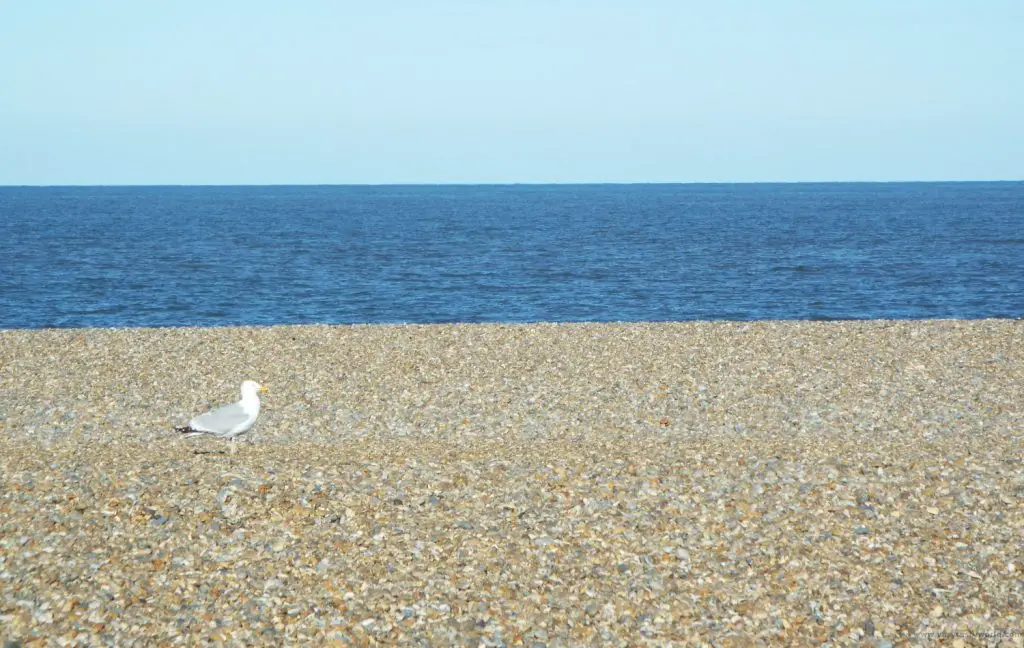
Fishers Gin is located in the coastal town of Aldeburgh and the team aim to capture the flavours of the area in their gin using locally foraged botanicals such as samphire and sea purslane. The distillery is located right by the seashore – literally a stone’s throw from the beach. They offer tours of the distillery – an afternoon tour and, later, a sundowner, which has all the elements of the earlier tour but you also get to taste some local food and go home with a Fishers tote bag and a gin mug. We opted for the sundowner.
On arrival we were greeted with a warm, “Hello, would you like a G&T?” which is one of the best possible welcomes. The G&T (a double, of course) comprised Fishers original gin accompanied by a can of Double Dutch tonic water which contains less quinine than traditional tonic waters and hence is less bitter. The G&T was served in a rather splendid tin cup, a nice change from those enormous balloon glasses full of ice that seem to be so trendy these days. Ice and a slice were mandatory of course, but the ice cube was very large, so it kept the G&T cold and did not to dilute the gin. (Note to self: make very large ice cubes in future.) The garnish was a slice of dried orange and a sea purslane leaf. The gin itself is a London Dry Gin but is unusual because many of the botanicals are particularly savoury and have a salty edge to them. Samphire (rock and marsh samphire are both used in this gin) and sea purslane are key ingredients, foraged locally, and both have a flavour which subtly recalls the taste of the sea.
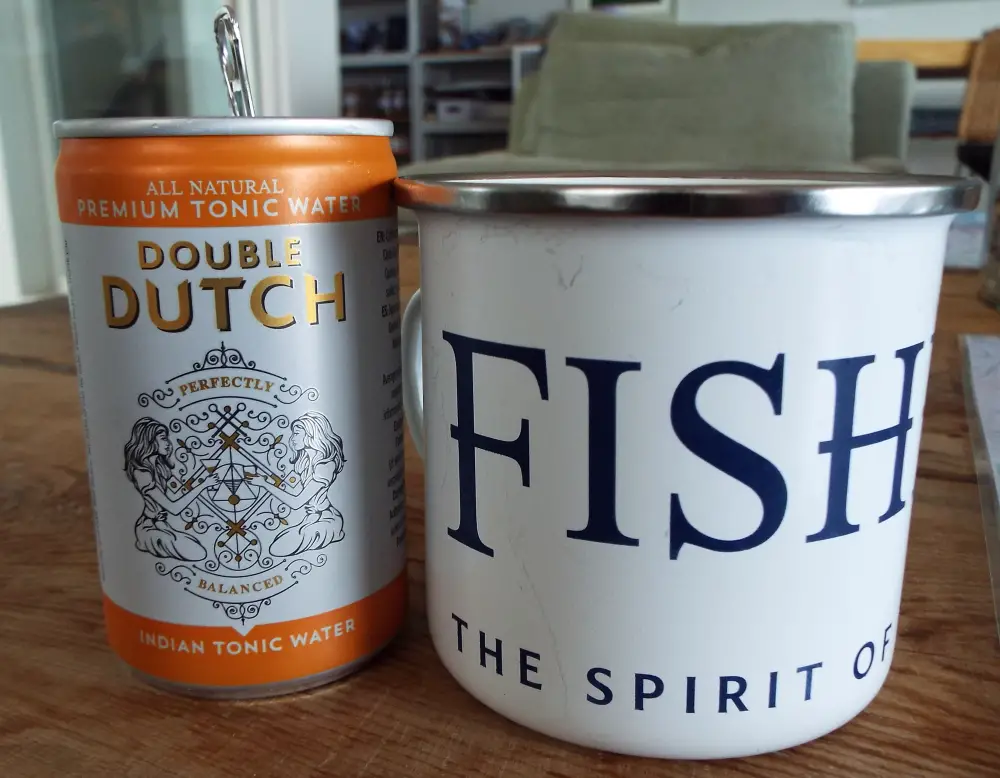
After watching an audio visual display about the local area and botanicals we met the still, which is named Watson after the owner’s dog. The gin making process was explained to us: The botanicals infuse in the base spirit for 16 hours before distillation. There are three outputs from the still: the head (the first few litres of liquid that emerge from the condenser), the heart and the tail (the last few litres). Like whisky, the head and tail are discarded.

As part of the tour we learned about the history of gin – that it originated in the Netherlands – and also about the different botanicals used in the gin-making process by making a botanical tea. We were provided with the botanicals and an empty teabag (as well as another G&T to help the process) and tasted a variety of flavours.
Juniper is the flavour that defines gin as gin, so that was an essential. Then we experimented with various quantities of the botanicals used in Fishers gin to create a unique tea. Each ingredient was crushed using a dinky pestle and mortar to extract the oils and hence maximise the flavours.

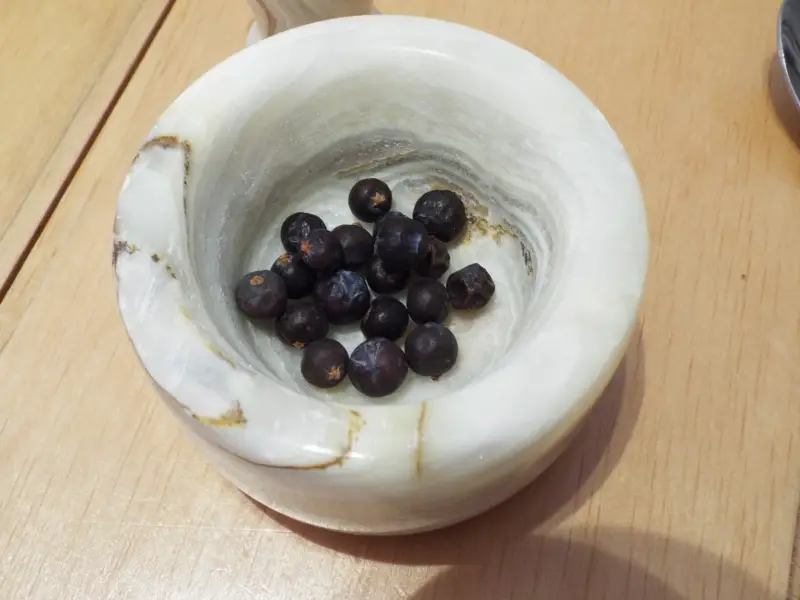
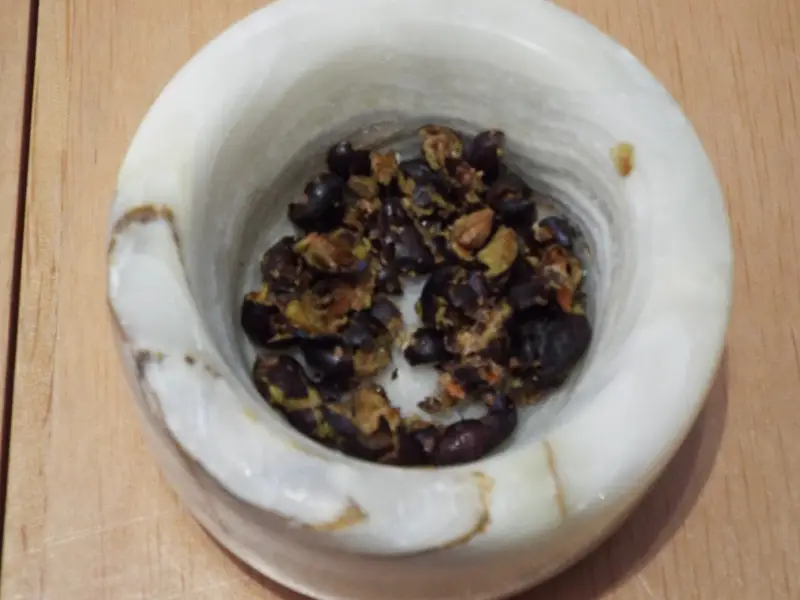
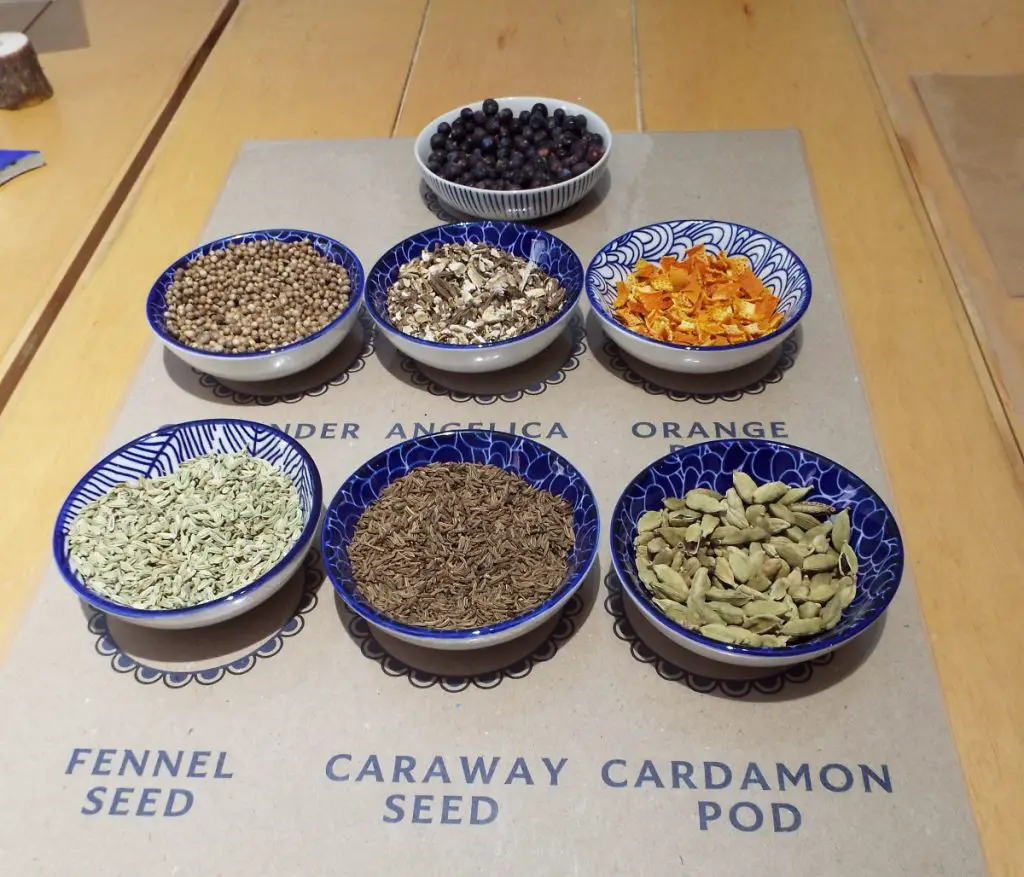
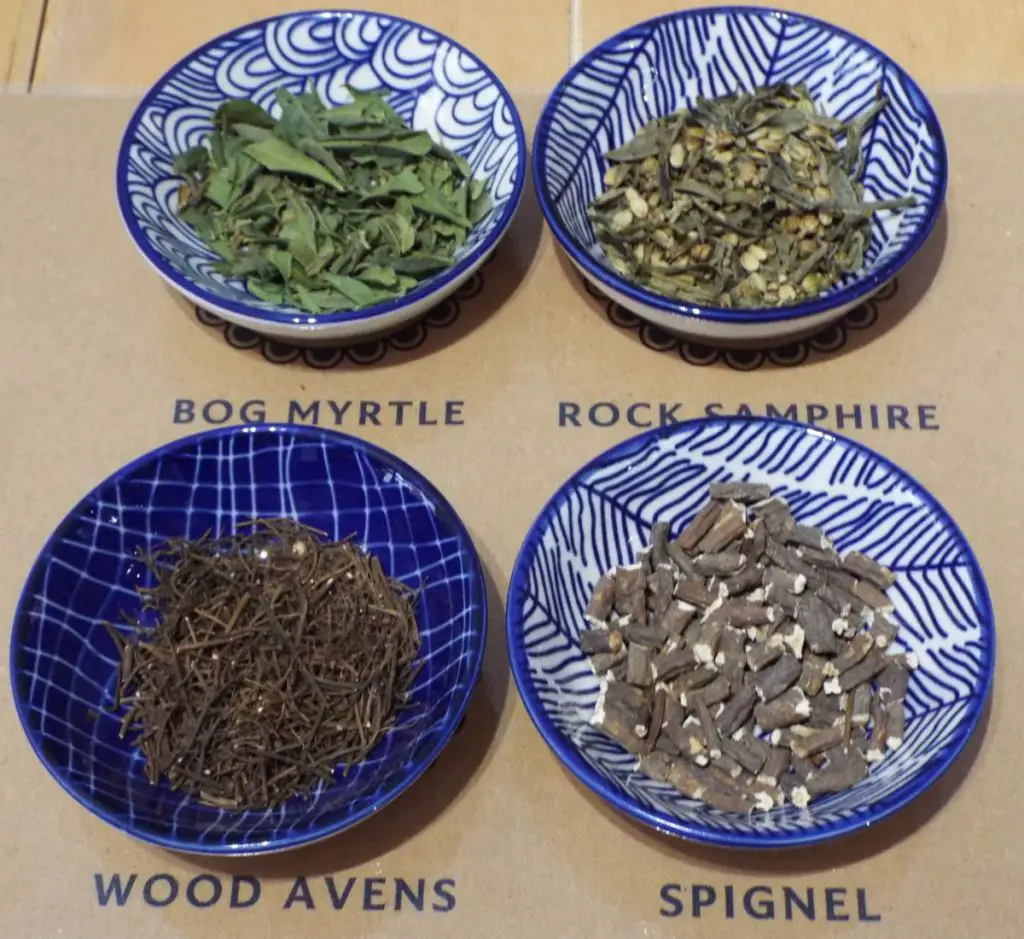
The teabags were then infused in a cup of boiled water and we could taste how our particular combination of botanicals worked together.
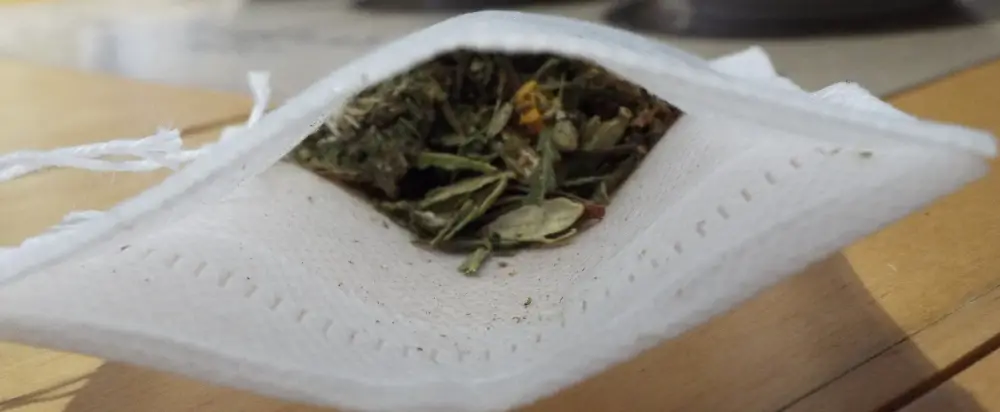
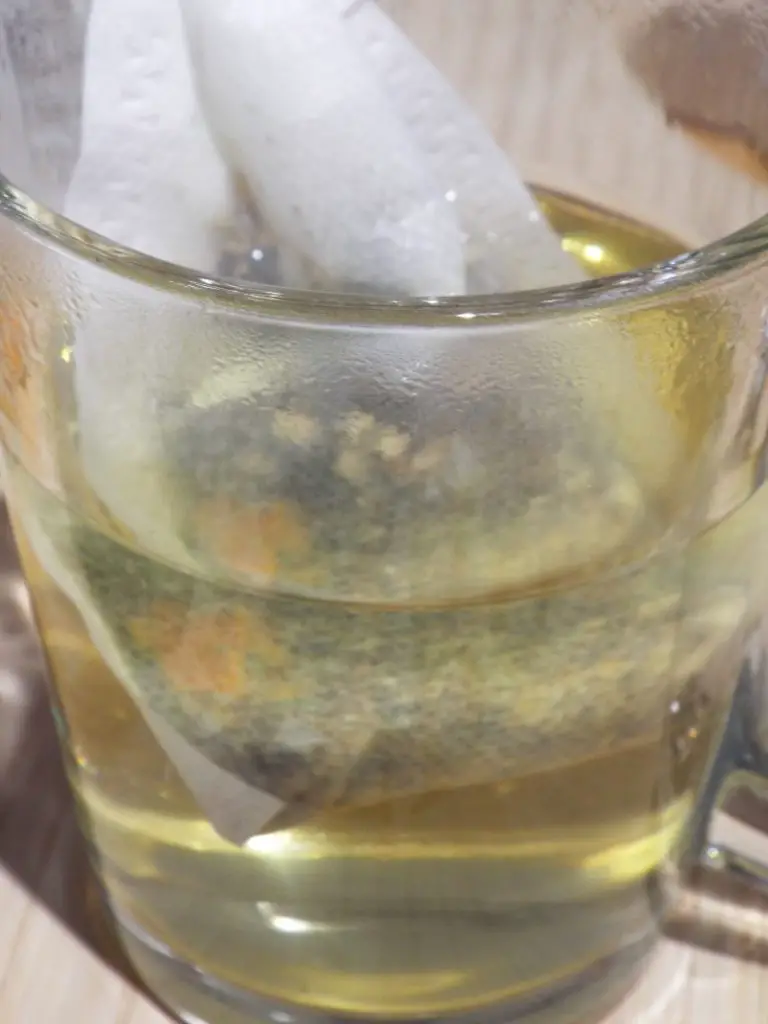
After making the tea we were invited to a tasting. There were three gins on offer: Fishers original, Fishers Fifty (which is stronger, having an ABV of 50%) and Fishers Smoked.
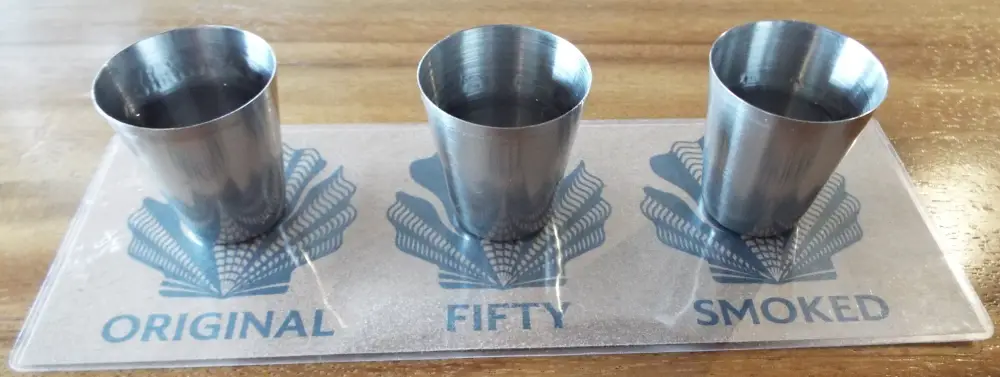
The smoked gin used botanicals that had been smoked at Orford smoke house, just down the road from Aldeburgh, for six days. Curiously, you can almost smell smoked fish on the nose but the finished gin is smooth on the palette, loses any fishiness but retains a gorgeously subtle smoky flavour. What is particularly interesting about this gin is the way that Fishers use savoury flavouring in their gins. Salt won’t get through the distillation process but the oils from the botanicals allow some subtly salty flavours to come through. Fishers also have a small still to experiment with flavours when developing a new gin.
And finally, we were offered a platter of local specialities: smoked mackerel pate from Orford, sesame hummus, sourdough and smoked salmon from l’Escargot deli, smoked cheddar and Stilton style cheeses from Orford.
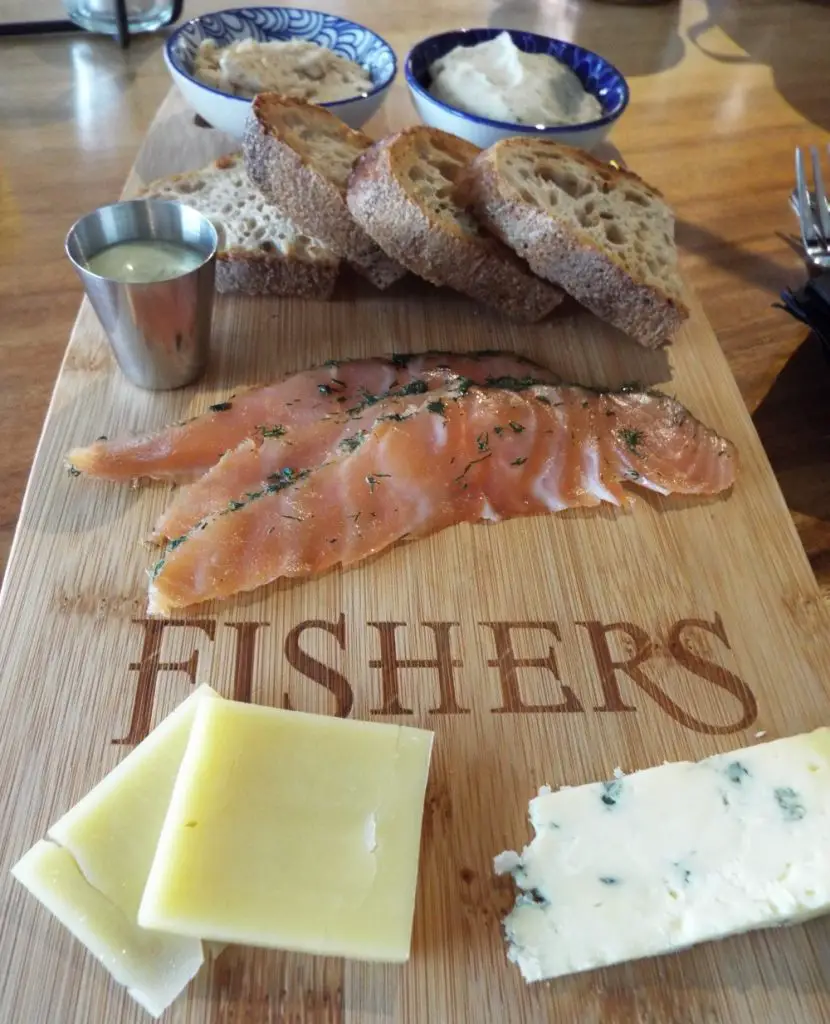
And the evening was rounded off with a couple of cocktails. A Negroni which comprised of Fishers Gold, Campari and sweet vermouth in equal measure and a Mule which contained Fishers Smoked, ginger ale and lime. Both were delicious.
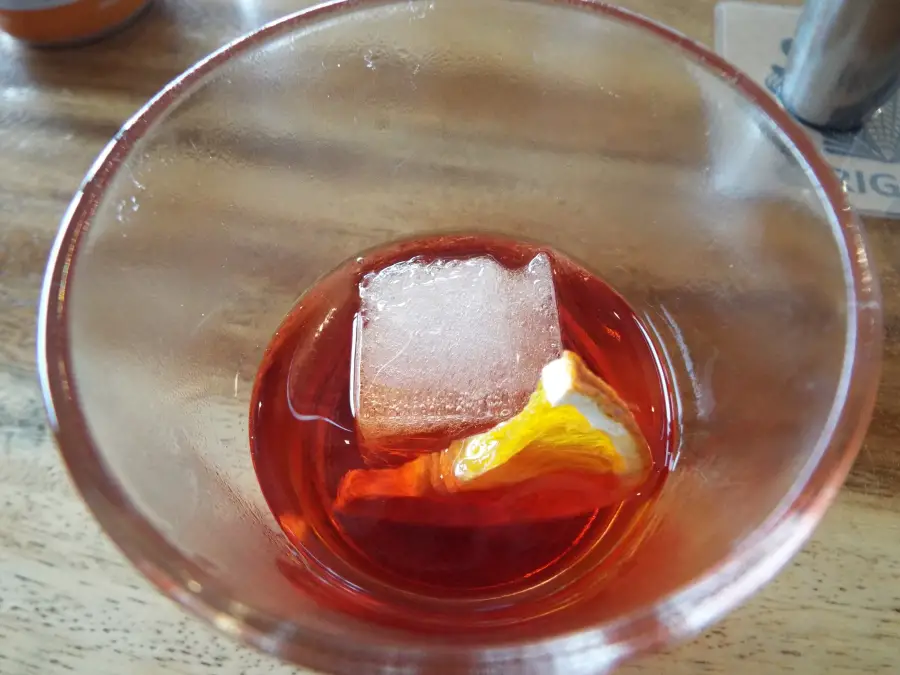
The Fishers team were very friendly, the tour was informative and the tastings hugely enjoyable (hic!). We ended up chatting with our hosts for much longer than the planned tour time as they were so welcoming and accommodating. The experience is highly recommended.

- Things To Do In Rovaniemi In Winter
- Avebury Stone Circle vs Stonehenge
- Five days in Copenhagen
- Is Sarajevo Worth Visiting?
- A Svalbard Holiday – Land of the Midday Moon
- Afternoon Tea in Coventry
We attended this experience using our own resources.
Film Review: Nina’s Heavenly Delights (2006)


Writer/Director: Pratibha Parmar
Country: UK
Cuisine: Indian set in Scotland
Film Rating 8/10
Foodie Rating 8/10
“Taste is in your heart. Always follow your heart.”
Culinary pleasure mixes with romantic pleasure in Nina’s Heavenly Delights, the title of which prefectly reflects its tone and theme.
Nina Shah (Shelley Conn) is coming home to Glasgow after three years having departed in circumstances that left her estranged from her family. But her beloved, enthusiastic and talented father has recently passed away and she has returned to attend his funeral. He was the head chef and owner of the family’s highly regarded restaurant The New Raj. It was highly regarded due to her father’s culinary prowess but unfortunately he wasn’t financially successful so the family find themselves having to deal with a severe case of austerity and crippling debt. Rival restaurant Jewel In The Crown have the finances to match their bourgeois appearance and clientele and, what’s more, they wish to buy out The New Raj. Nina is more than perturbed by that prospect, instead pledging to honour her father’s legacy by maintaining the premises, keeping the restaurant running and, more importantly, winning a substantial cash prize in a well-respected curry cooking competition. She is convinced that his superior recipes for amazing Indian cuisine will win the competition and solve the family’s debt problem. But, of course, there are a number of rival curry chefs, including the decadent and narcissistic chef of The Jewel In The Crown, Sanjay, who was meant to be Nina’s spouse, much to her chagrin. Instead she finds assistance – and romantic entanglement – with the delightful and talented Lisa MacKinlay (Laura Fraser), an old friend who now owns half of the restaurant. Together they master the details of this complex culinary artform and develop their understanding of taste. But there’s more than just the competition to be concerned about because how will family and the wider society accept romance in her life when they come from separate cultures?
“No sale ’til after the competition,” reflects Nina’s personal desire to make this grand plan work – before she discovers that it will become inextricably linked with her romantic one. This is a very much a masala movie with a blend of tasty spices to whet your appetite – it combines comedy and confrontation, romance and remorse, song and dance, cooking and eating as well some social commentary about the family retaining Indian cultural traditions within the context of living in Scotland.
Bollywood cinema is known for its exuberance and, in many ways, the themes in this film are straight from Bollywood – the initially hidden, often unexpected romances, as well as disagreements between the protagonists about how to resolve their issues within the context of social demands and family issues. Conflicts and love are narrative essentials, as are costume changes, songs and dance. Nina’s Heavenly Delights has all of these, and there’s even a reference to Bollywood in a video shop that has a poster of the classic Mother India just to emphasise the point. But, for all its charming twist on Bollywood conventions, Nina’s Heavenly Delights embraces East meets West in ways beyond the love of its two leads in its Glasgow setting. More Indian foody films are available including Jadoo Kings of Curry and Gurinder Chadha’s Bhaji on the Beach (1993), The Mistress of Spices (2005) and What’s Cooking? (2000) as well as many others.
As writer/director Pratibha Parmar said,”I wanted to write a love story where a young woman falls in love with another woman in a surprising way, when they least expect it. I wanted to set it in an Indian restaurant …”. This whole scenario takes the film to many lovely levels: what is better than food and love? Nina’s Heavenly Delights is, as its title suggests, heavenly and delightful. Low in budget but high on taste it’s a foodie romance that appeals to the romantic and, of course foodies everywhere.
You can buy the DVD here.
If you click the link and decide to make a purchase we will earn a small commission, at no cost to you, which helps towards running this site.

Chinese Spring Festival – Happy New Year!
Lunar New Year is the most important date in the Chinese calendar. It is celebrated not only in China but many other South East Asian countries. Although it is usually known as Chinese New Year in Western countries it is more commonly known as Chinese Spring Festival at home.
Like many festivals all over the world, such as Diwali, Eid and Easter, Chinese New Year is derived from the lunar calendar and is celebrated with food, family reunions and festivities.
It’s a really busy time of year when people travel across the country to visit their families in their home towns and it’s worth noting that flights and trains are likely to be booked up and very crowded. But it’s a joyous time and everyone in the country views it as a cause for celebration. Displays featuring the animals of the zodiac can be found all over town.
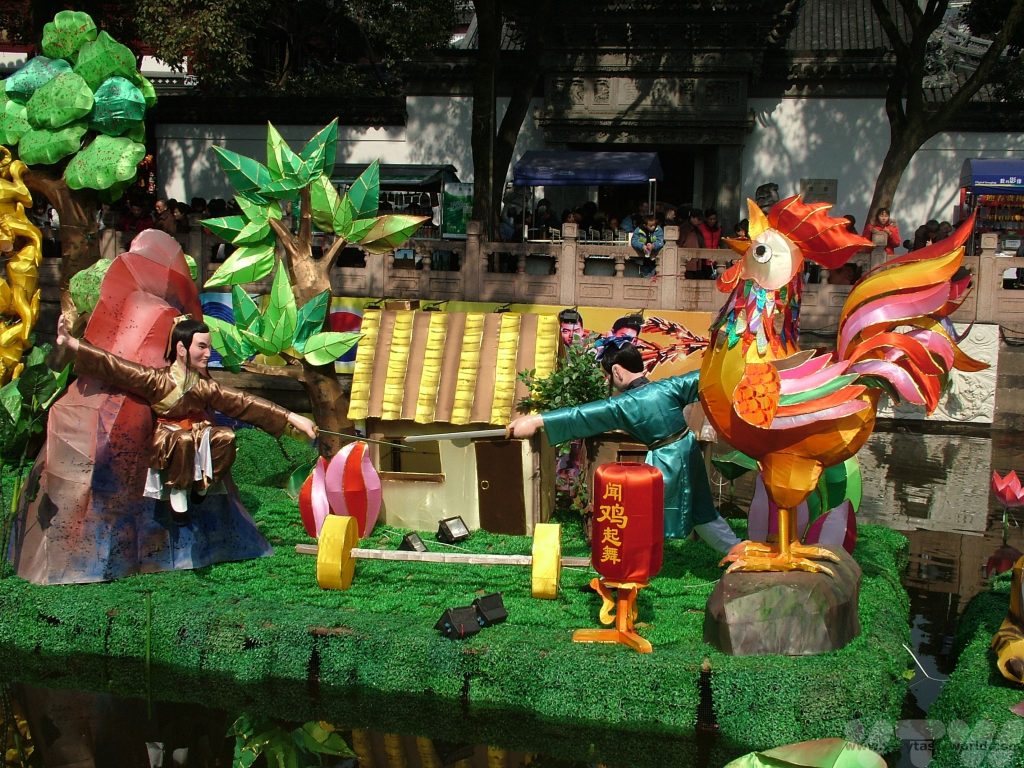
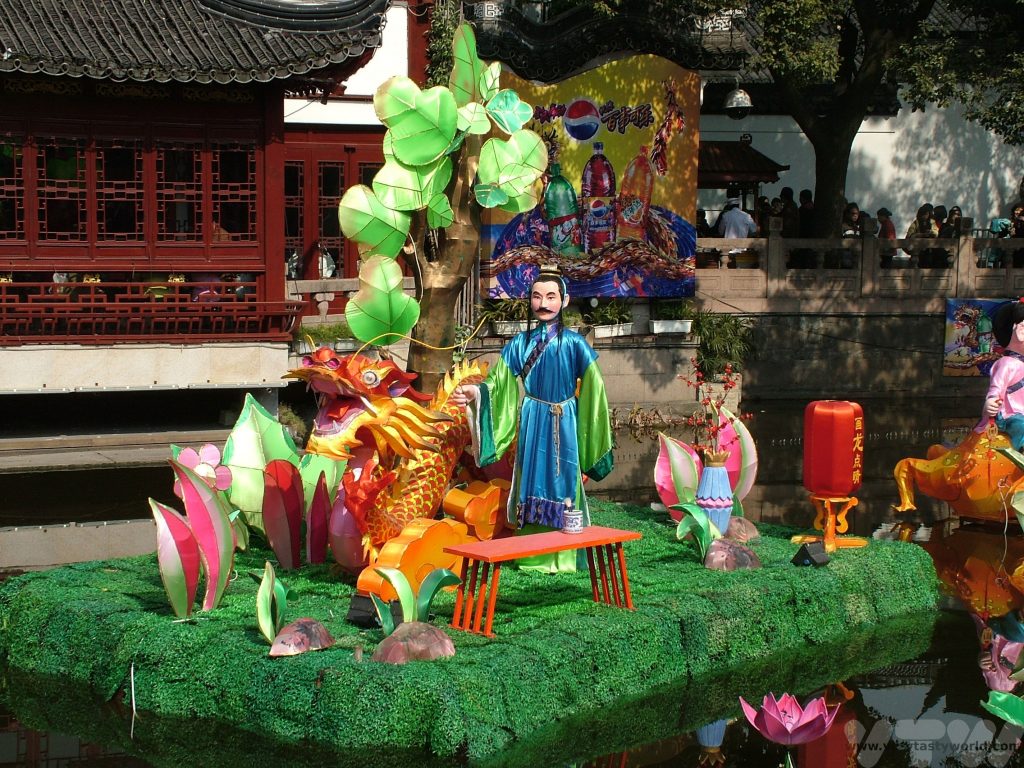
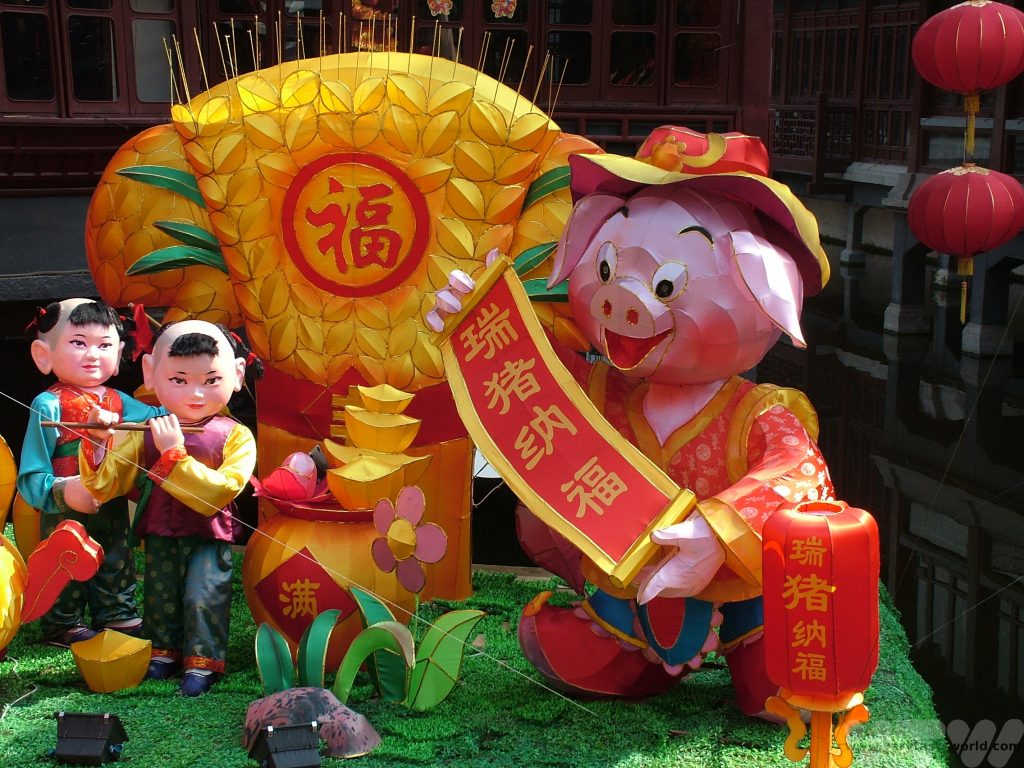
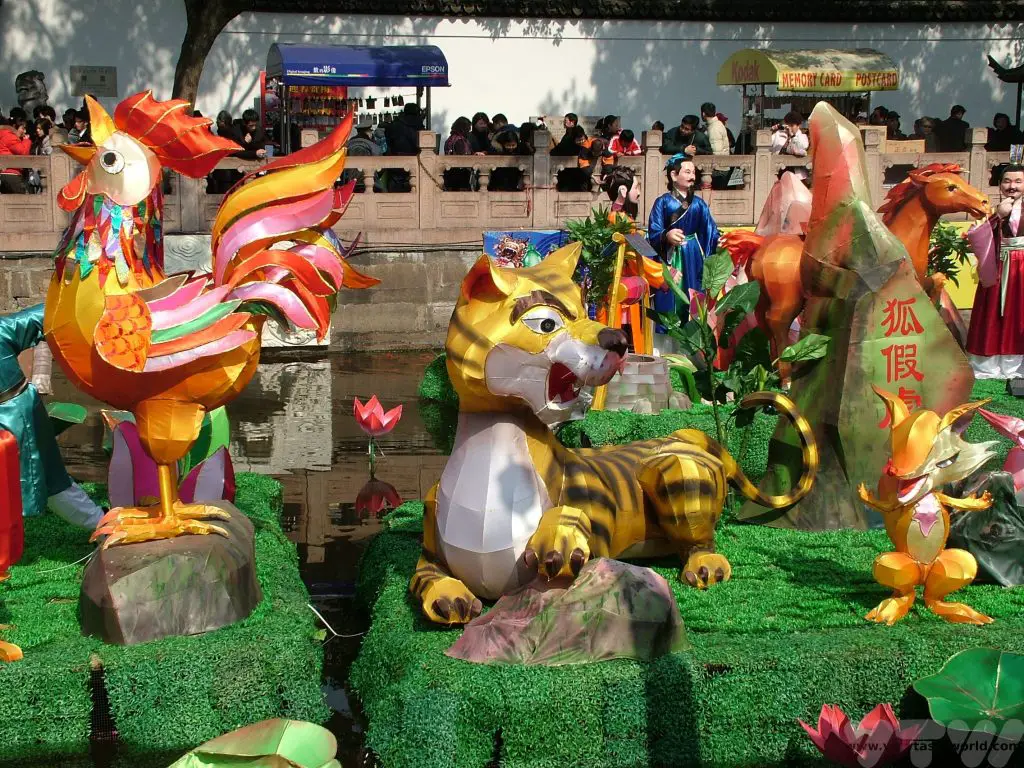
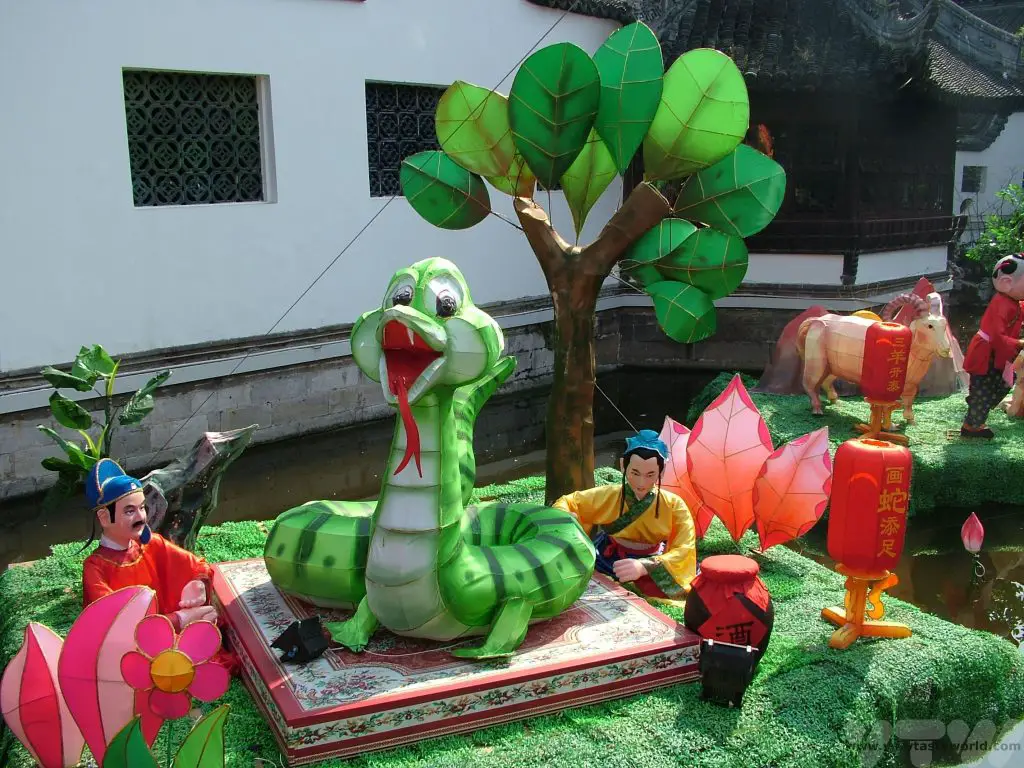
It’s also a lovely time of year because spring blossoms are often coming into bloom, especially in the southern part of the country.
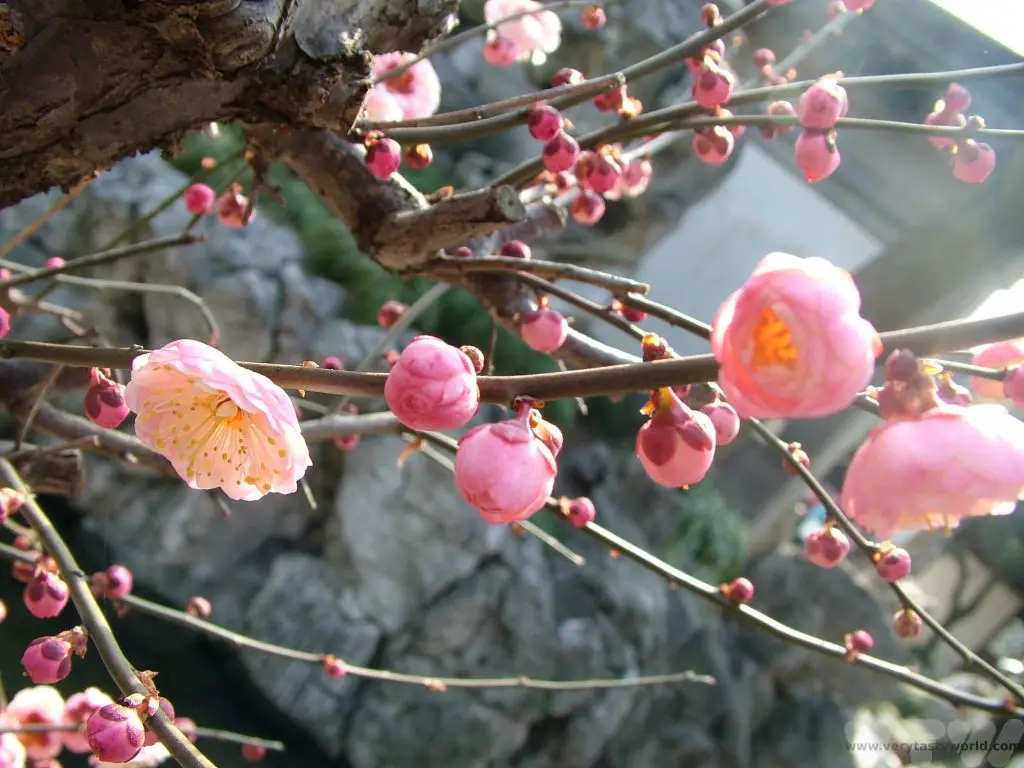
Food is an important part of Chinese New Year when families come together and enjoy the celebrations. We have spent new year with Chinese friends in the UK who served us a feast. Traditional dishes include a whole fish, this one cooked with ginger, garlic and spring onion. It’s important that the fish is served whole – head to tail represents the start and end of the year and it also represents plentiful food and good luck.
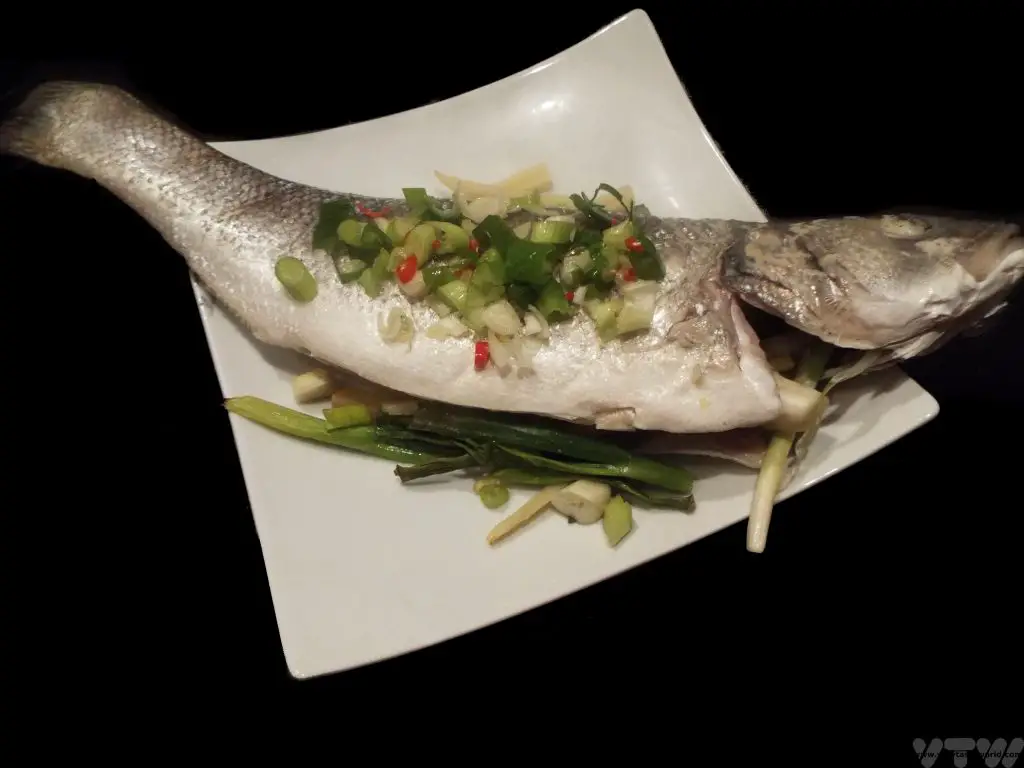
This fish dish is easy to cook and tastes delicious. There’s a recipe here. Catfish and carp are popular fish.
We also sat around the table and made jiaozi (dumplings). These represent old-style Chinese coins which symbolise prosperity throughout the year. It’s great fun to sit around a table together drinking beer and chatting as you fill the dumplings, which are later boiled, steamed and/or fried and then enjoyed at midnight. Sometimes a gold coin is put inside one of the dumplings for a lucky recipient.
The dumplings can be filled using a variety of ingredients: minced pork and cabbage or chive (or cabbage and chive), chicken, mutton, prawns or fish are popular, as are vegetable fillings, such as mushrooms, cabbage, leek, spinach, and spring onions. Any of these ingredients can be combined. The dumplings are usually served with a dipping sauce. Soy sauce with vinegar and sesame oil is popular and gives a salt, sour, smoky flavour to accompany the dumplings. You can make it to taste but it’s worth noting that you only need a tiny amount of sesame oil – just a few drops – as it has an incredibly intense flavour. Some dipping sauces add a dash of chilli oil to provide heat.
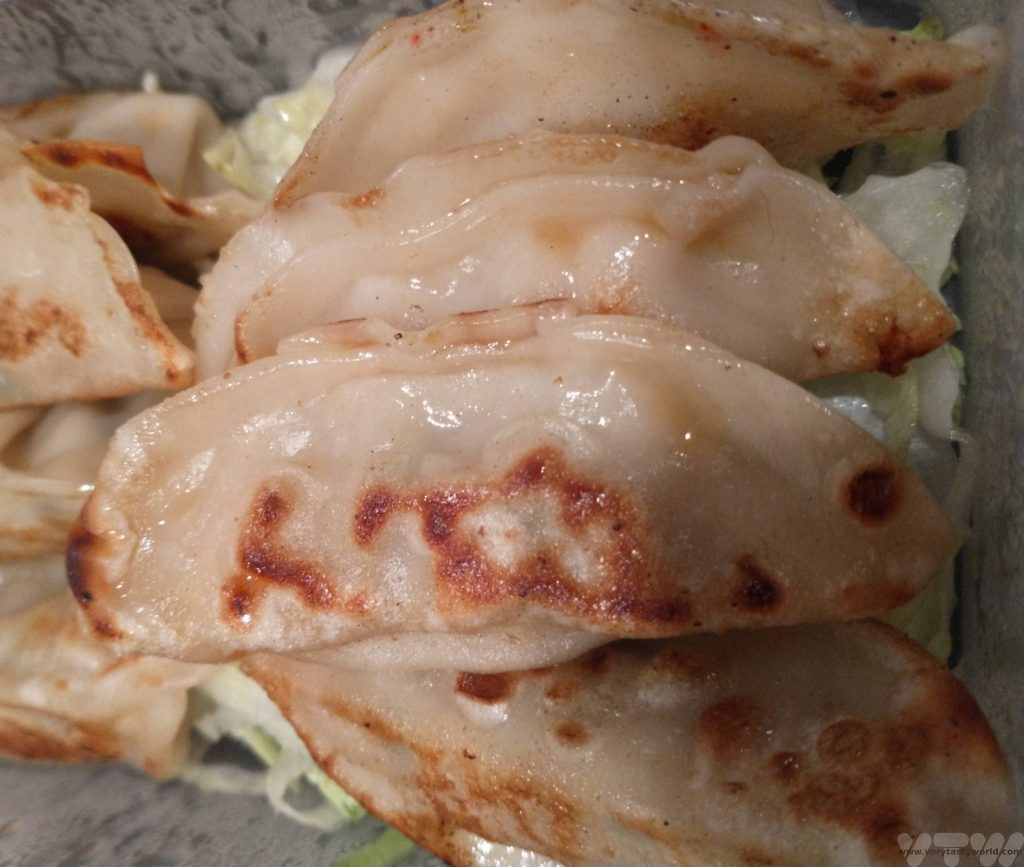
Other traditional foods include noodles, which represent longevity (due to the length of the noodles) and happiness as well as spring rolls which represent wealth. Sweet dishes include glutinous rice cake which apparently ensure you can aim for a higher position in life/work (and hence the prospect of a better income) and sweet rice balls which represent family harmony. These, particularly, are eaten throughout spring festival.
Although the highlight of the celebrations revolve around the lunar new year, Spring Festival actually lasts for a fortnight. It begins on the new moon and ends 15 days later on the full moon. The last night is known as the Lantern Festival. Red lanterns can be seen everywhere towards the end of the celebrations. This can be a bit confusing as during the rest of the year red lanterns will often indicate that the establishment is a restaurant.
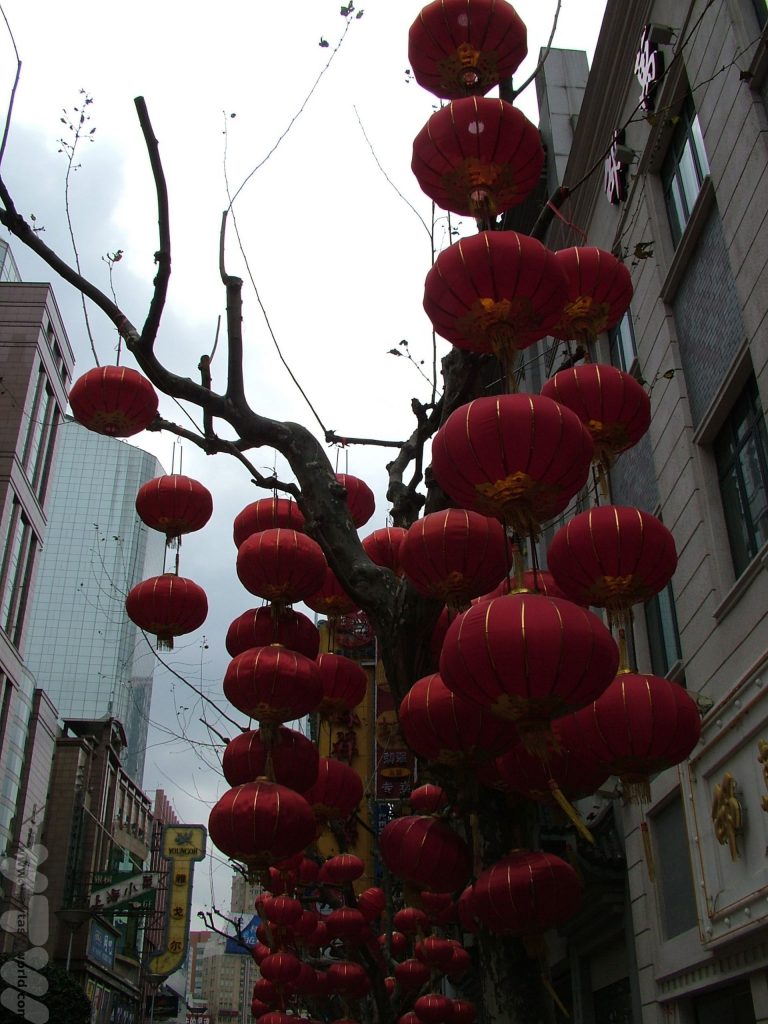
We were lucky enough to be in Xi’an on the last night of Spring Festival some years ago and went along to the Big Wild Goose Pagoda to join in the celebrations. We had never seen so many fireworks – they started at 6pm and went on till midnight – you could see fireworks in every direction you looked – and hear firecrackers. (In recent years, use of fireworks has been reduced or banned for environmental reasons.) The atmosphere was terrific – everyone was incredibly friendly on this happy occasion – and it was very much a family event.
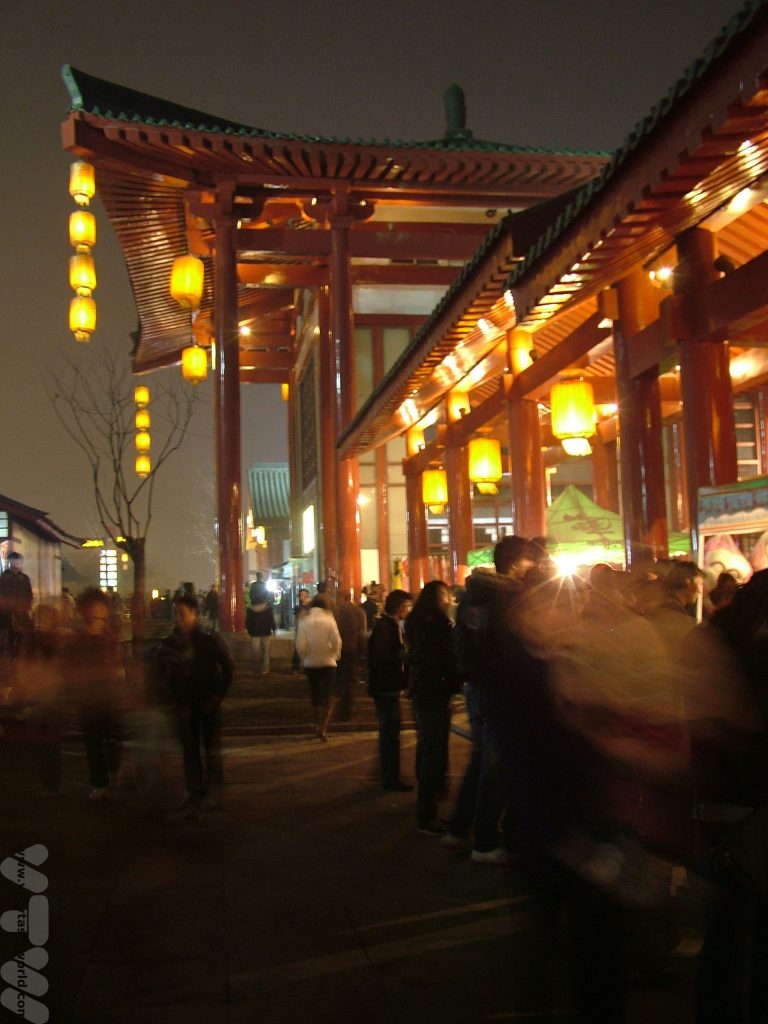
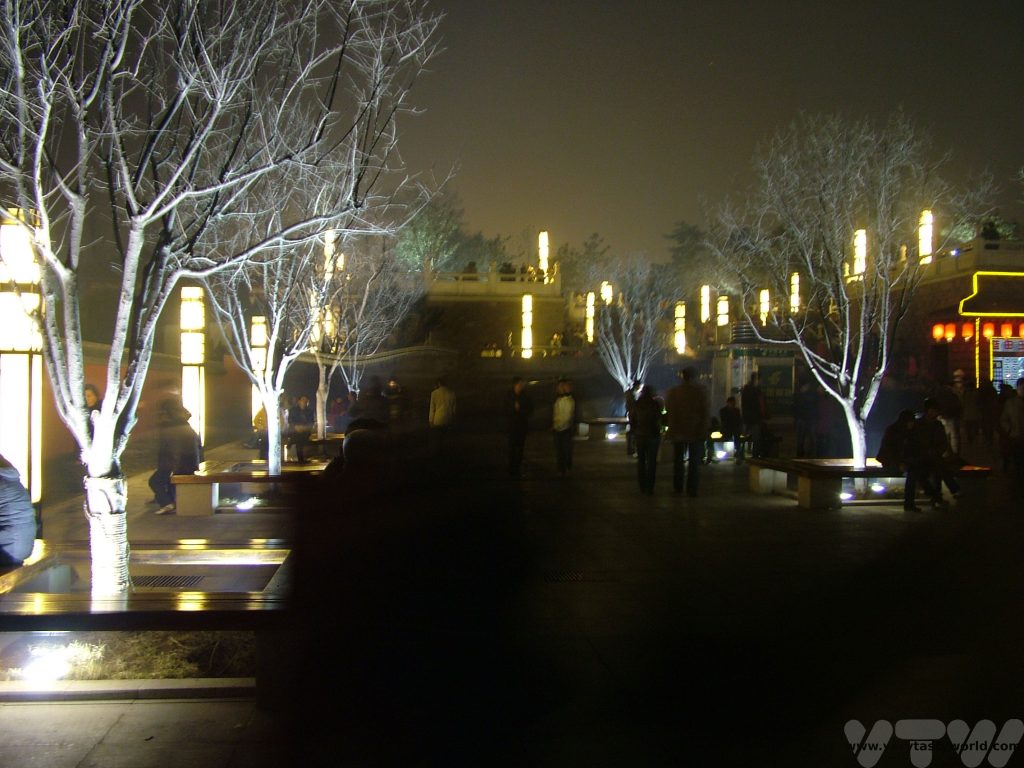
Xi’an has a dancing fountain – it has the form of a T shape that is about 50m across and 100m long. It’s located on the north square of the Big Wild Goose Pagoda. Every night a variety of music that ranges from traditional Chinese to Western classical and Cantopop plays – and the fountain dances along, forming a colourful waterscape. All the water drains away immediately into a reservoir to be stored for the next show. The timing of the show varies depending on the season so, if you are visiting the area, it’s worth checking out the timetable so as to be sure to catch it.

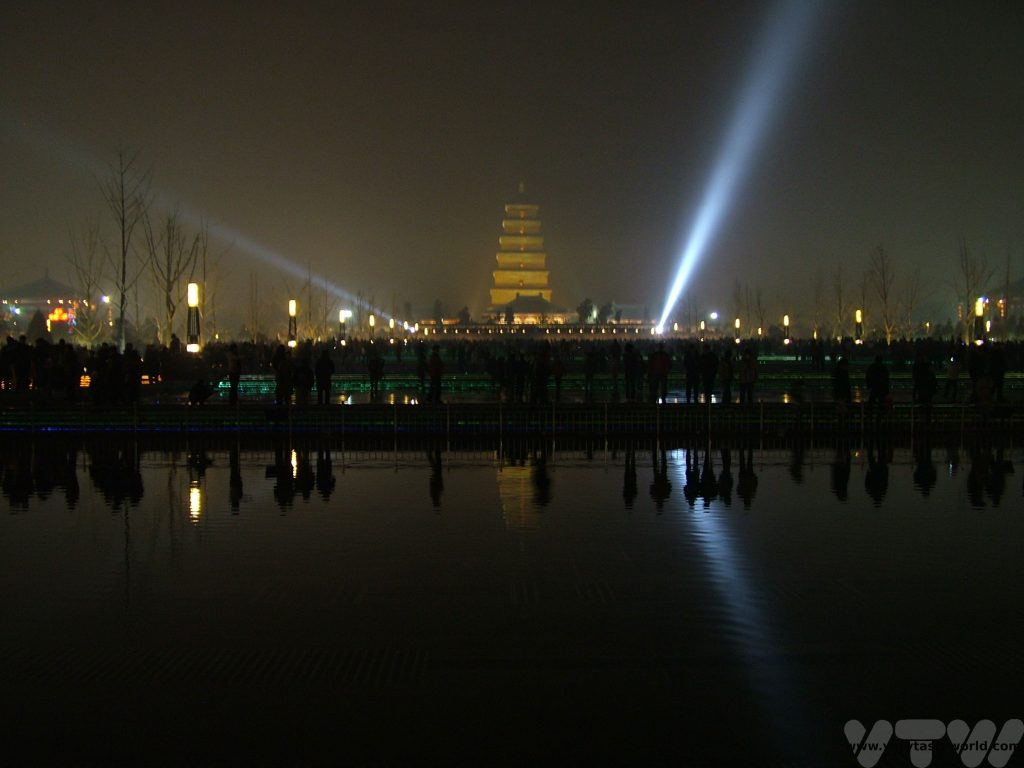
2924 is Year of the Dragon and begins on February 10th. Celebrations will ensue culminating on February 24th with the Lantern Festival.
The animals associated with the years are based upon the Chinese horoscope. All twelve signs of the Chinese zodiac have different symbols and it is thought that people’s character traits can be reflected in those born in a particular year.
The personality traits for someone born in the Year of the Dragon could be deemed to be strong and independent but maybe seeking love and support – impulsive adventurers. The characteristics of Very Tasty World’s founders could be reflected in their zodiac animals because VTW has a compassionate, generous and diligent Pig associating with a sharp, smart, recondite cheeky Monkey.
Gong Xi Fa Cai! Or Gong Hei Fat Choy!


Haggis with Neeps and Tatties
Scotland’s National Dish
There are many reasons to visit Scotland. The landscape is nothing short of spectacular whether you are visiting the highlands, the lowlands or the coast.
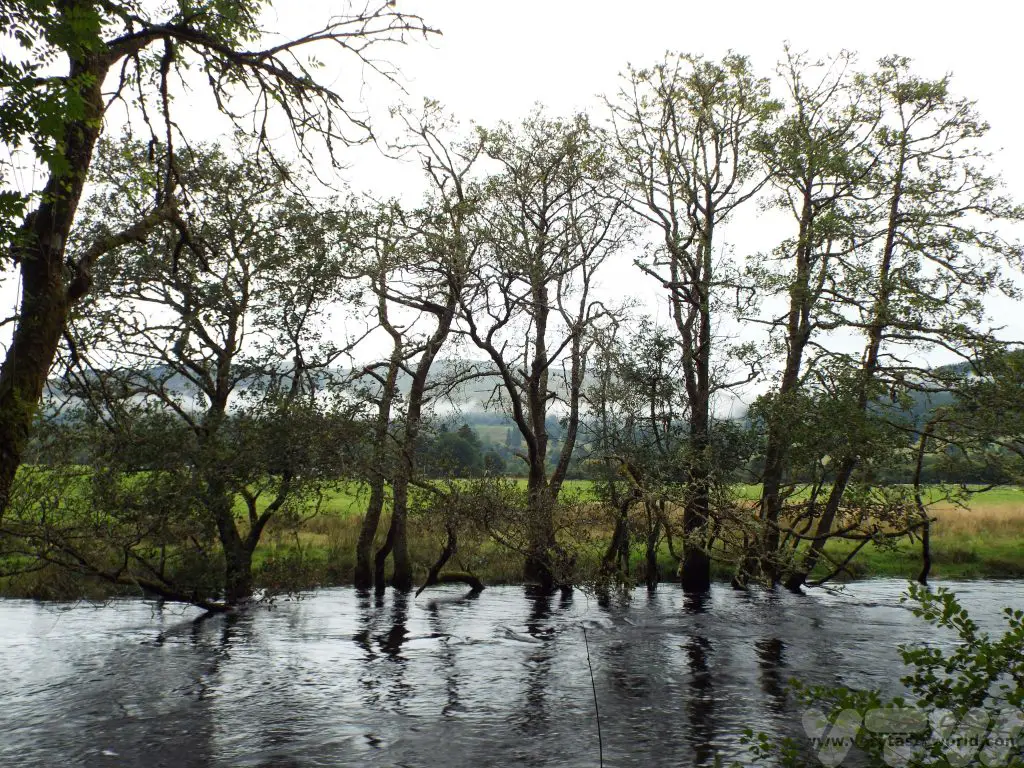
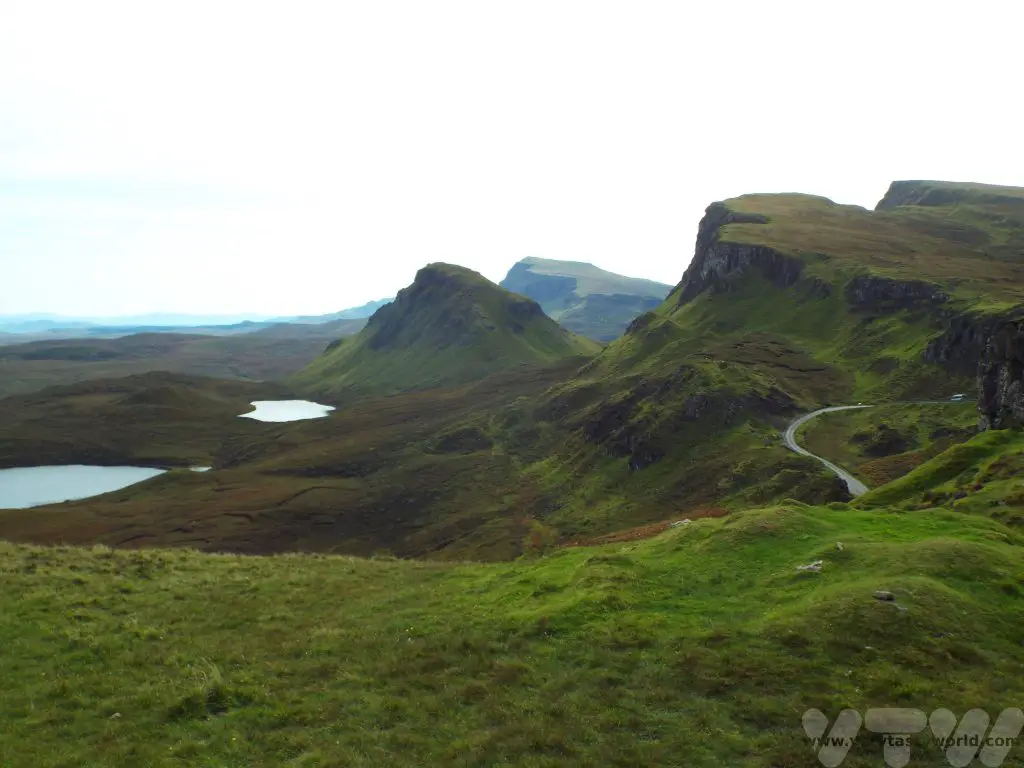
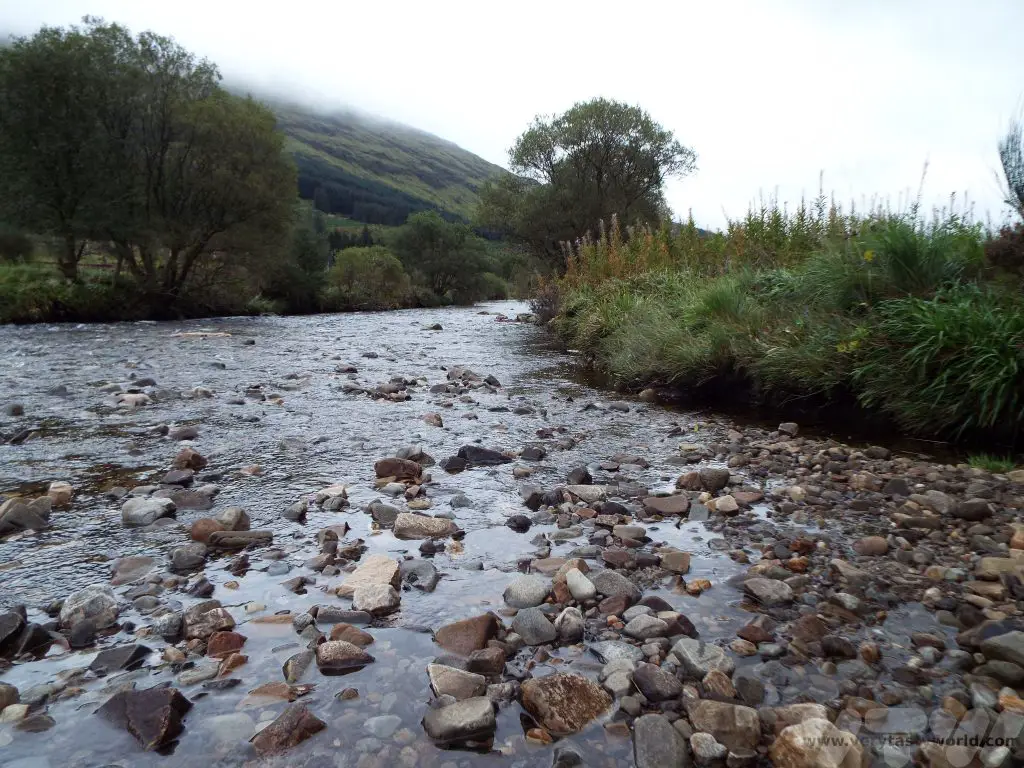
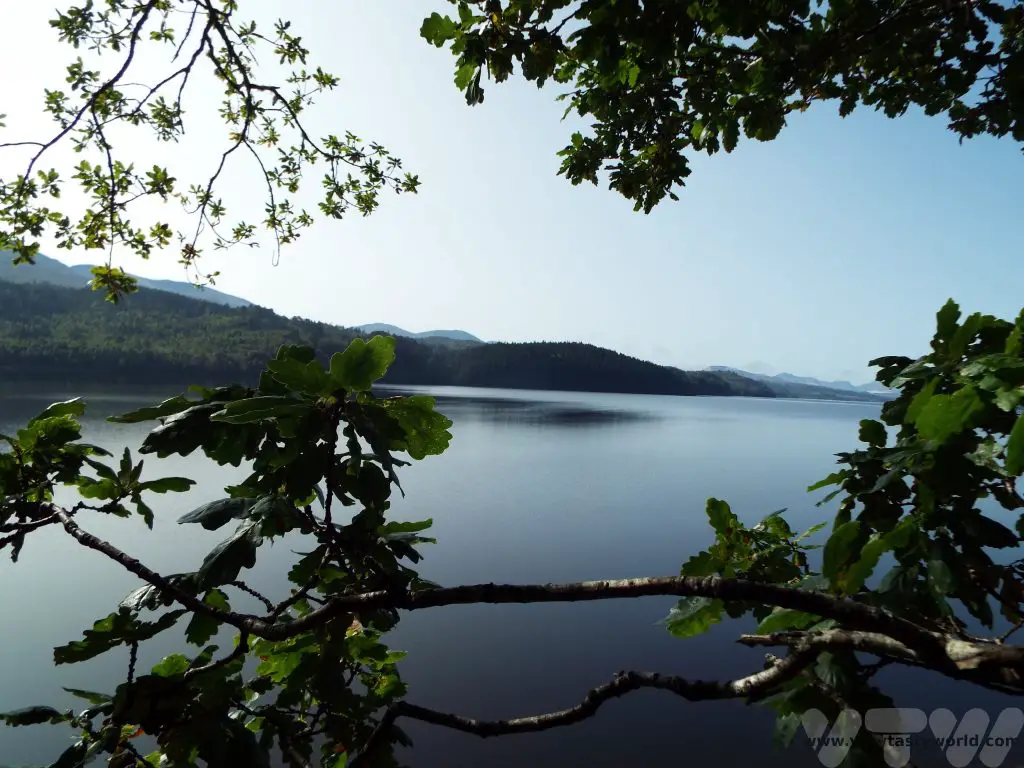
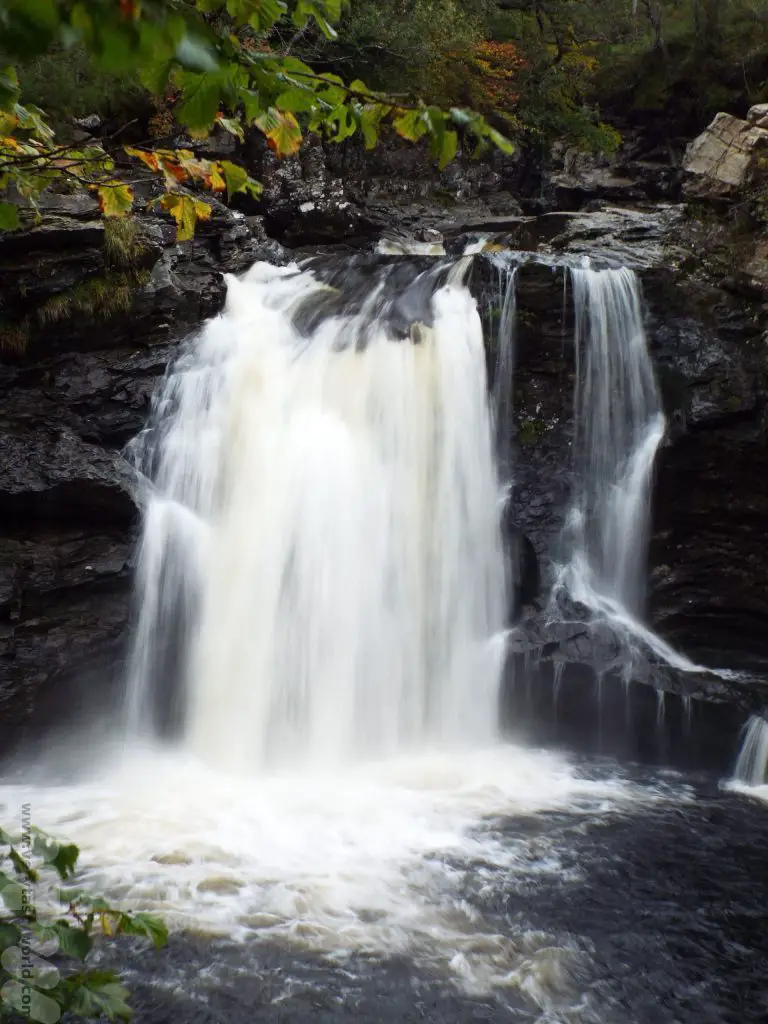
The country has a long and fascinating history and the towns and cities, particularly Glasgow and Edinburgh, have an enormously rich cultural heritage. It even boasts a famously elusive monster that apparently dwells in its biggest lake, Loch Ness.
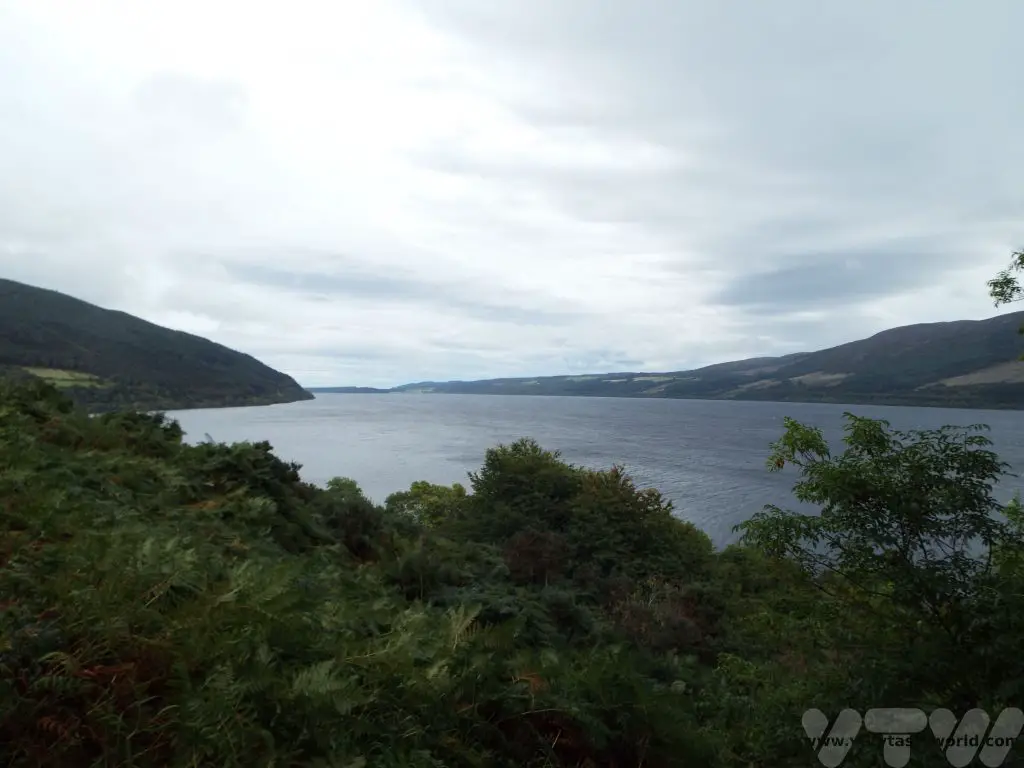
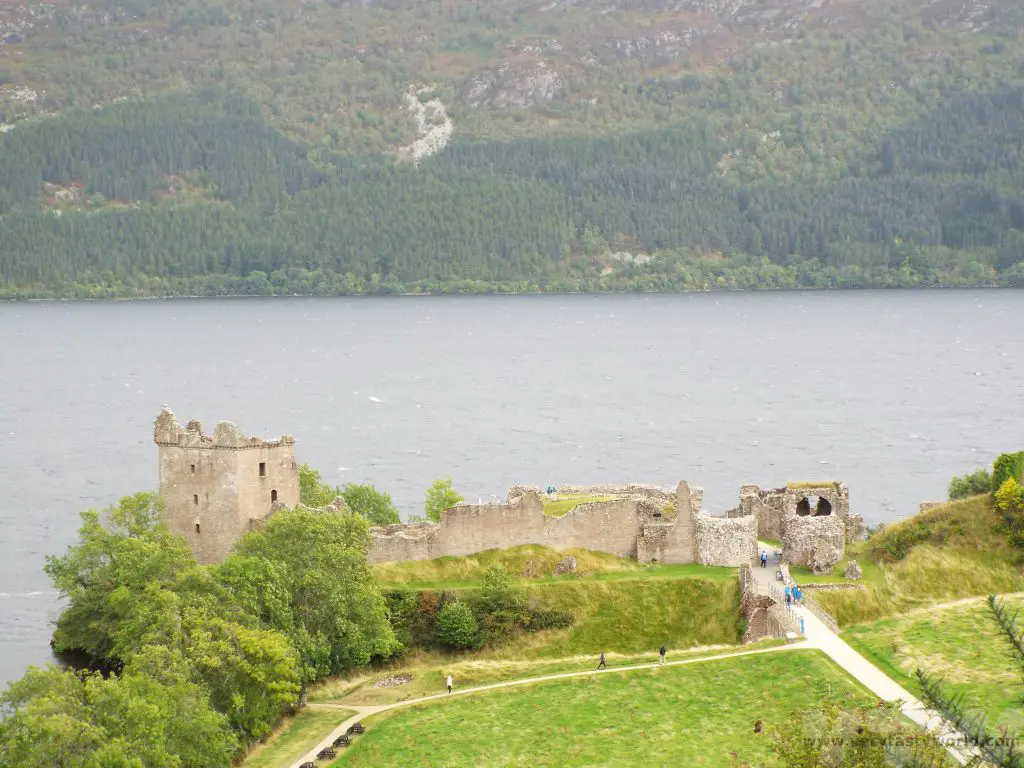
Food-wise, Scotland has so much to offer. With a long, beautiful and often dramatic coastline, the seafood is top quality. With plenty of grazing land Scottish meats are also fantastic – notably the beef, pork and lamb. And then, of course, there’s the whisky (always spelt whisky, not whiskey) – with distilleries scattered all over the country.
Haggis with Neeps and Tatties
Scotland’s national dish is haggis.
The first rule of haggis is: do not think about haggis.
The second rule of haggis is: do not think about haggis.
Haggis is comprised of the heart, lungs and liver of a sheep, all ground up together, mixed with oats and spices, and then boiled inside the stomach of a sheep. Yes, it is basically boiled offal. And anyone who has ever tasted nasty grey liver which had been boiled until it could bounce for their school dinners are likely to have been put off offal for life. Offal does have a strong flavour and, when cooked badly, a horrible texture. Haggis is great because it uses all parts of the animal to the full – nothing is wasted – which is as it should be. And having tasted it (while trying very hard not to think about it)… it is genuinely delicious. Maybe it has an additional ingredient of magic because those components shouldn’t work and yet they really do.
Vegetarian haggis is also available for vegetarians/vegans or those who really can’t stomach the idea of stomach-boiled-offal. Vegetarian haggis uses the same oats and spices combination but replaces the meat with nuts and seeds. It tastes the same as conventional haggis but has a different texture that is really nutty and also absolutely delicious.
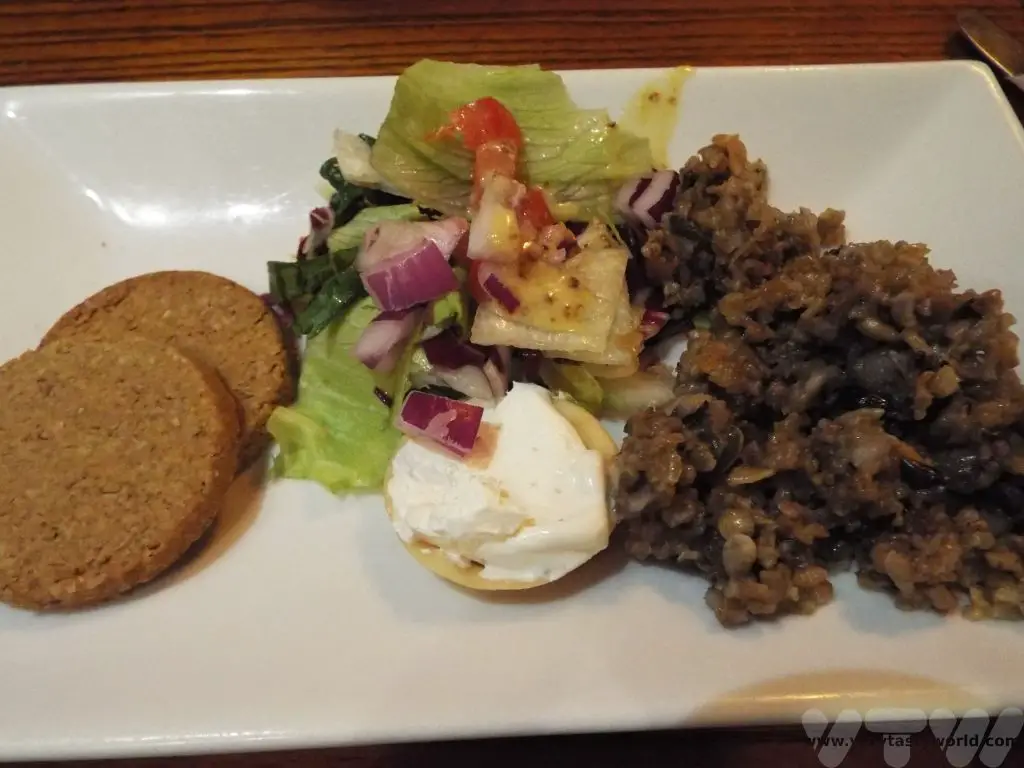
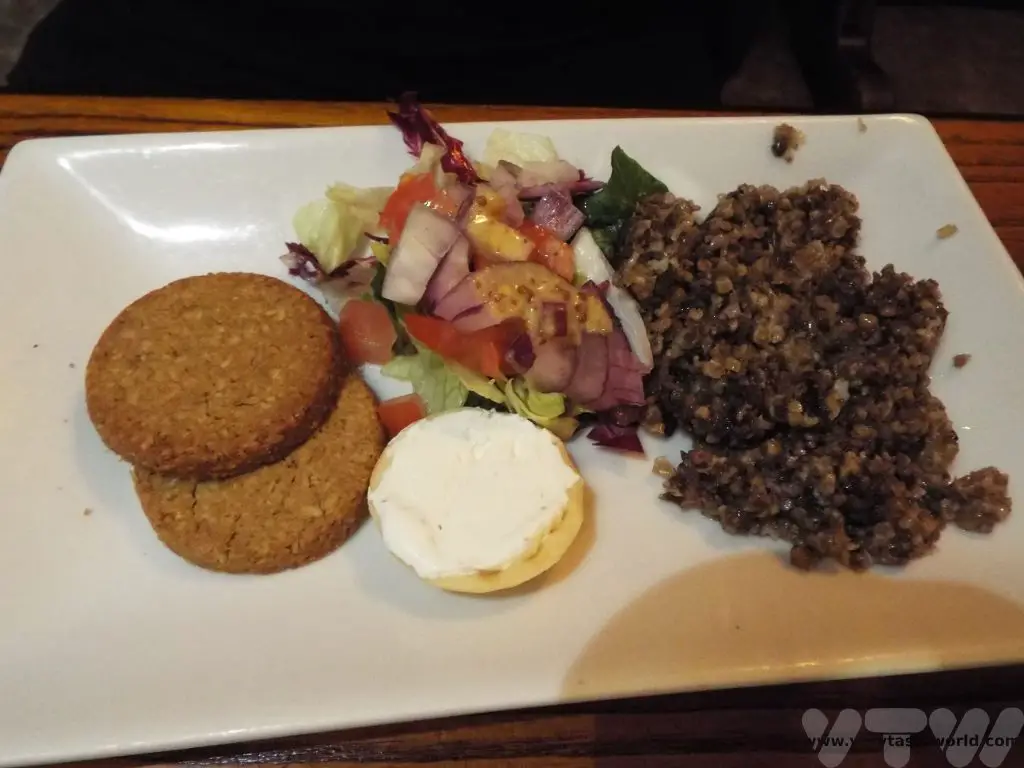
Haggis is traditionally served with neeps and tatties. Neeps are turnips (to the Scots but actually swede to the English and the Welsh – probably) and tatties are potatoes (for which there is very little possible ambiguity).
Both vegetables are boiled and either diced or mashed before serving. The whole meal is hearty and filling.

Poet Robert Burns wrote one of his best known poems ‘Address to a Haggis‘ in 1787, in which he proclaims his admiration for the “great chieftain o’ the puddin’ race.” It is traditional to eat haggis on Burns Night, the 25th January (the poet’s birthday), where the Burns Supper comprising haggis is consumed along with some good whisky. Burns’ poems are also recited. The tradition started a few years after Burns’ death when his friends set up a meeting to commemorate his life and works. There is a conventional order to proceedings including a ceremonial slicing of the haggis.
If you fancy making haggis, neeps and tatties, there is a recipe here.
It’s essential to enjoy the dish with a wee dram.
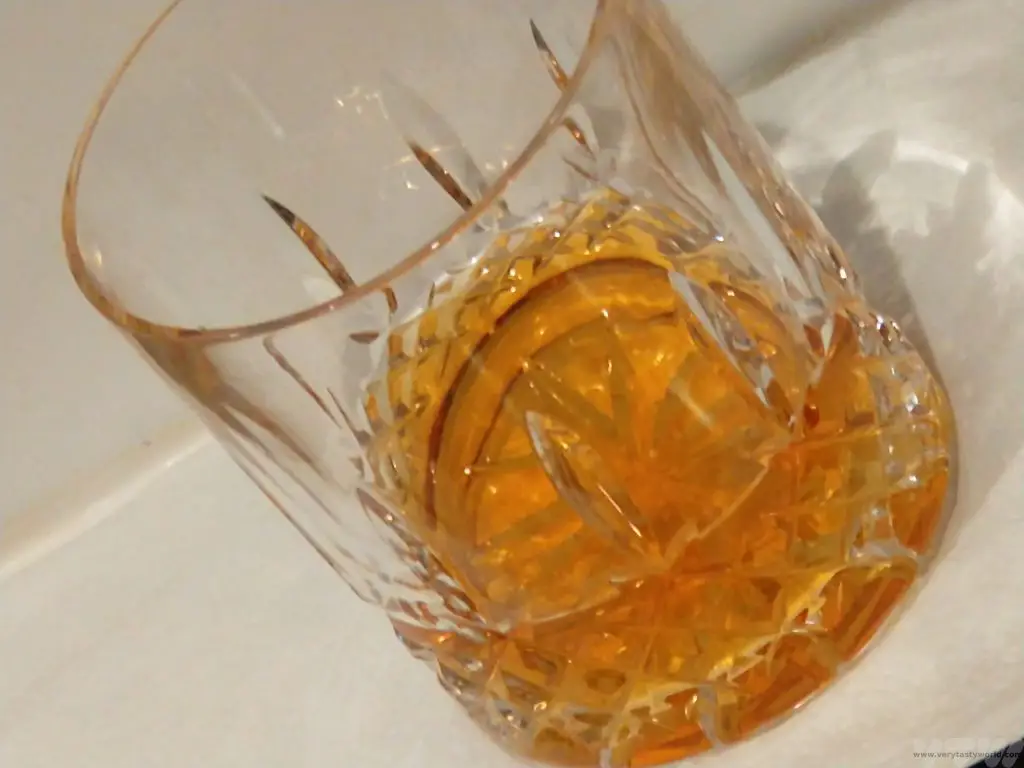
Related Posts You May Enjoy

Visiting The Dead Sea In Jordan
Taken with A Pinch of Salt
The Dead Sea is one of the strangest places on the planet. It is a salt lake located in a depression at the lowest place on earth, over 400m below sea level, which is bordered by Israel and the West Bank to the west and Jordan to the East. Visiting the Dead Sea in Jordan was an essential part of our itinerary on our journey through this fascinating country.
The area has an odd microclimate – it’s 10⁰C warmer at the coast than in the rest of the country. And the Dead Sea really is dead. At around 35% salinity it can’t support any life. Any unfortunate fish that happens to swim in there from the river Jordan lasts but moments. There is no activity on the water either – you don’t see any boats or water sports. The water is so saline it basically destroys machinery. The only thing you can really do there is bathe. And bathing in the Dead Sea is undoubtedly an experience.
The north end of the sea is mainly comprised of resort hotels of varying degrees of poshness, which have private beaches where you can do all sorts of spa type stuff, and the rest is rather beautiful coastline. We travelled along the shore on the Jordanian side on our way to the rose red city of Petra.
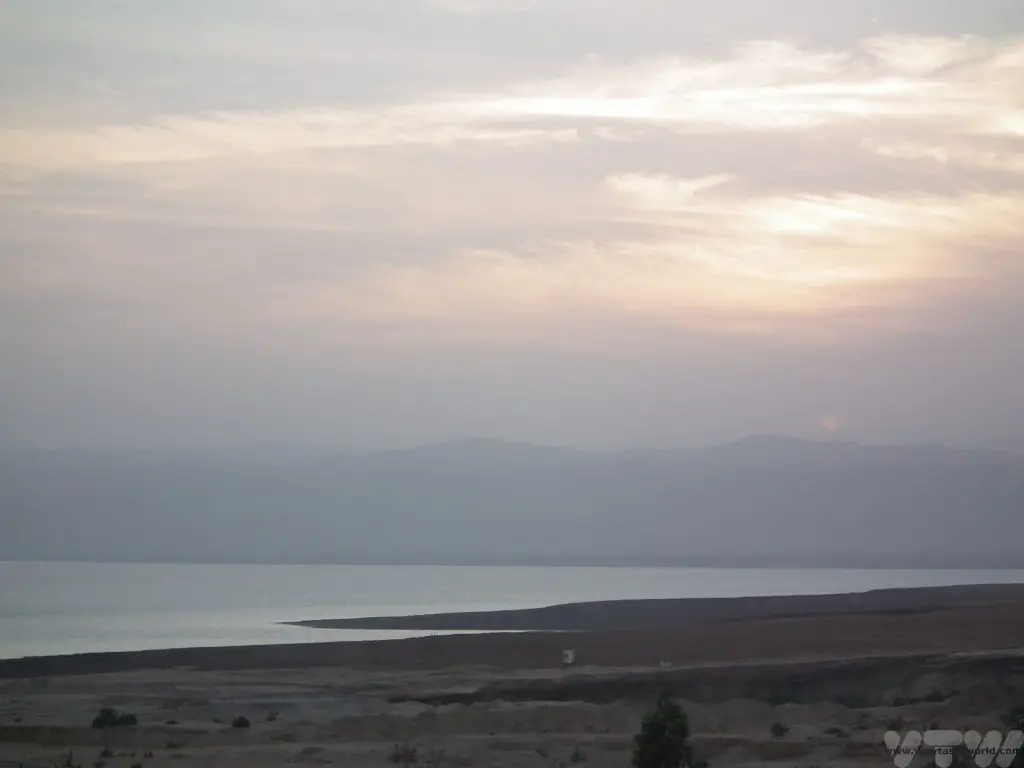

There is a pillar of salt, considered by locals to be Lot’s wife from the biblical story.
We decided to stay at a resort for just one night. The hotels on the north coast in Jordan are fairly self-contained and you are pretty much tied to the activities and restaurants there. For example, it was difficult for us to find somewhere to eat at establishments outside the resort and outside restaurants are more likely to cater to tourists. Our hotel had its own beach located about a two minute drive via a free shuttle bus (if you were lazy) or a ten minute walk from the swimming pools. Initially we wondered why there were pools when the purpose of our visit was to swim in the sea but it became clear later when we bathed.
Eternal Youth and Beauty?
Dead Sea mud apparently contains all sorts of minerals that are supposed to do wonders for your skin. And, like the Blue Lagoon in Iceland, you can buy a plethora of products containing miraculous mud at hugely inflated prices that are guaranteed to help you achieve eternal beauty. Or something. We headed down to the beach and caked ourselves in free mud from a bucket by the water’s edge before heading into the sea.
Bizarre Bathing
When visiting the Dead Sea in Jordan we absolutely had to bathe. It is impossible to sink in the Dead Sea. You walk in and keep walking. And then, when the water is about at chest height, you take another step and realise that you should be able to touch the sandy floor, but you can’t, yet the water is still at chest height.
It is also impossible to swim in the Dead Sea. When trying to do a simple breast-stroke you are so buoyant that your bottom kind of flips up, pushing your face into the water, which is a really bad idea because if you get any water in your eyes it stings like crazy. You know that feeling when you’ve been chopping chillies and forget to wash your hands and then brush your eye? That burning agony? Well, it’s ten times worse if you splash Dead Sea water in your eye. The water feels oily and hurts like hell.
The easiest way to bathe is simply to float in a sitting position. It’s very comfortable. If you want to move around, sculling gently seemed to produce the required propulsion. We didn’t take pictures of ourselves reading books or anything but it really would be perfectly possible.
When you emerge from the sea you really need to shower off quickly and get all the salt off your skin and bathing suits. Any fabric splashed with water becomes stiff as a board and encrusted with salt. Fresh water showers are located on the beaches, not far from the shore, so that you can clean up quickly.
We’re not convinced that the mud did endow us with eternal beauty but bathing was an most definitely an interesting experience.
Natural Beauty of the Dead Sea
What was truly beautiful was the salt-encrusted shoreline.
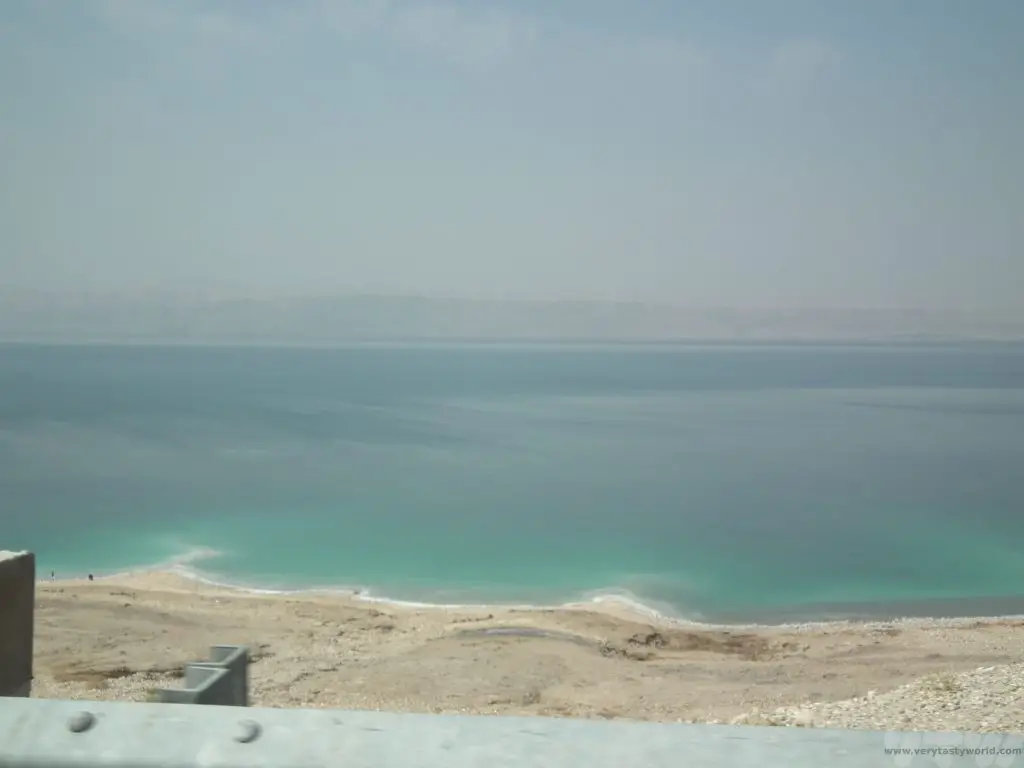
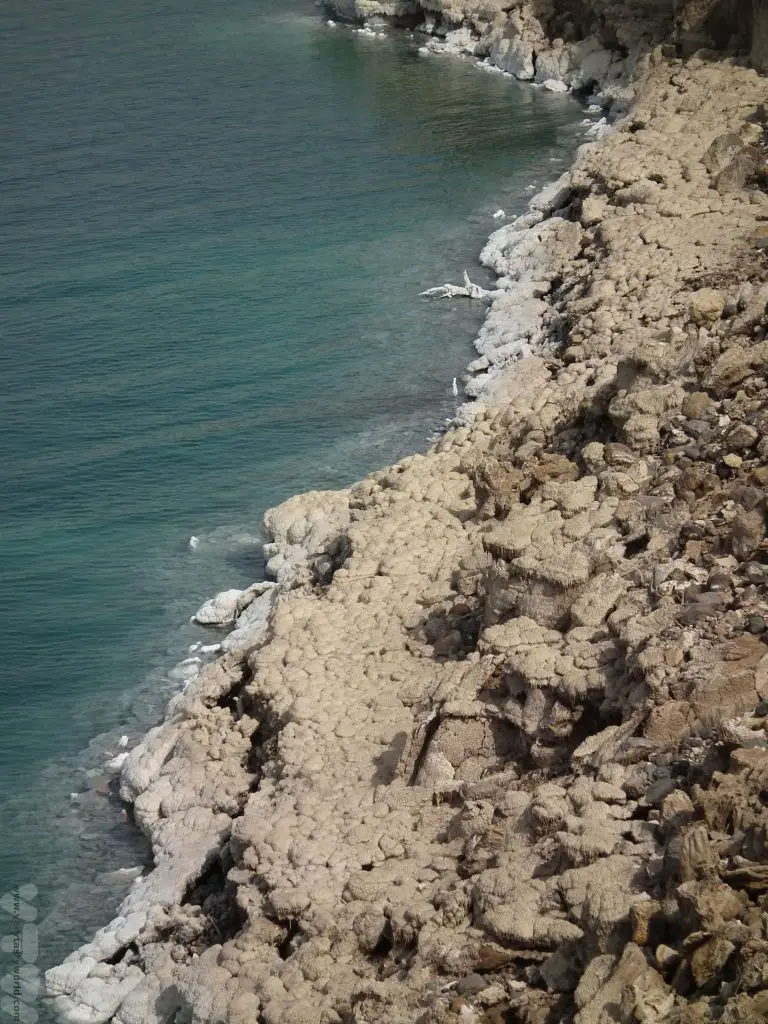
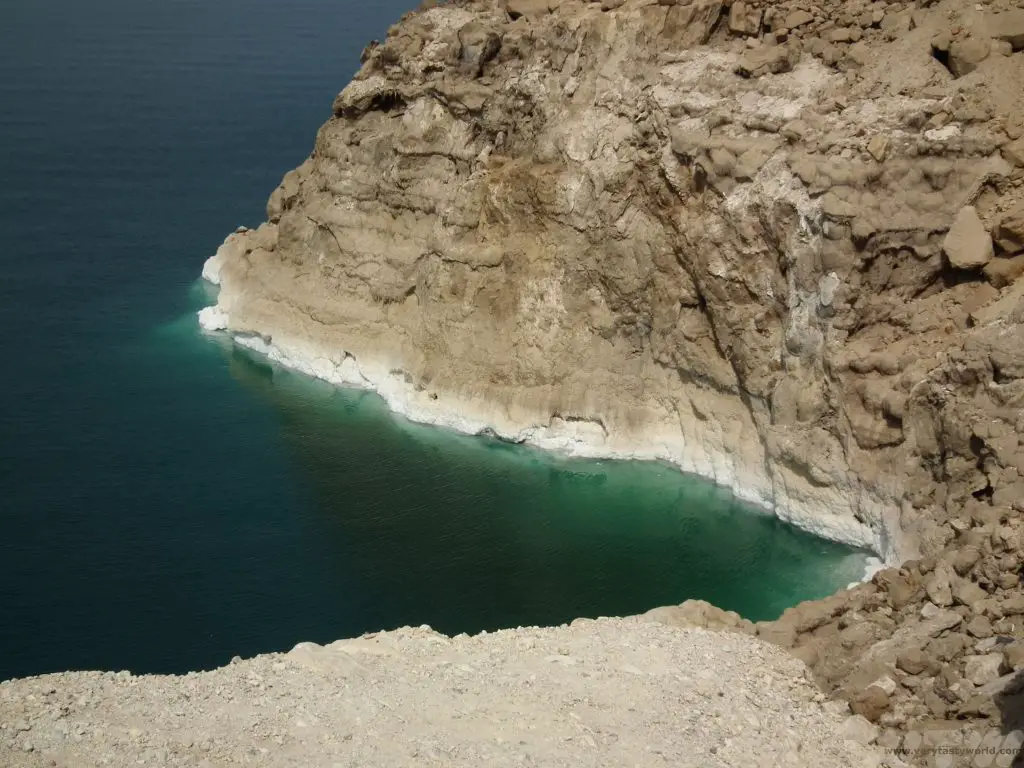

We did wonder whether Dead Sea salt was edible as most sea salt can be used for seasoning and preserving. However, the merest (accidental) taste of Dead Sea salty water will confirm beyond any doubt that in its basic form it tastes revolting. The mineral composition is very different to standard sea salt, and tastes extremely bitter, so processing is needed to remove these in order to ensure safe – and tastier – use for human consumption.
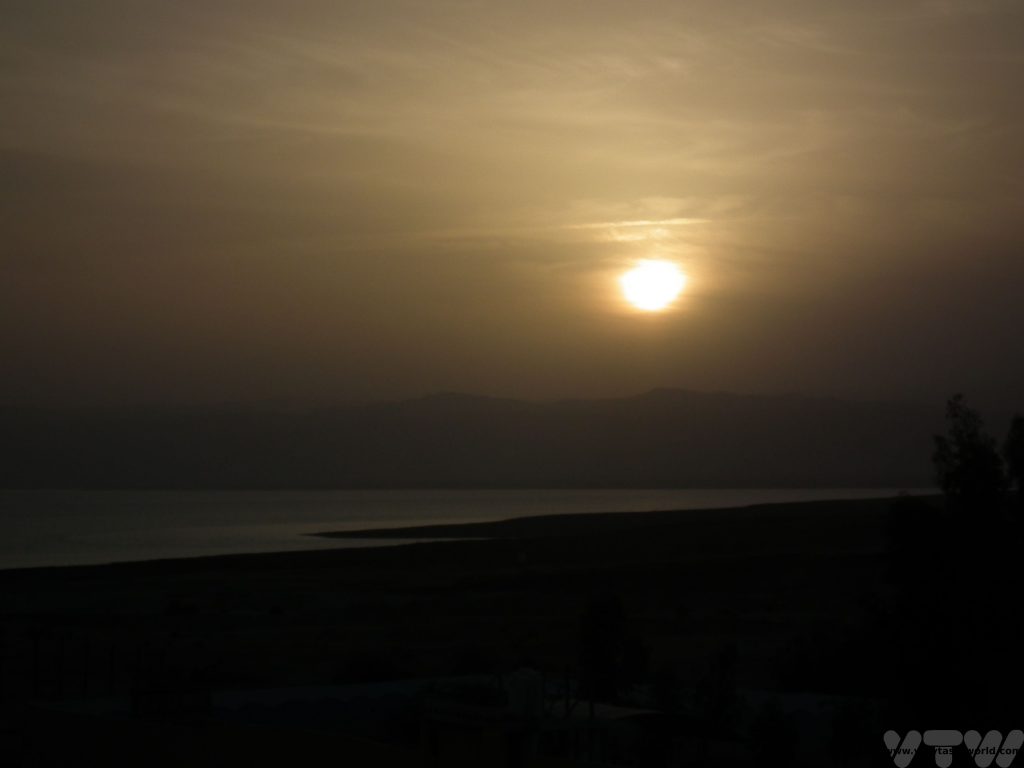

VTW Go Finland and Meet Leningrad Cowboys
They’ve been to America (Leningrad Cowboys Go America (1989)) and they’ve met Moses (Leningrad Cowboys Meet Moses (1994)) so VTW Go Finland is perhaps an appropriate foodie film excursion. Those curious about the Leningrad Cowboys band and their work with legendary low-key Finnish filmmaker Aki Kaurismäki should check out the review here before purchasing their cinematic output, including videos, for your education and pleasure.
While the band, instantly identifiable by their outrageously long and pointy quiff hairstyles and black winkle-picker shoes, have played gigs all over the world, one of their enterprises in Helsinki involves food and it is totally in tune (or out of tune depending on the gig in play!) with their unique musical style. Among their musical and lyrical thematic tendencies there are influences of vodka and tractors, both of which are also intrinsic their food.
Many years ago there used to be a Leningrad Cowboys Restaurant which had bonkers décor and a confusion of fusion menu that clashed cuisines from all over the world – where American assimilated with Asian, Mexican merged with Moroccan and Indian integrated with Italian – a broad range of flavours that shouldn’t have worked in so many ways but really, really did. It was there that we also discovered the joys of vanilla vodka straight out of the freezer. Quaffing Finnish spirits while sitting next to quiffing statues, who needs a pudding when you can combine your dessert and digestif in a scrumptious shot? We just had to make sure we could find our way back to the hotel at the end of the evening…
Sadly, it no longer seems to be there – we looked out for it on a recent trip to Helsinki – which is a shame.
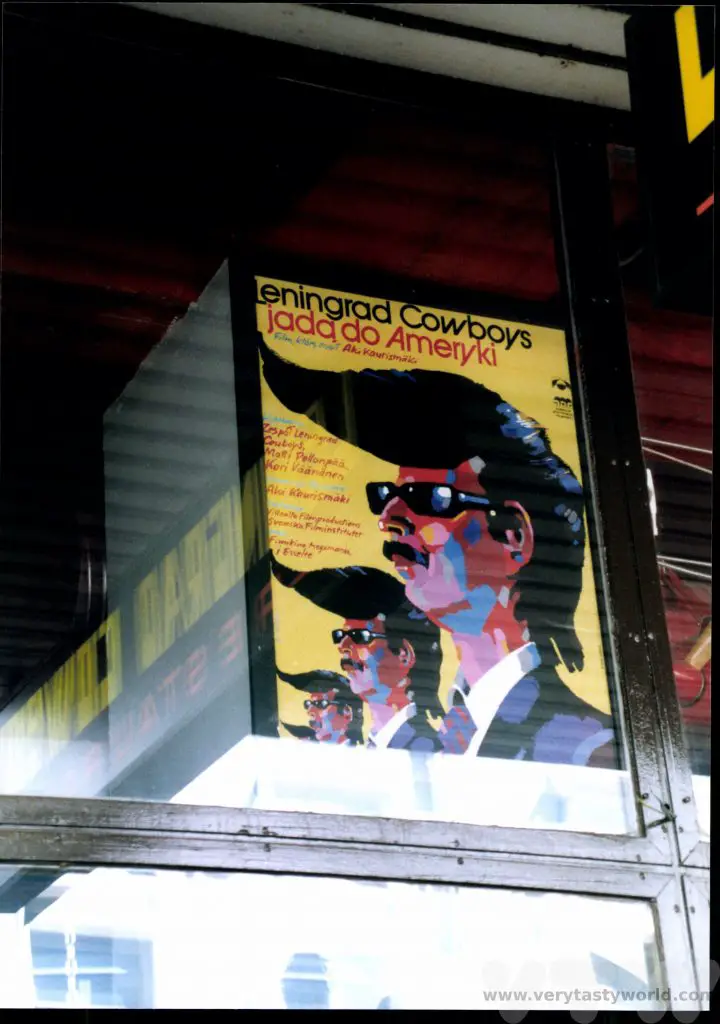
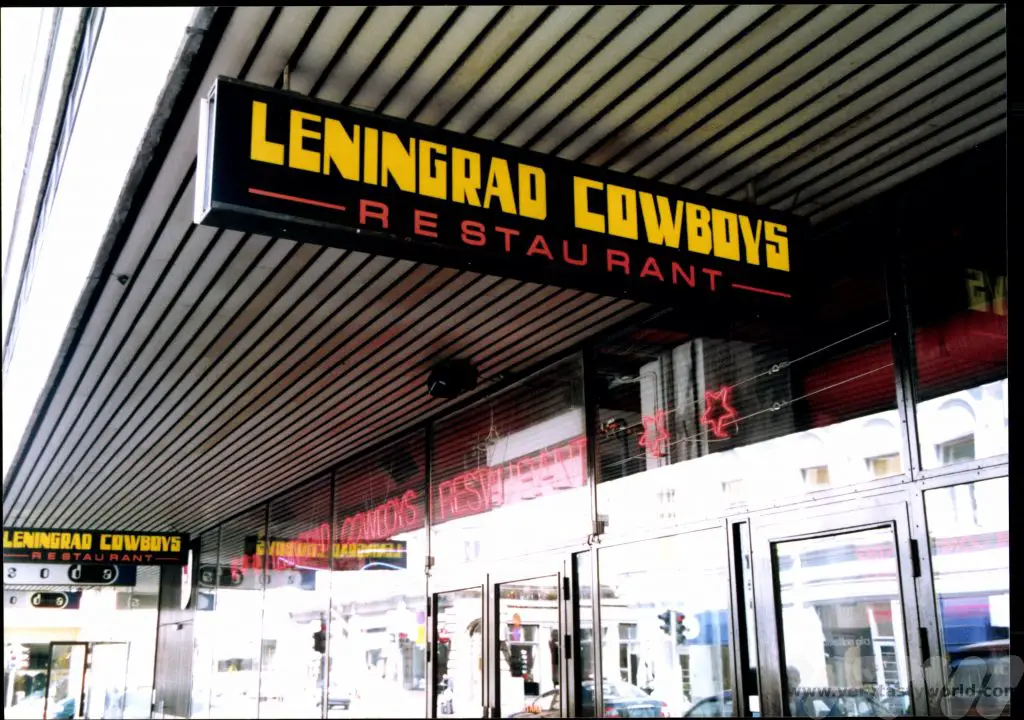
However, the Zetor Restaurant in Helsinki has been around for many years and continues to thrive. It takes its name from the leading Czech tractor brand – “The first zetor tractor, the Z25, was ‘baptised’ on 15 March 1946,” according to the official website – and takes the tractor-restaurant concept to a wonderful and surreal zenith. Yes, you eat your meal…. on a tractor or sitting around a tractor.

Zetor Restaurant is owned by Aki Kaurismäki and designed by one of the Leningrad Cowboys. Rural kitsch bliss. Zetor declares itself to be a “110% Finnish restaurant,” and who are we to argue? Also, as is befitting a classy restaurant, the fare on offer comprises signature dishes from their very own recipes and these are described in a highly distinctive manner: perhaps Oula’s sautéed reindeer, The Cackle of Kaivopiha, The weather may change but the vendace stays the same or Karelian glory, which they claim is ‘close to deserving a place on UNESCO’s heritage list.’
It’s worth noting that Crazy reindeer from Levi, Lapland, Mummy’s boy’s meatballs and Grilled liver all contain alcohol. The essential on offer is the drool-worthy Tractor Man’s steak: ‘Tender sirloin of beef, bacon baked on the bonnet of a Zetor tractor with honest garlic butter as fuel. As well as country potatoes with smoked garlic mayonnaise, mousse of smoked reindeer and vegetables as eye candy. That smoked reindeer is welcome as more than eye candy.’
Don’t forget the drinks, which include a wide variety of strong Finnish berry wines: Lingonberry 21 %, Cranberry 21 %, Blueberry 21 %, Blackcurrant 21 %, Sea Buckthorn 21 %, Cloudberry 15 %.
Something to take a shot at. Or two.








